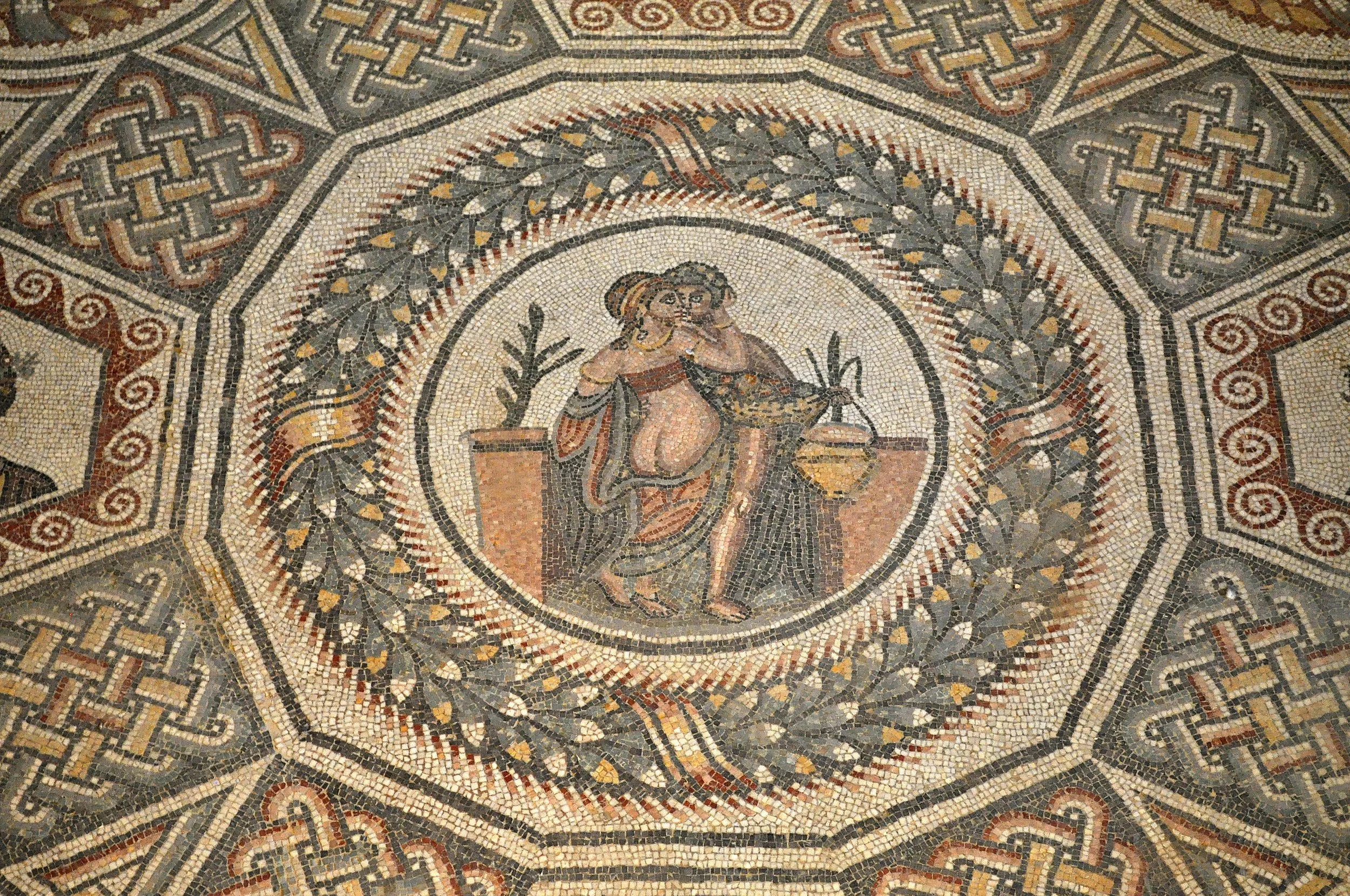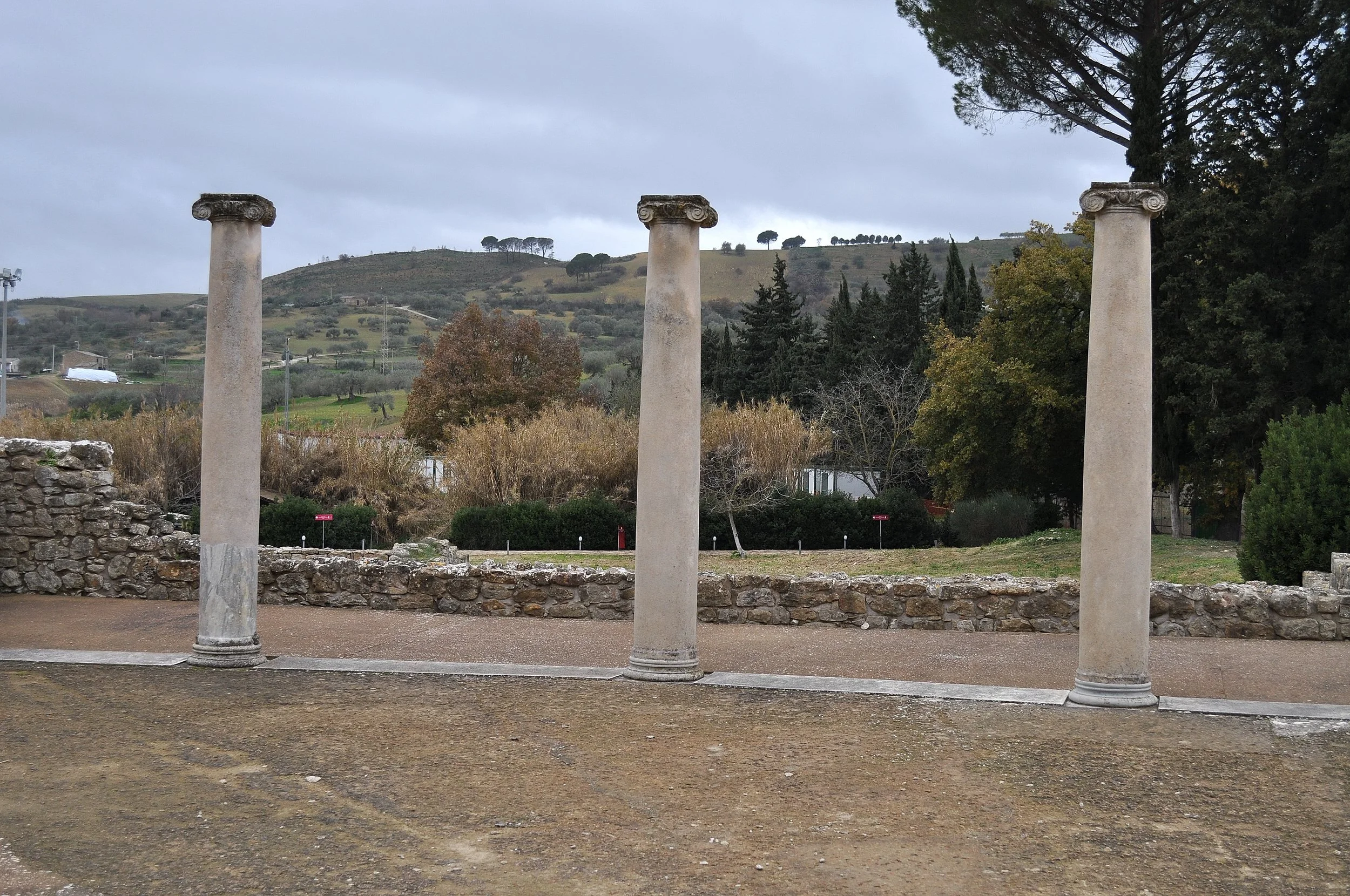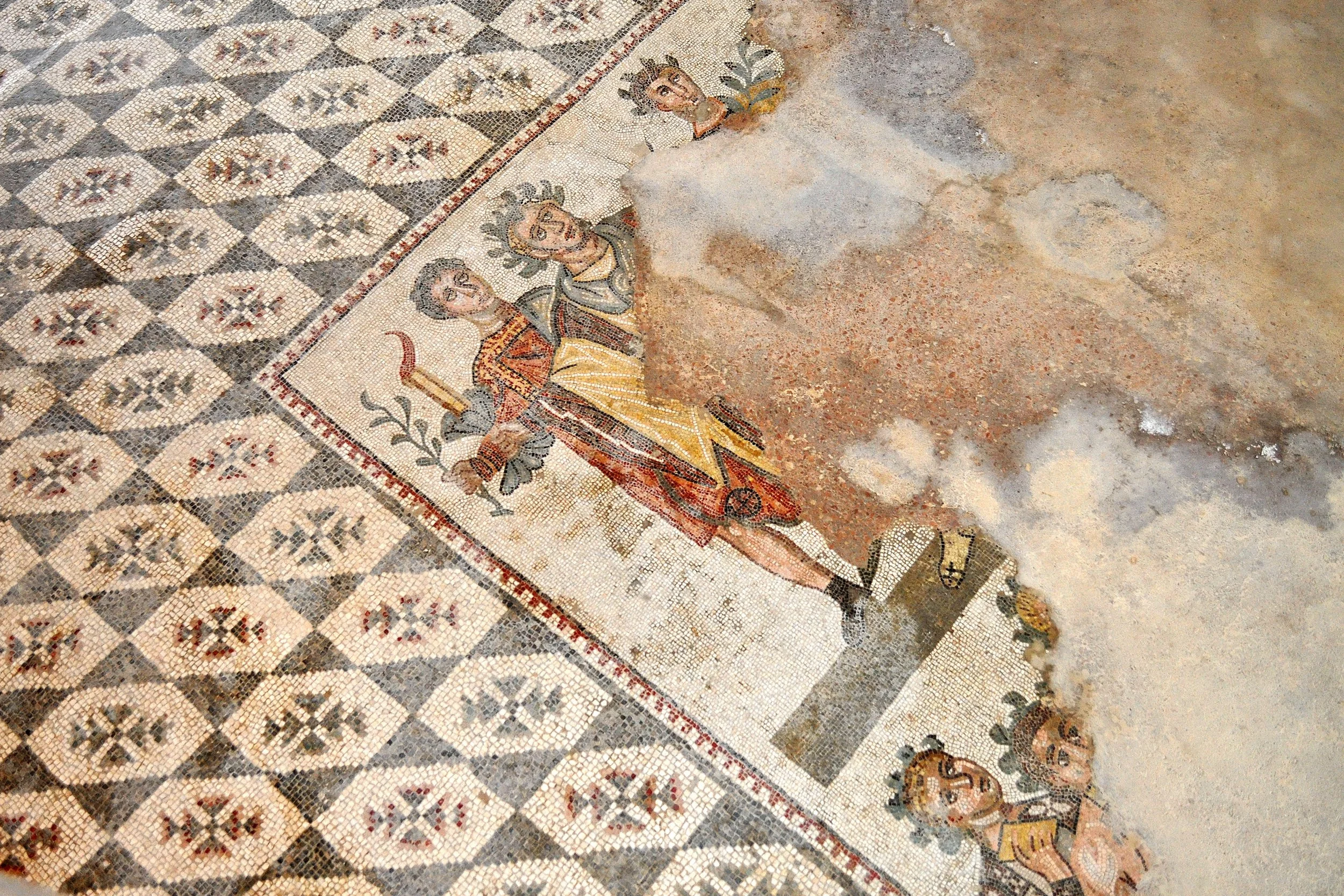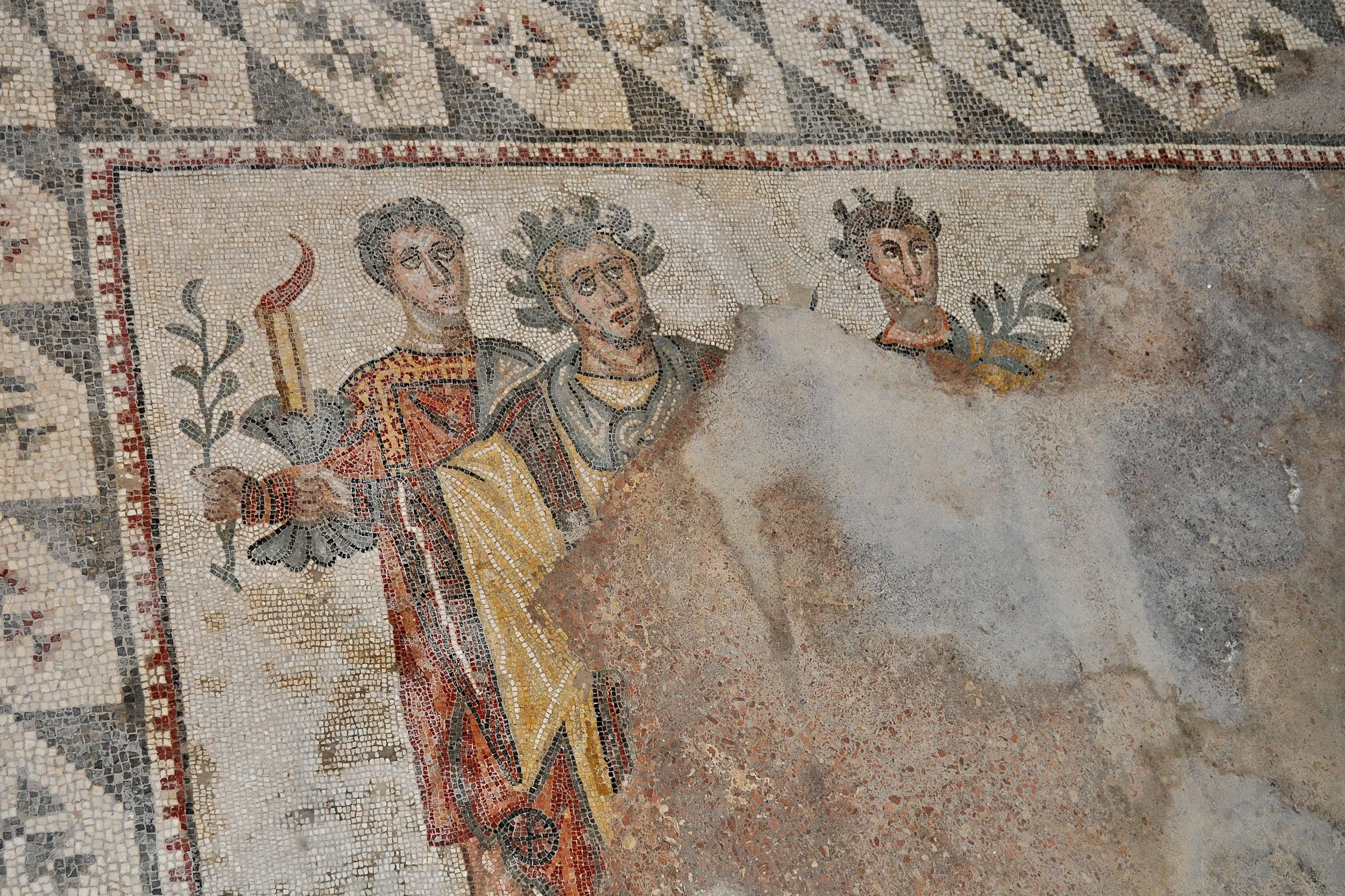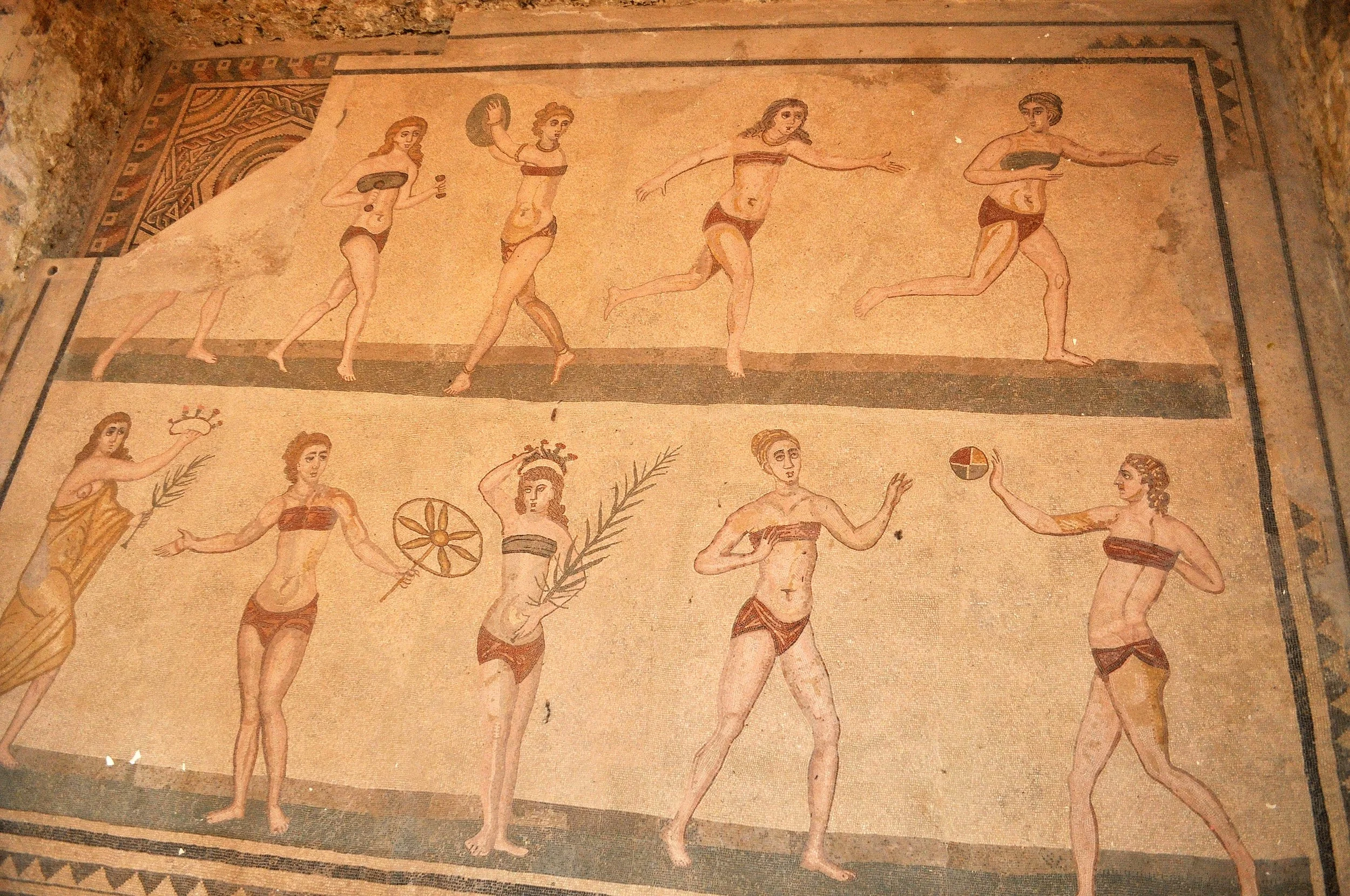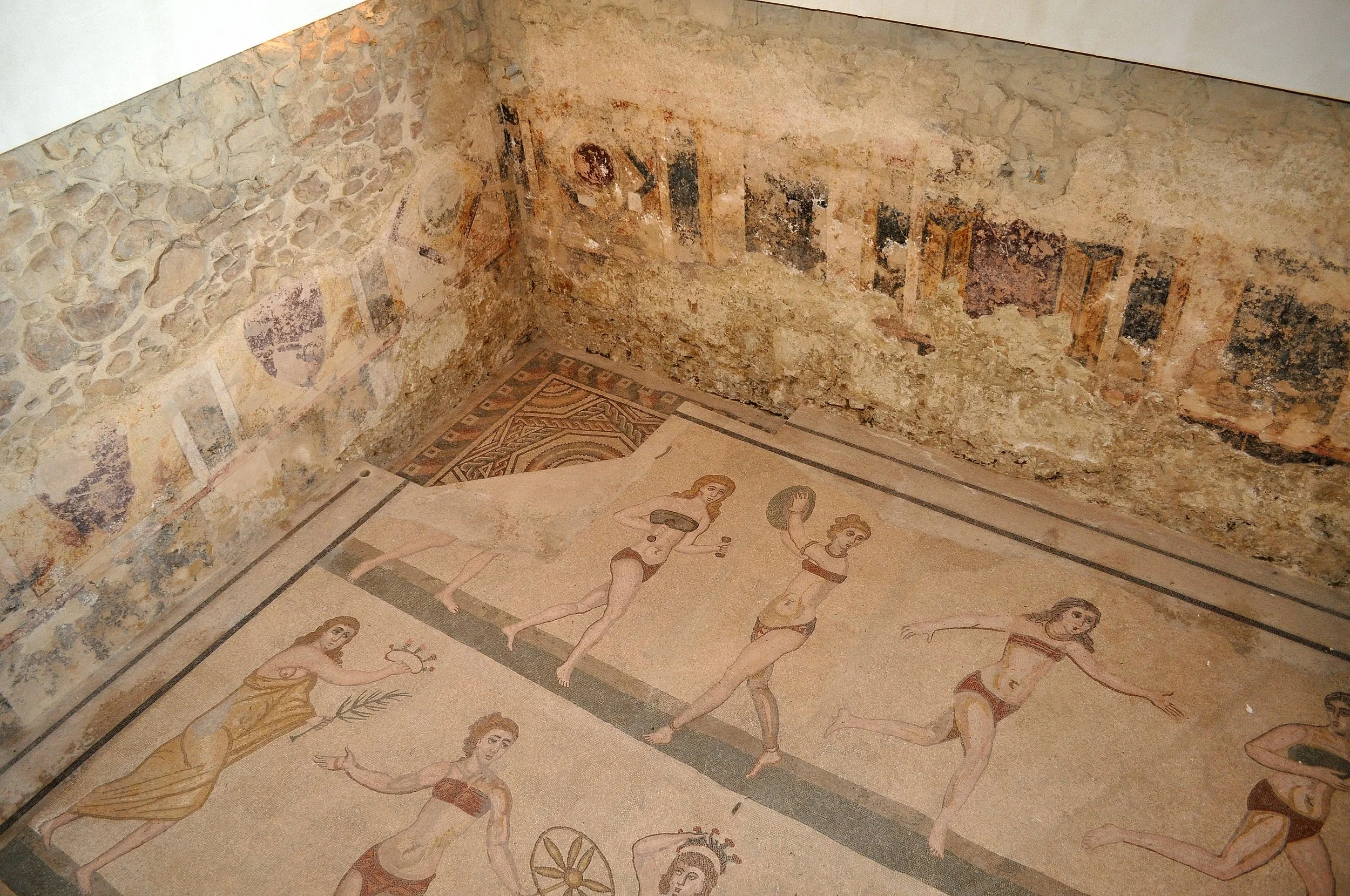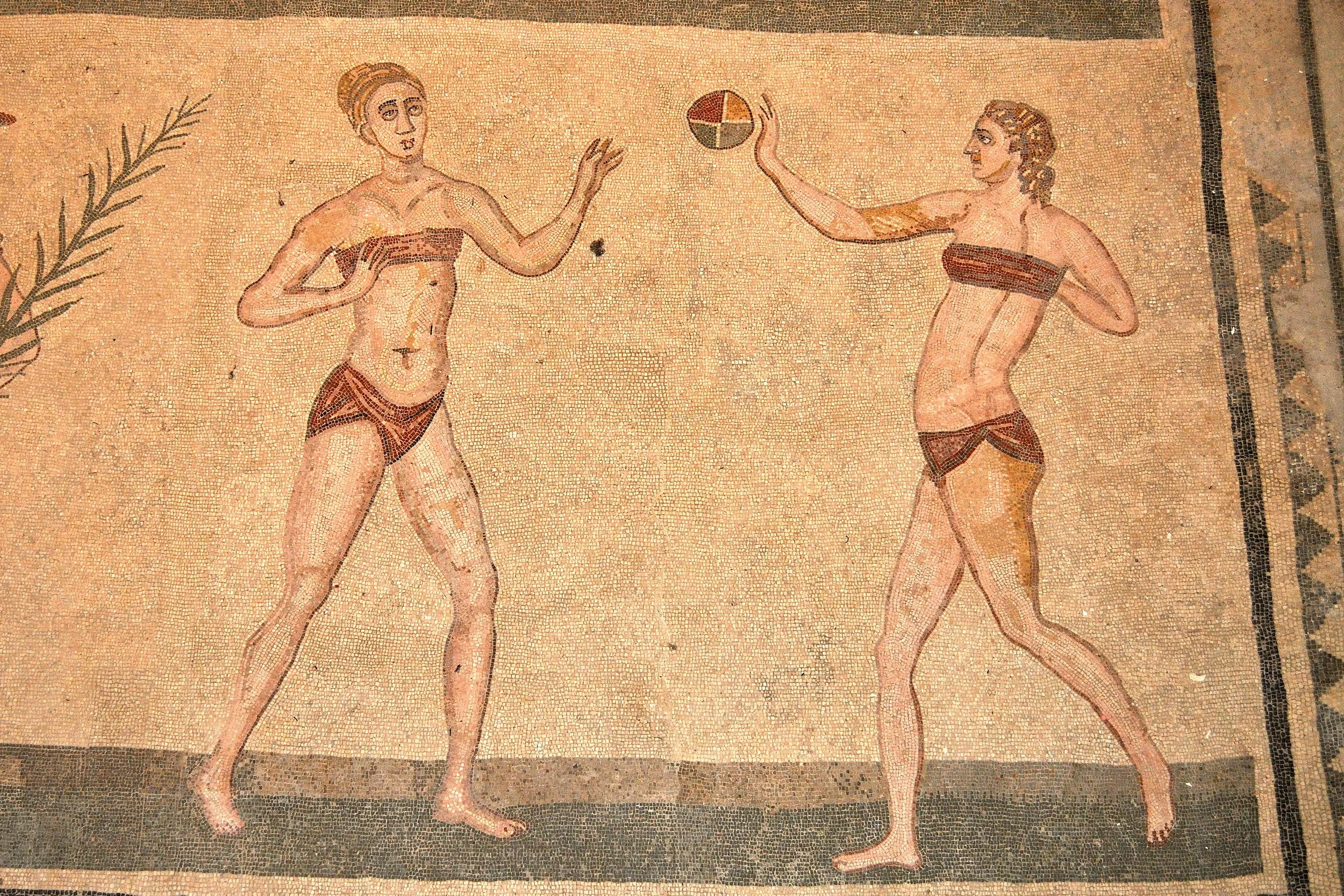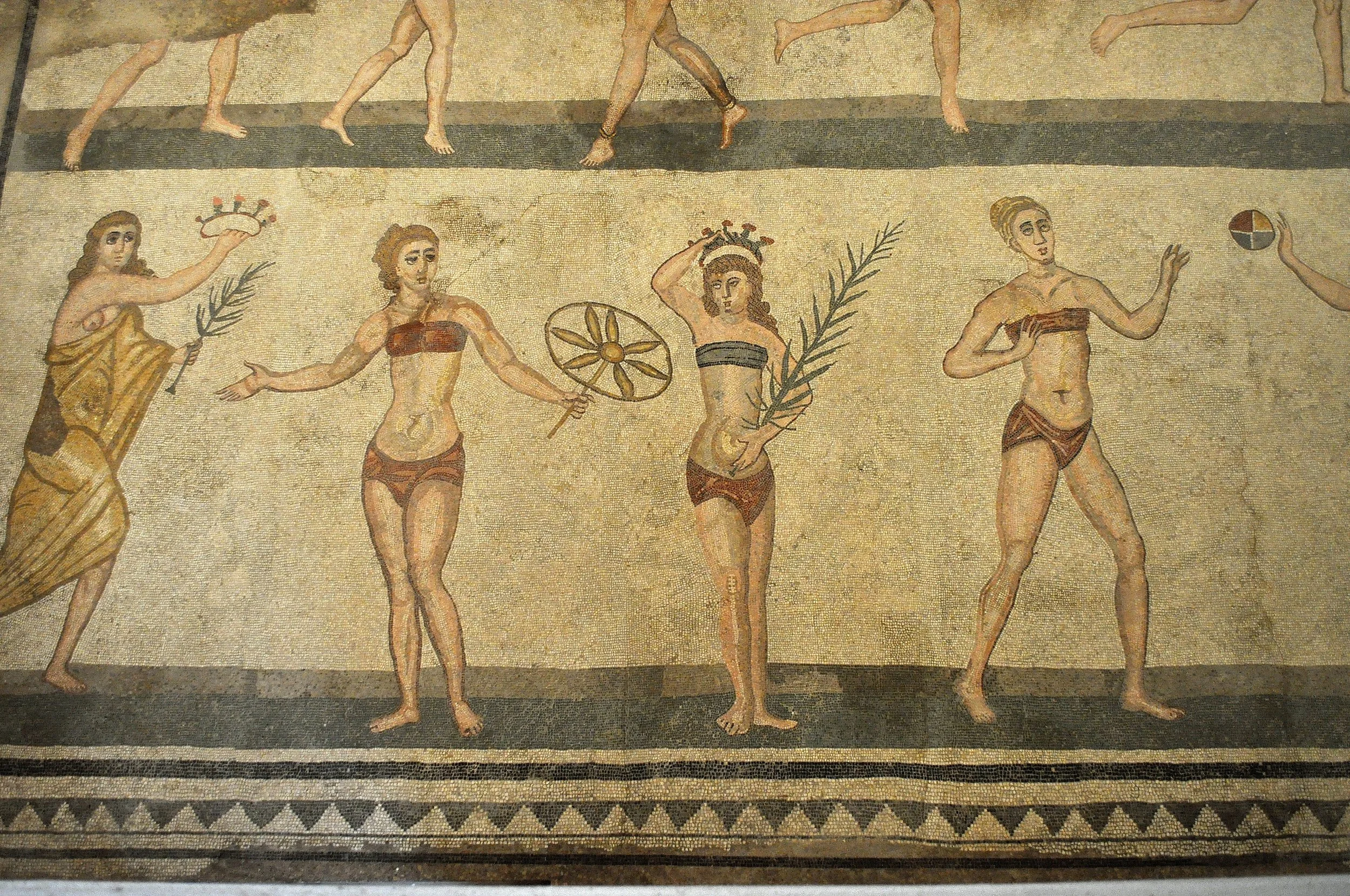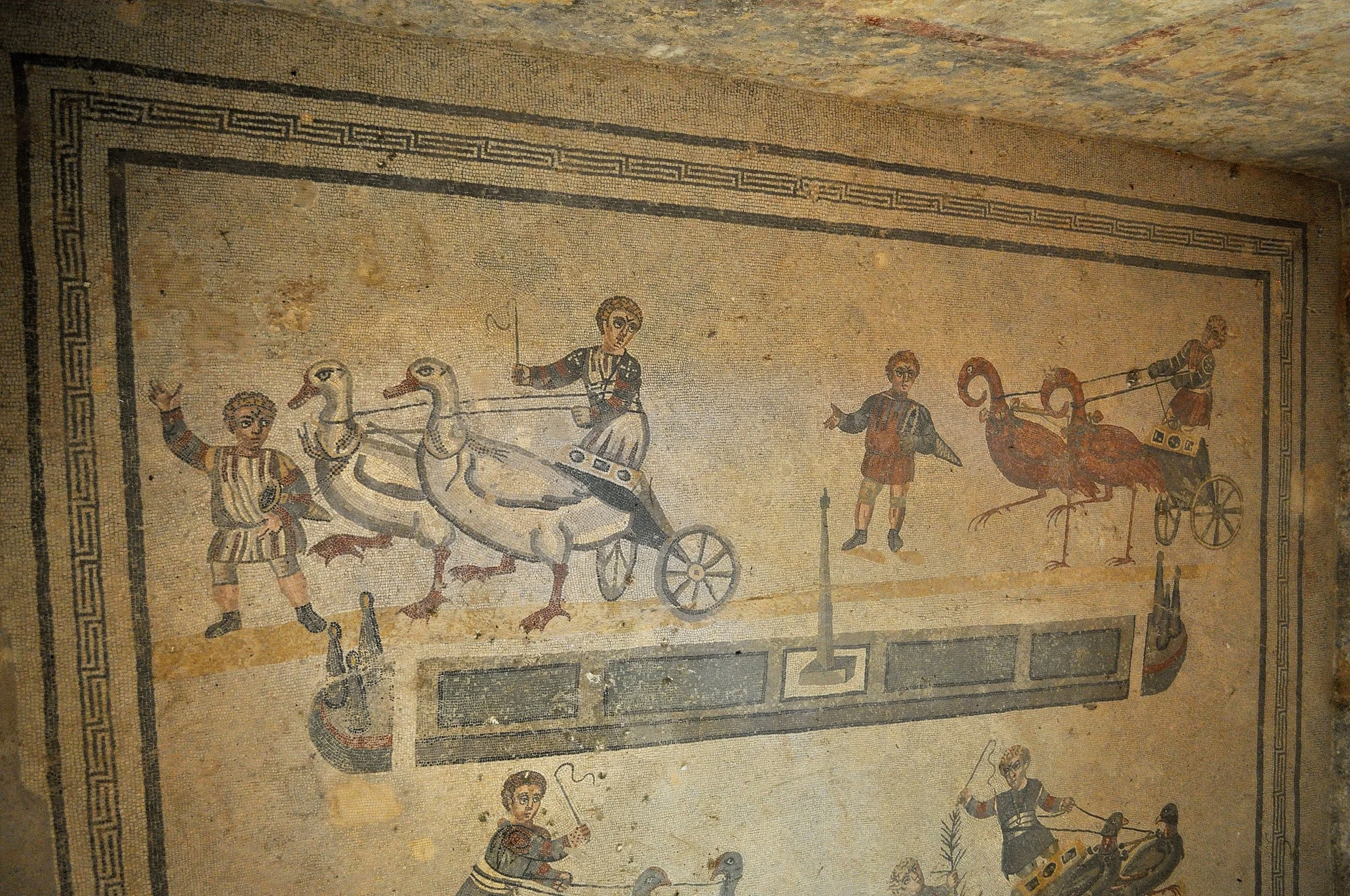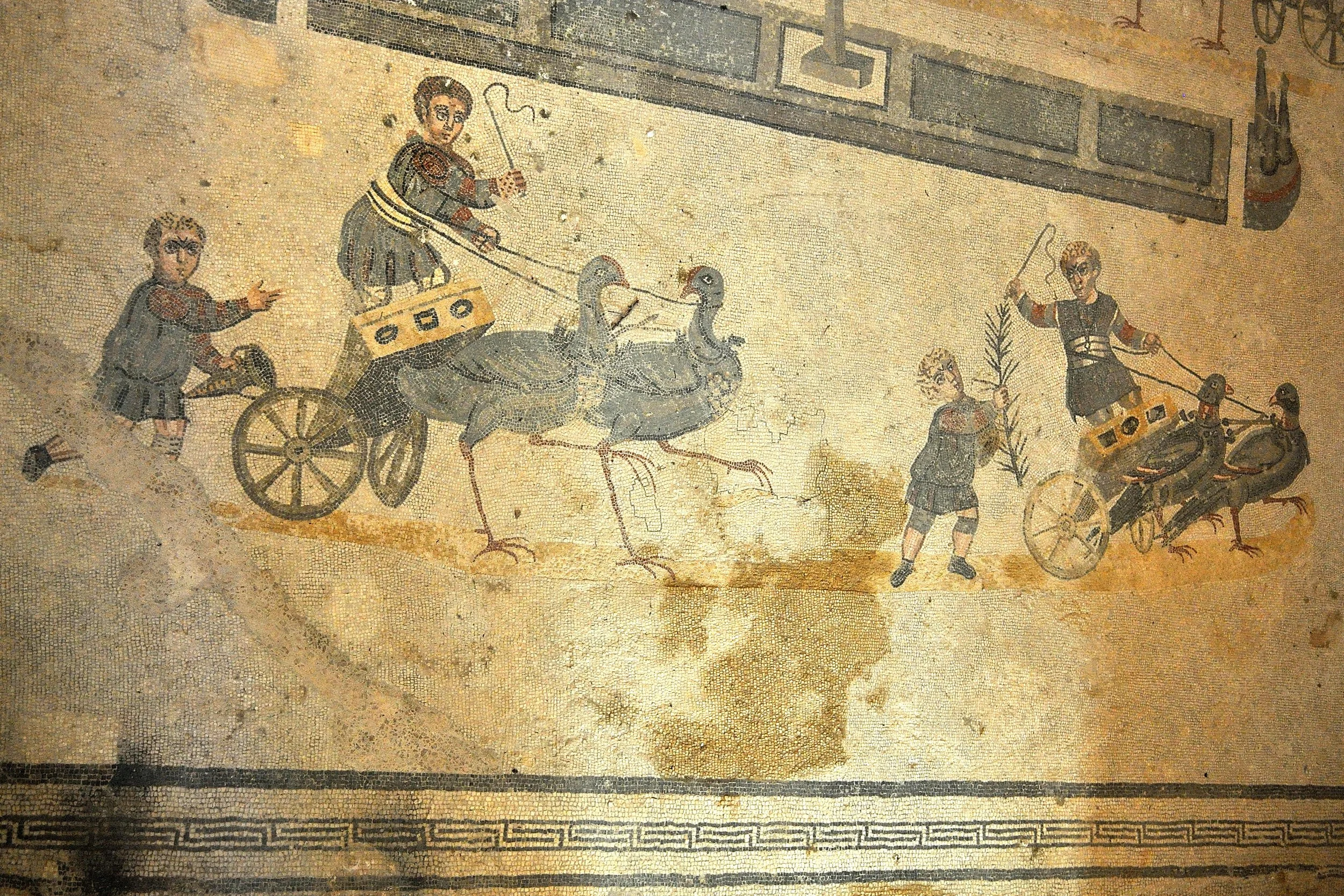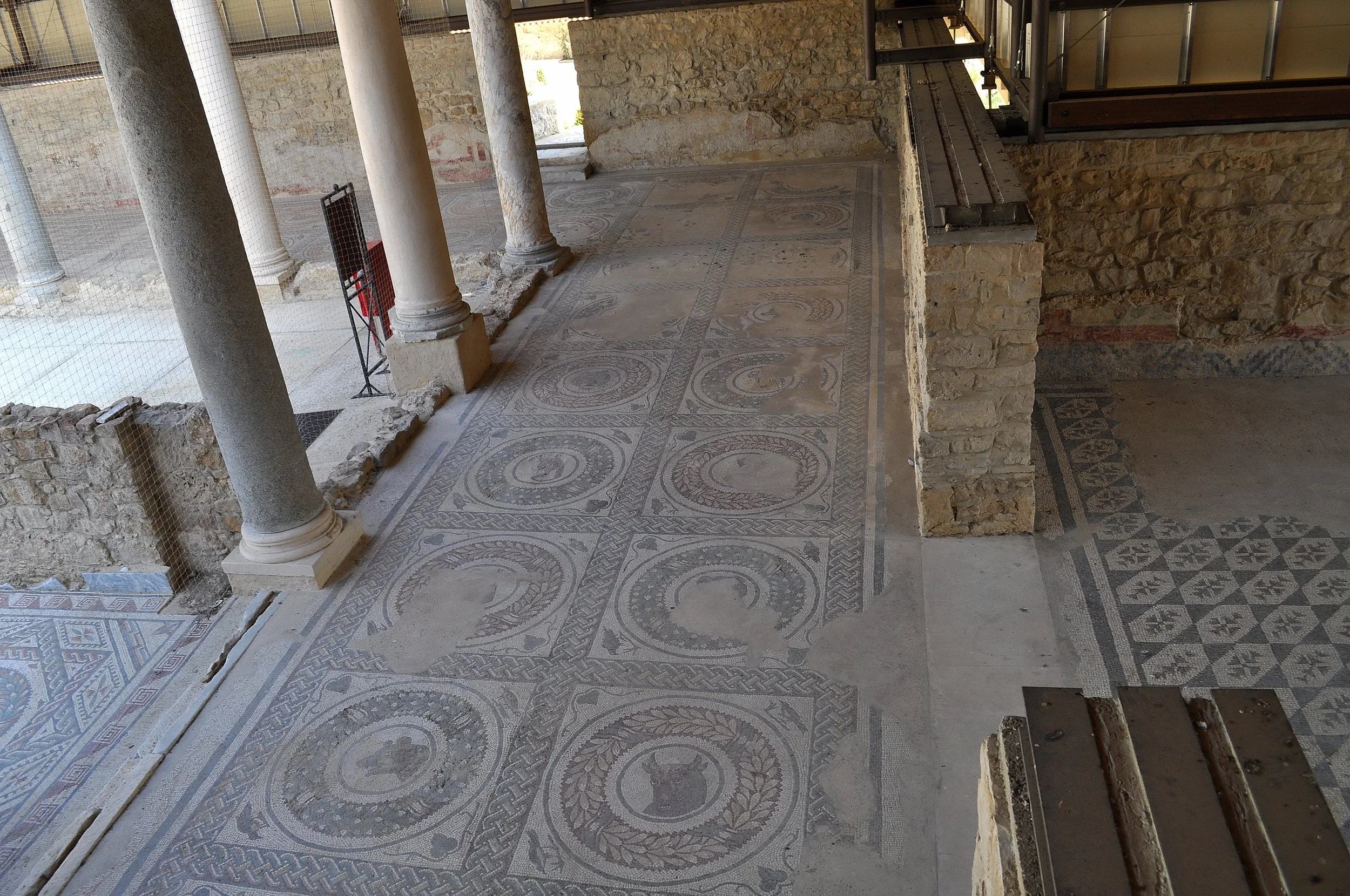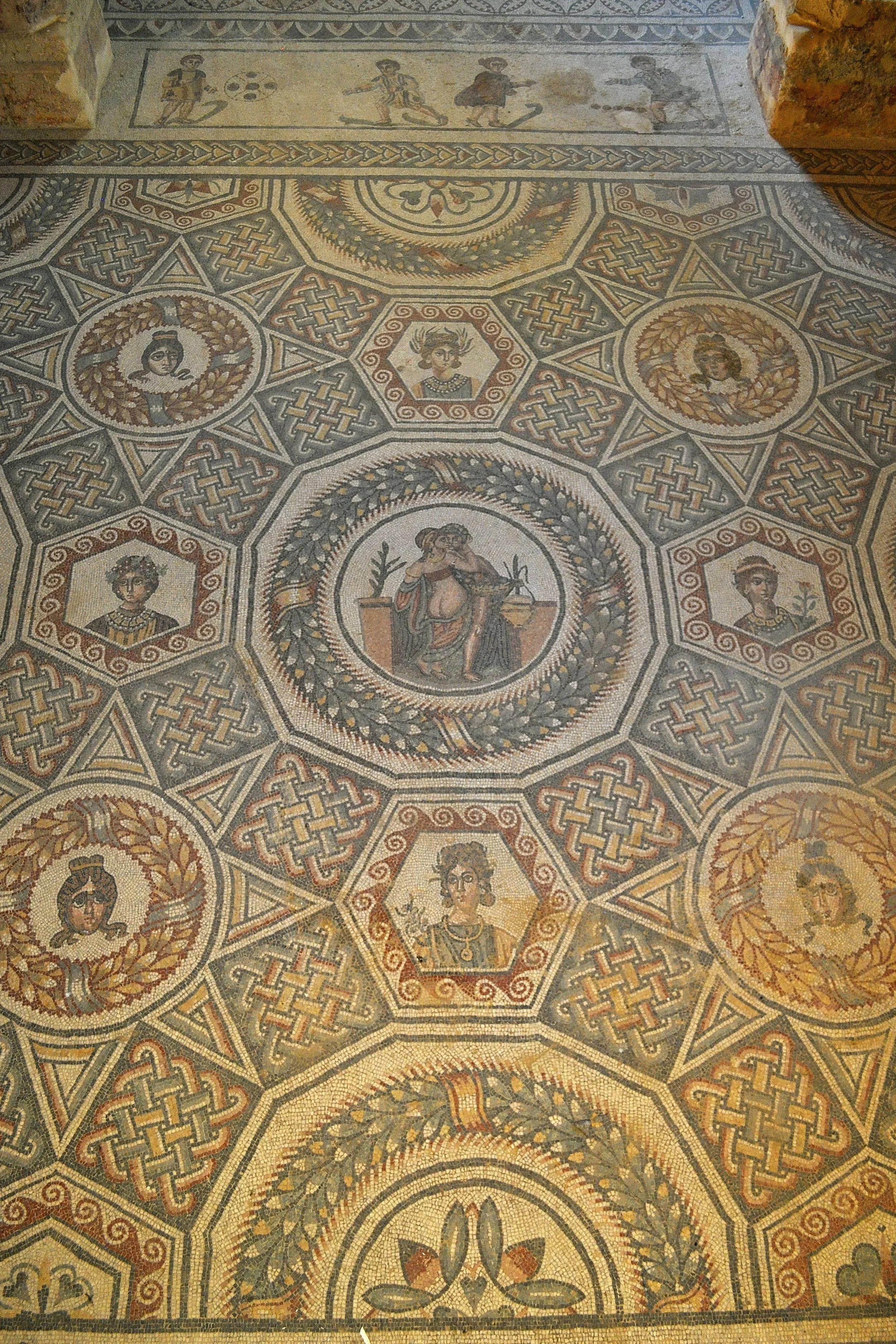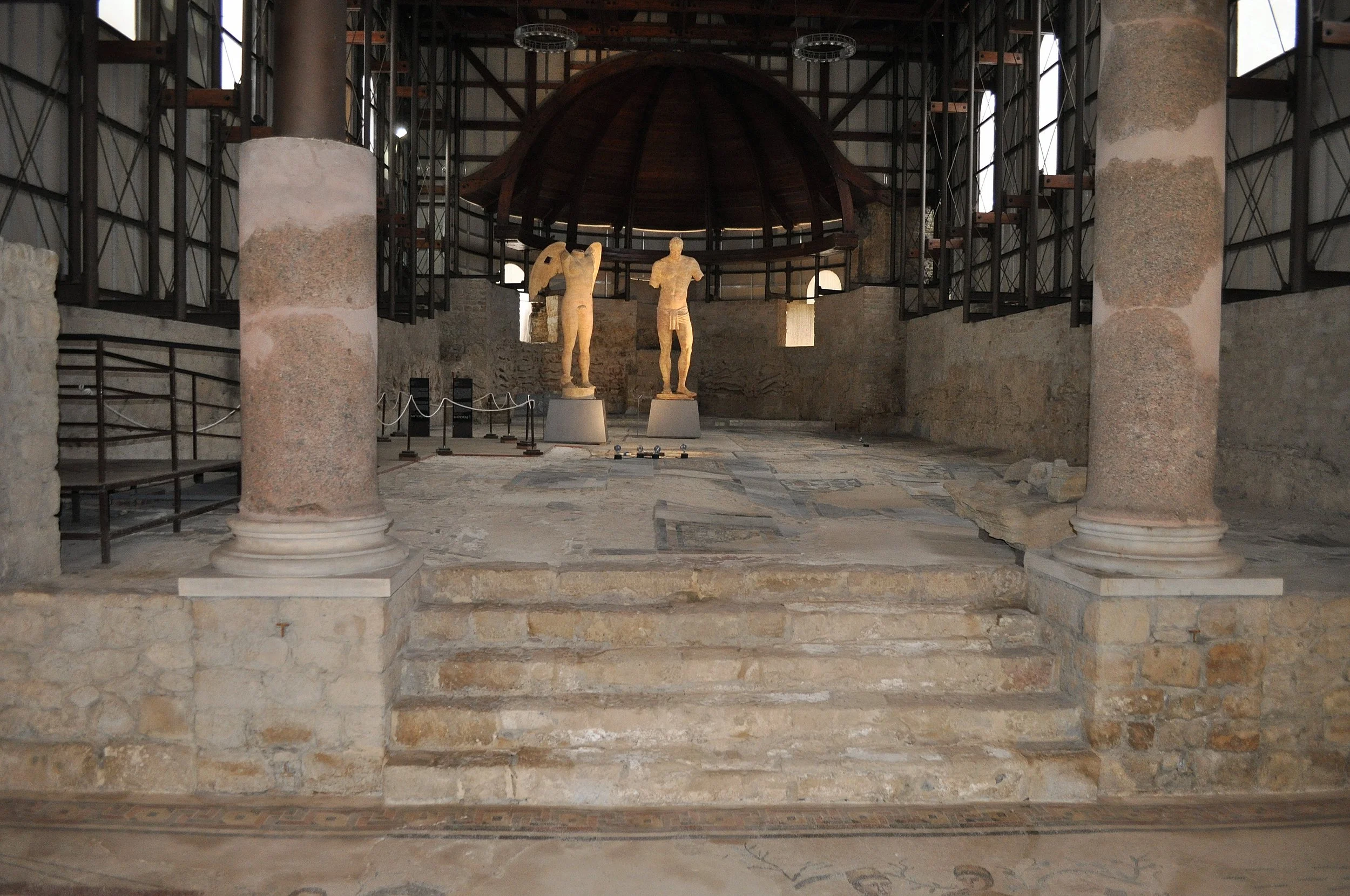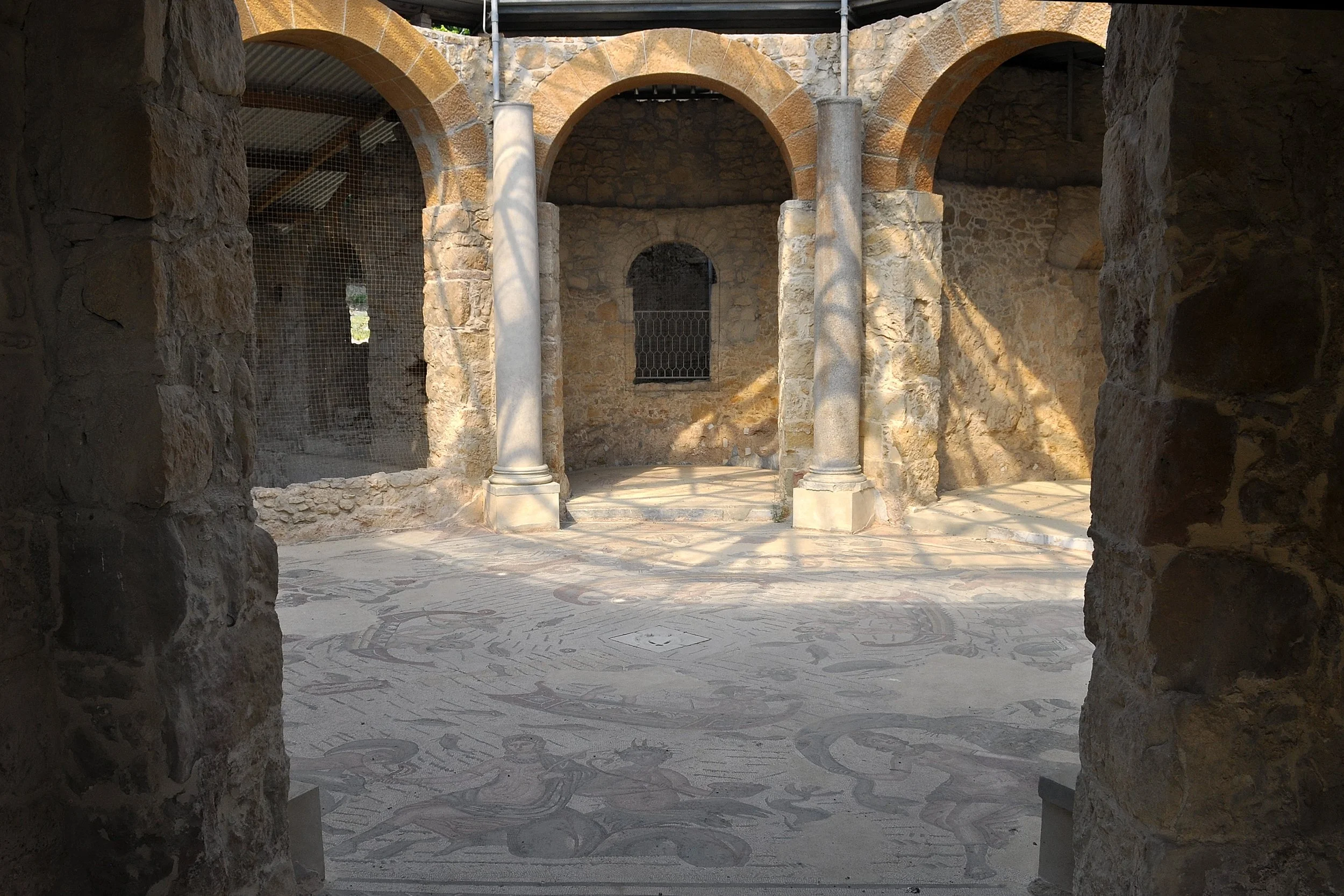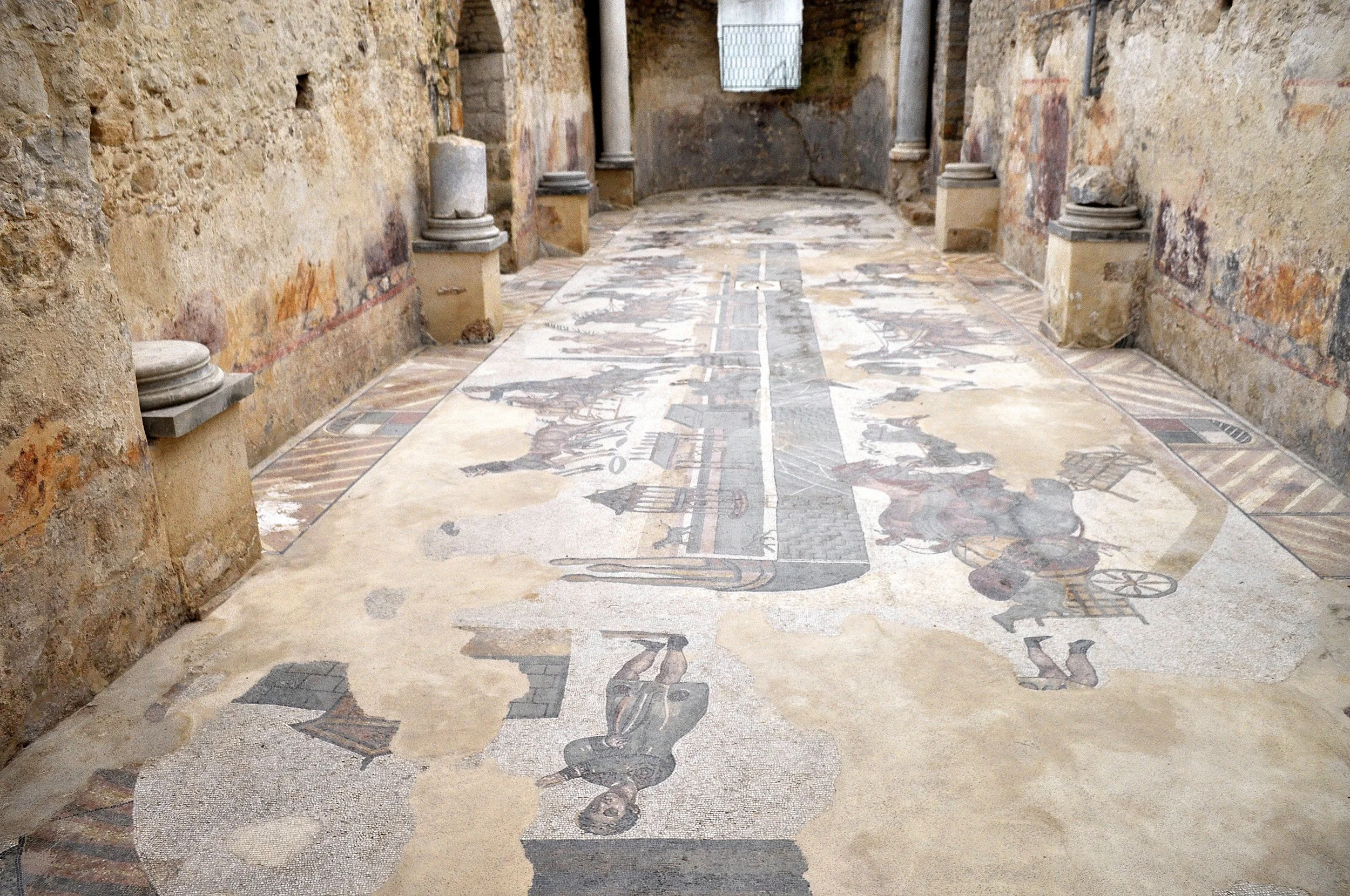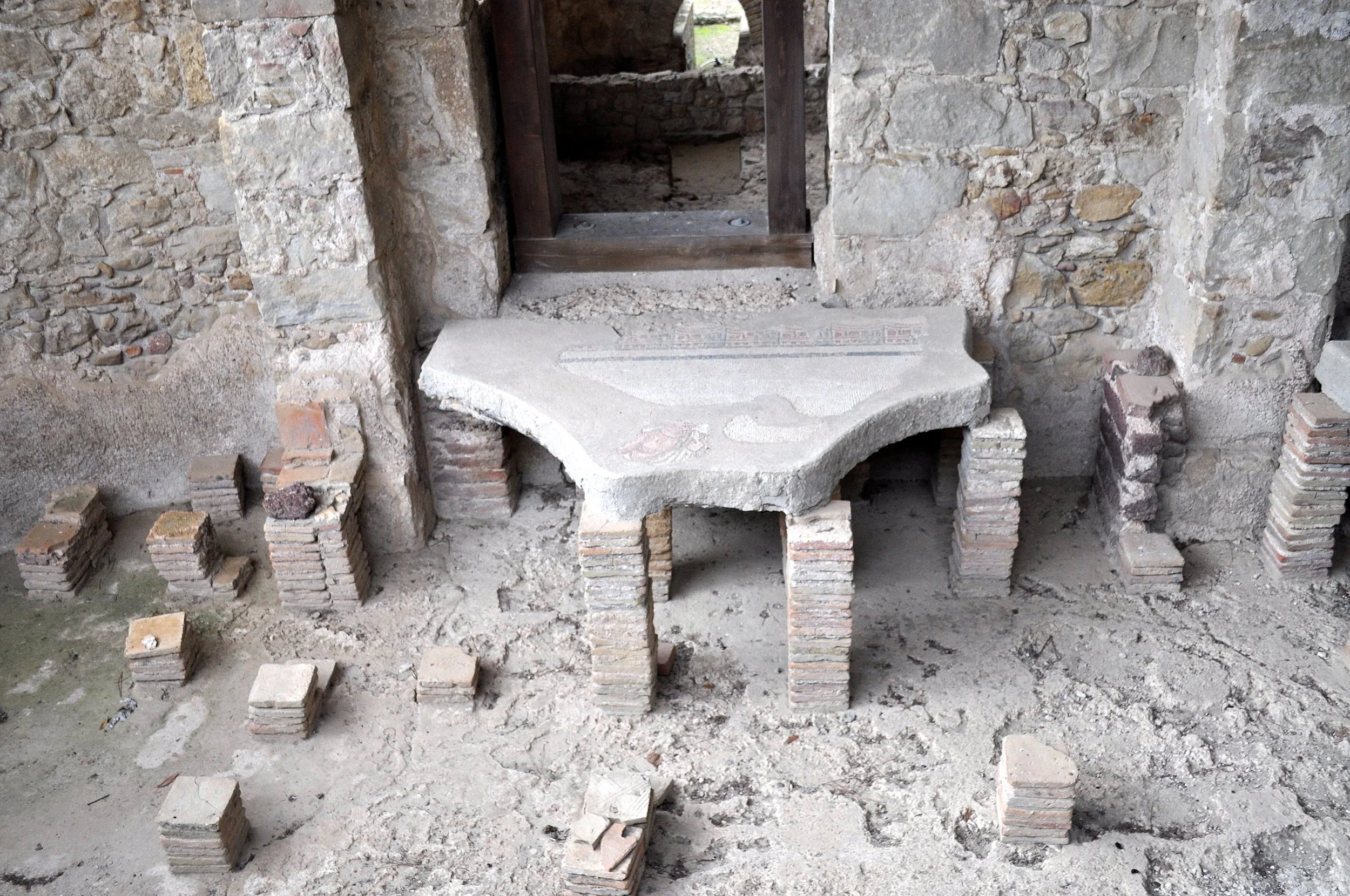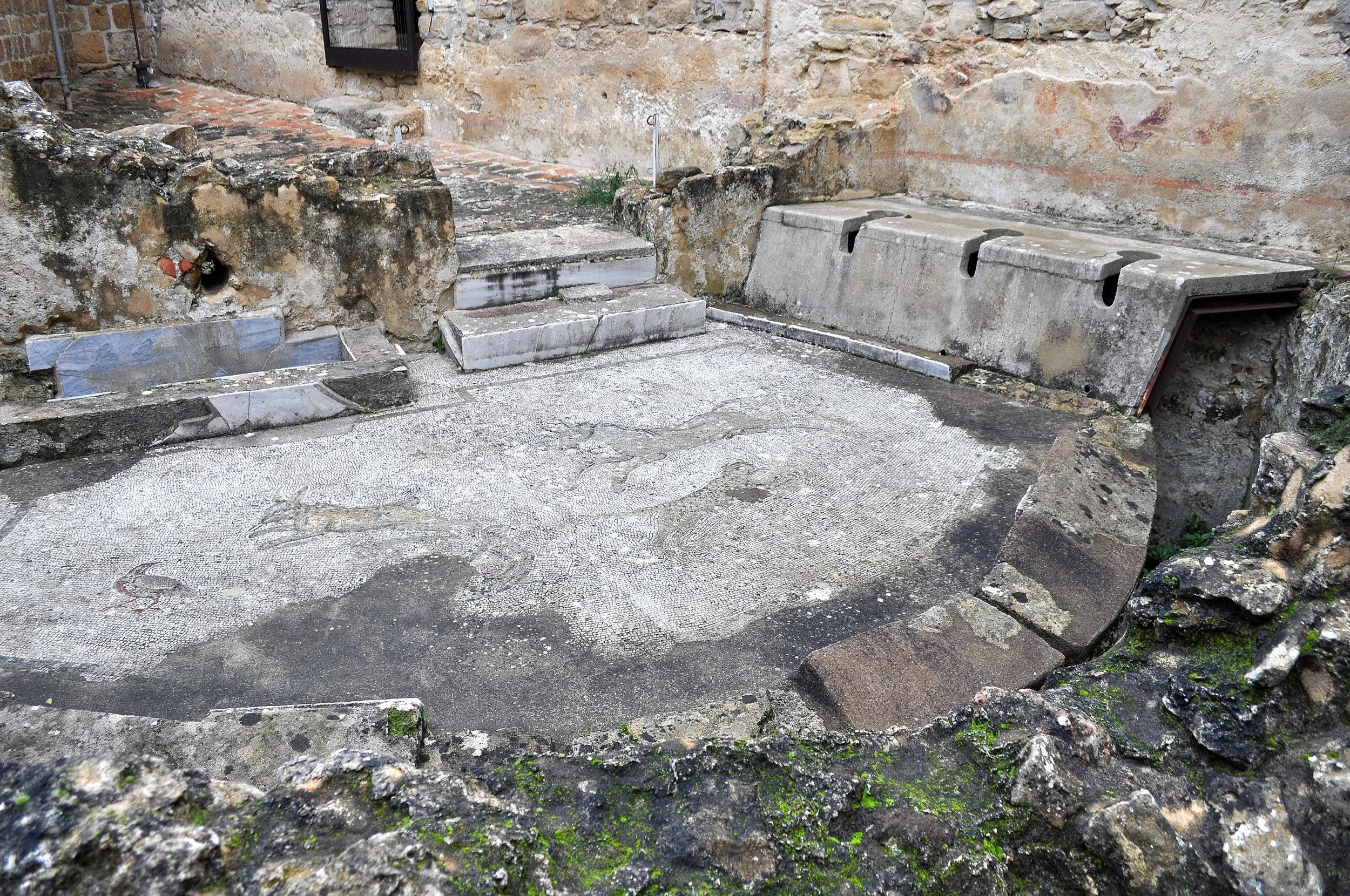Piazza Armerina: the Roman Villa del Casale
Alberto: welcome back to Sicily, everyone! Here’s another stop in this wonderful land.
Angela: here we are! Where are we going this time?
Alberto: once again, a quick day trip to see a little gem of southeastern Sicily.
Piero: you promised me another amazing dive into history.
Alberto: exactly: I’m taking you to discover one of the symbols of the Roman domination period on the island.
Piero: I think I get it—you’re talking about Piazza Armerina and more precisely, the Villa del Casale?
Alberto: xactly! I’ll take you to the heart of Sicily, in the province of Enna, just over an hour from Catania. Follow me then.
Discovering the Villa del Casale of Piazza Armerina
Angela: look at this wonder, Piero! Just the entrance with all these columns takes your breath away. It moves me to know that this place dates back to the 4th century AD and since 1997 it has been part of the UNESCO World Heritage Sites, yet another treasure here in Sicily.
Piero: it’s true, this villa is unique. It was probably built as a luxury residence for a high-ranking official or perhaps an emperor. The abundance and quality of the mosaics leave no doubt that whoever lived here wanted to impress their guests.
Angela: the villa’s discovery is credited to Gino Vinicio Gentili, who began exploring it in 1950 following reports from local inhabitants.
Piero: between the 5th and 6th centuries, the villa was significantly repurposed, with the residential area expanded and fortified. The resulting medieval settlement, called Palatia, was destroyed between 1160 and 1161 by the Norman king William I the Bad. Between the 14th and 15th centuries, after prior devastations, a new agricultural center called Il Casale emerged, giving its name to the present archaeological site. Due to subsequent damage, floods, and landslides covering much of the complex, the ancient Roman settlement was permanently abandoned. It’s precisely this covering that preserved the villa’s splendor to reach us today.
Angela: the remains of the villa today appear as four separate nuclei: the monumental entrance with three arches and a horseshoe-shaped courtyard; the central body organized around a square peristyle courtyard with a garden and basin; the large space preceded by a peristyle surrounded by another group of rooms; and finally, the thermal complex with access from the north-west corner of the square peristyle.
Piero: the Roman Villa del Casale at Piazza Armerina, Sicily, is a sublime example of a late-imperial Roman luxury villa and symbolizes the Roman use of land as the center of large estates forming the basis of the rural economy of the Western Empire. It is one of the most luxurious of its kind and is famous for the richness and quality of its mosaics, which are its symbol even before its size; it is a precious testimony of the lifestyle of the Roman ruling class and shows the cultural influences between the Roman world and the North African area. The villa covers 48 rooms (about 3,500 square meters) adorned with mosaics in perfect condition, probably made by African masters, depicting the history of the greatest empire with scenes of daily life, heroes and deities, hunting, and games.
Let’s enter the Villa del Casale!
Angela: here we are at last! This is the Court of Honor, right? Look at the floor! The very first mosaics are fantastic and already give us a glimpse of the marvels we will discover.
Piero: exactly, it’s an area where visitors were welcomed, and the mosaics were a way to communicate the owner’s prestige. Now, we’re entering the famous "Corridor of the Great Hunt"! There are scenes with animals and mythological figures — a true homage to the world of hunting.
Angela: this is really spectacular! The mosaic here is over sixty meters long and depicts an exotic hunting scene. There are lions, tigers, elephants… even a scene with hunters carrying the captured animals onto a ship.
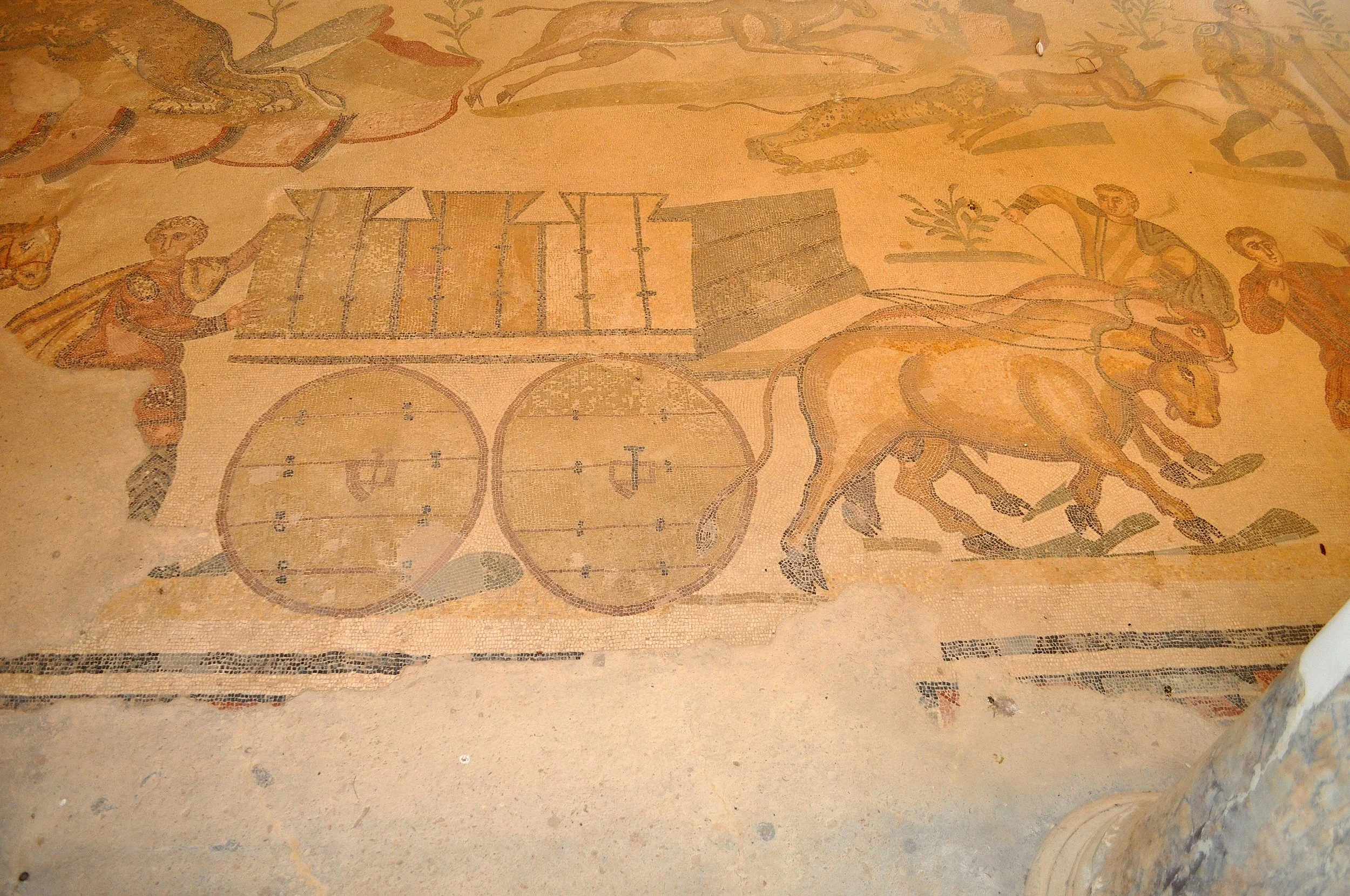

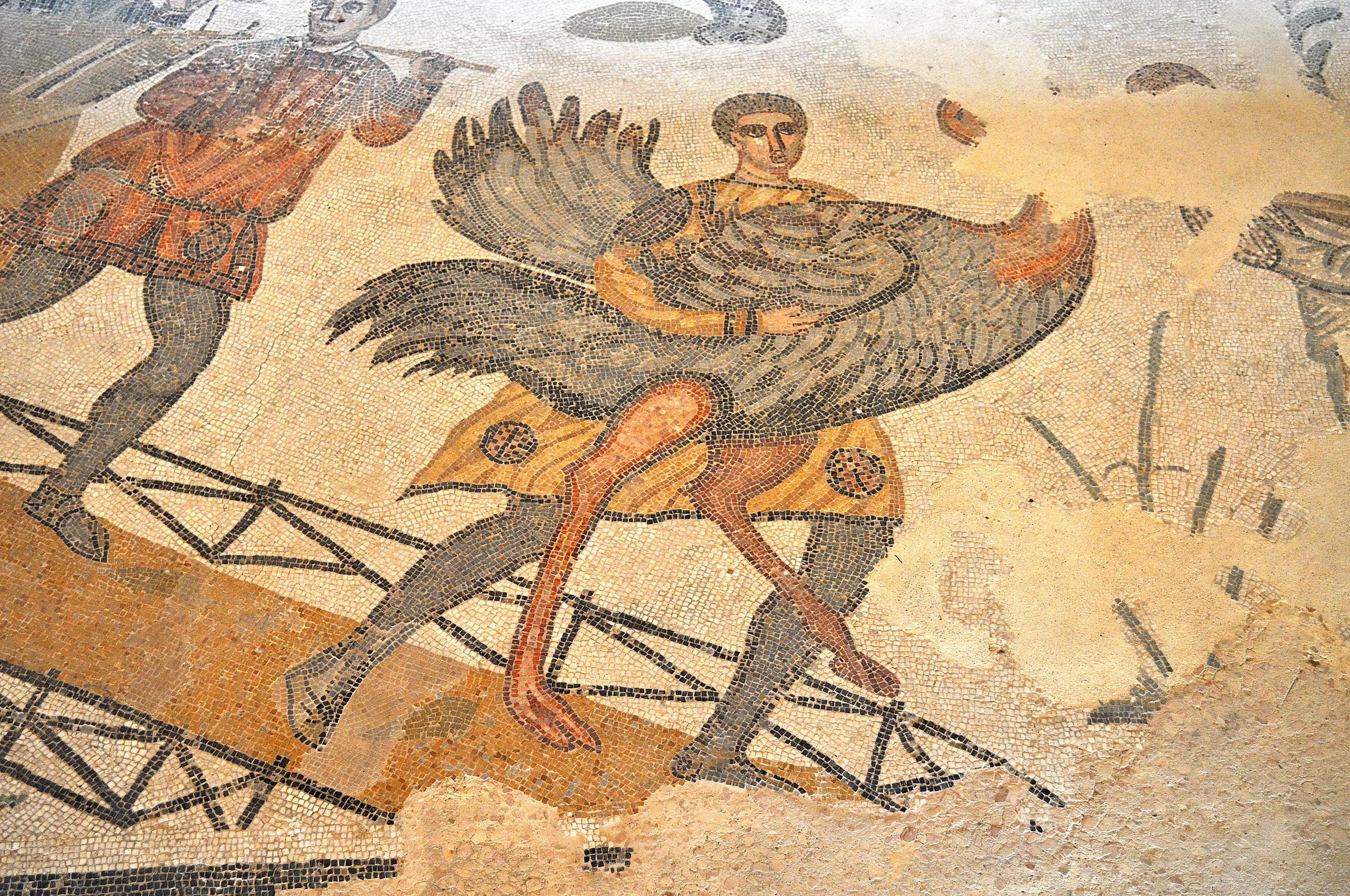
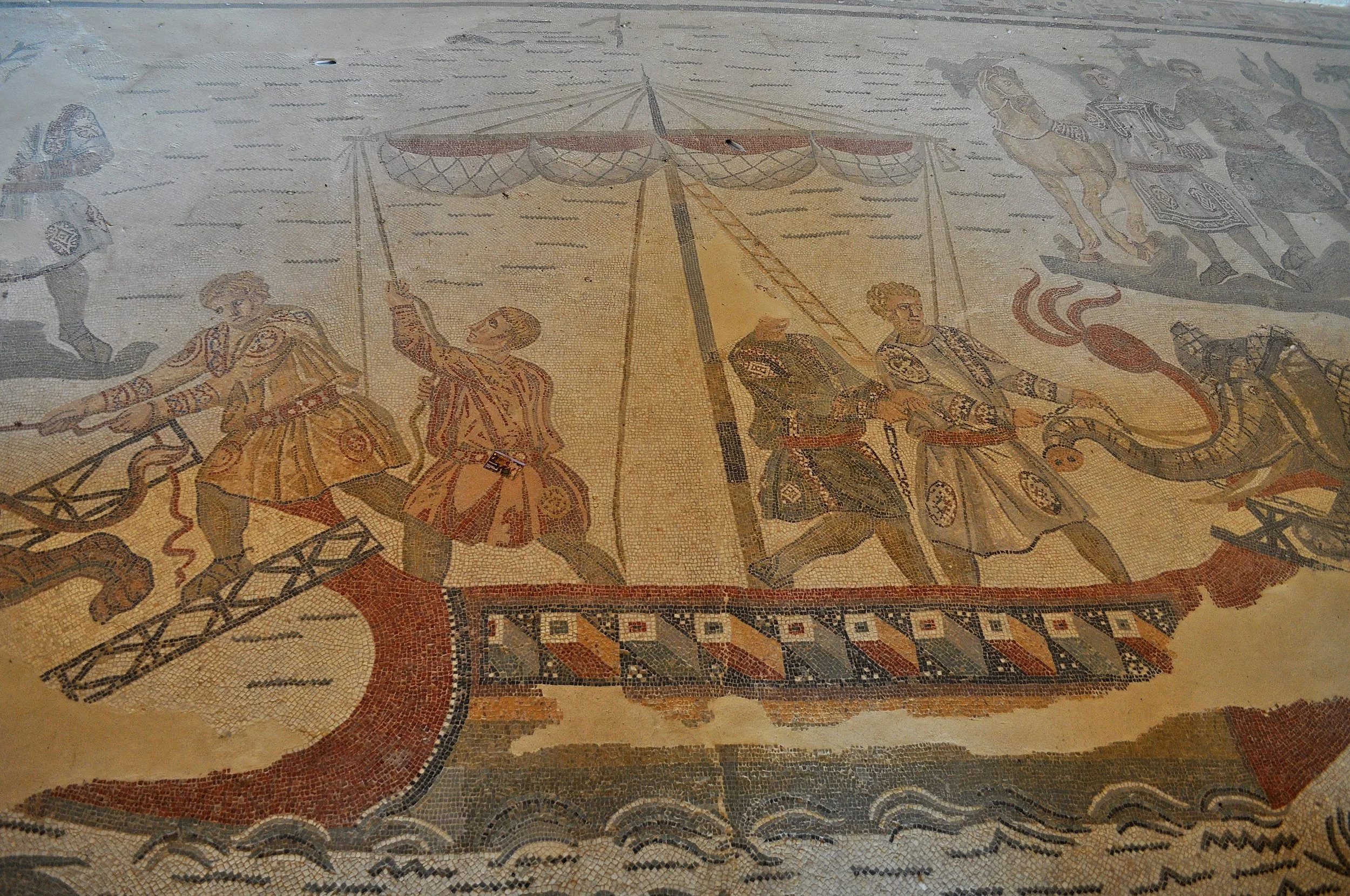
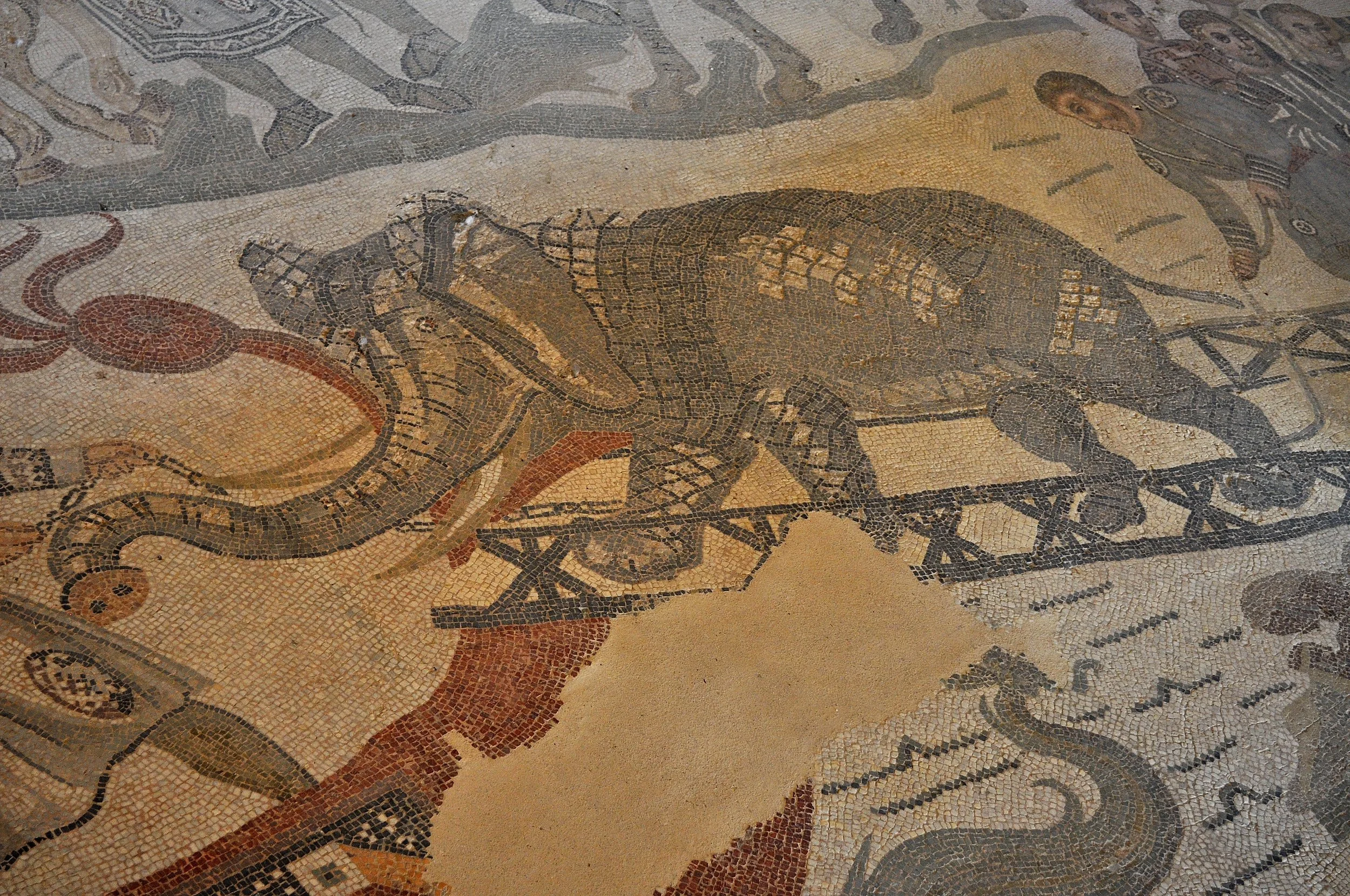
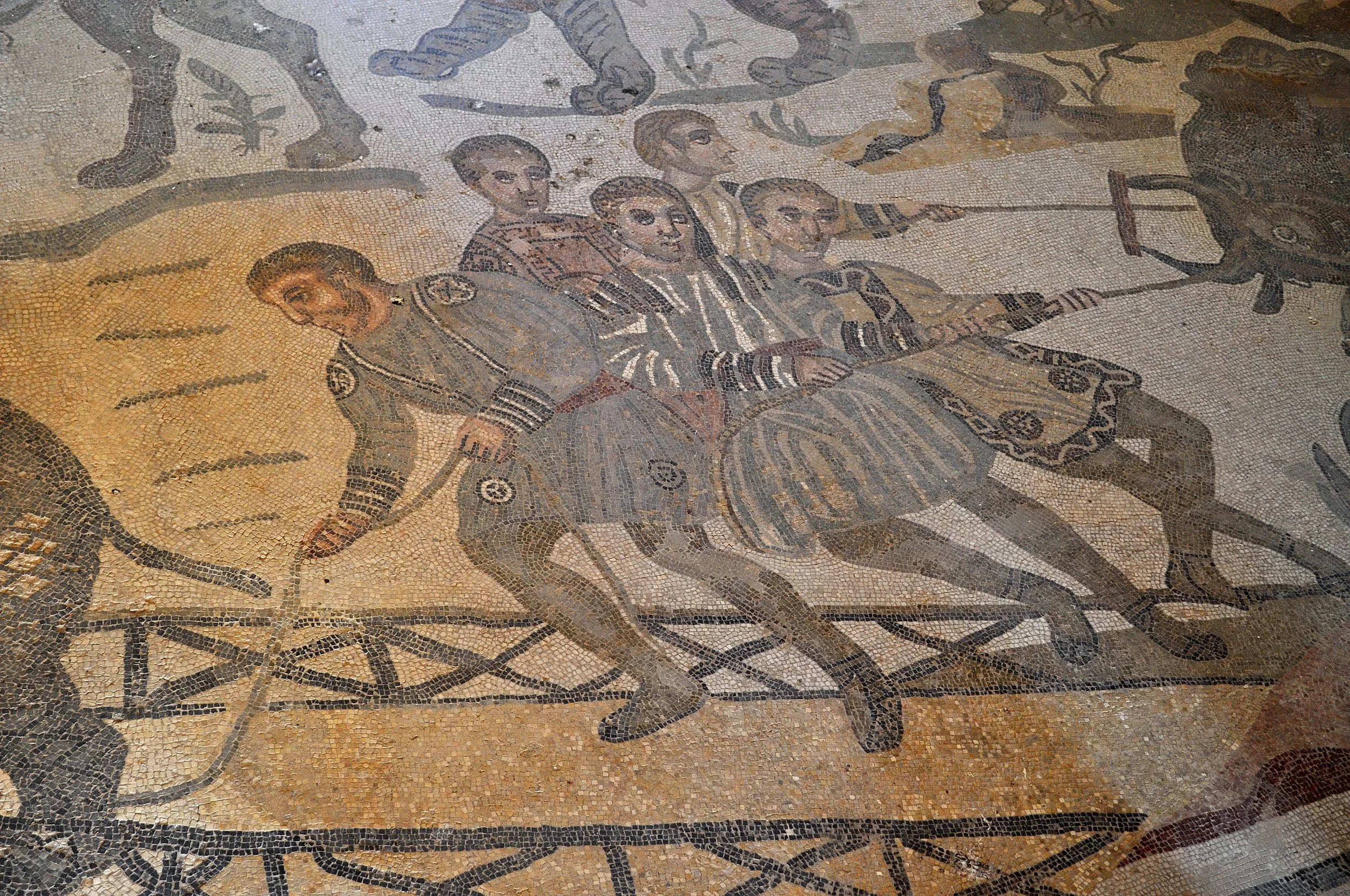



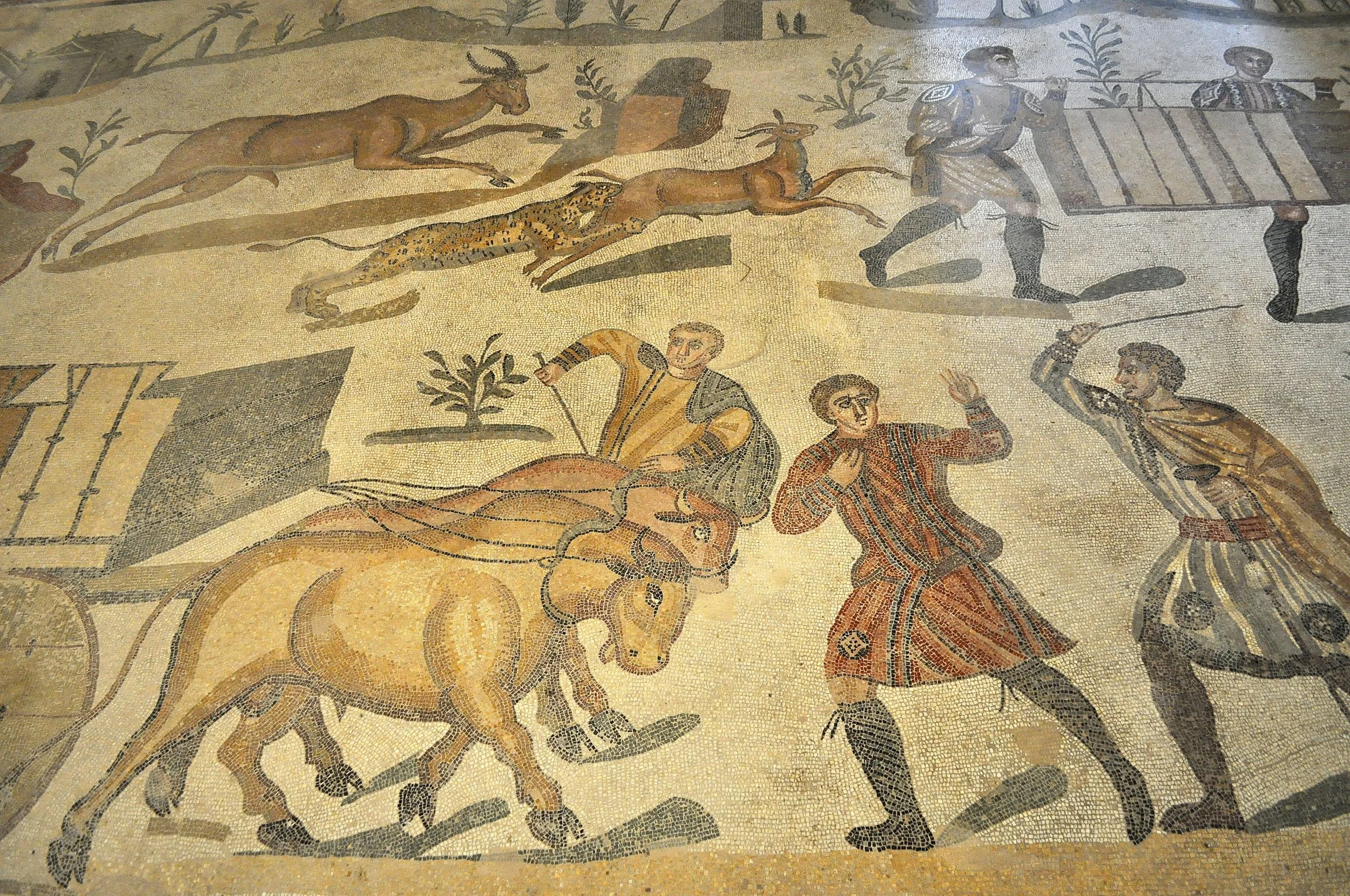
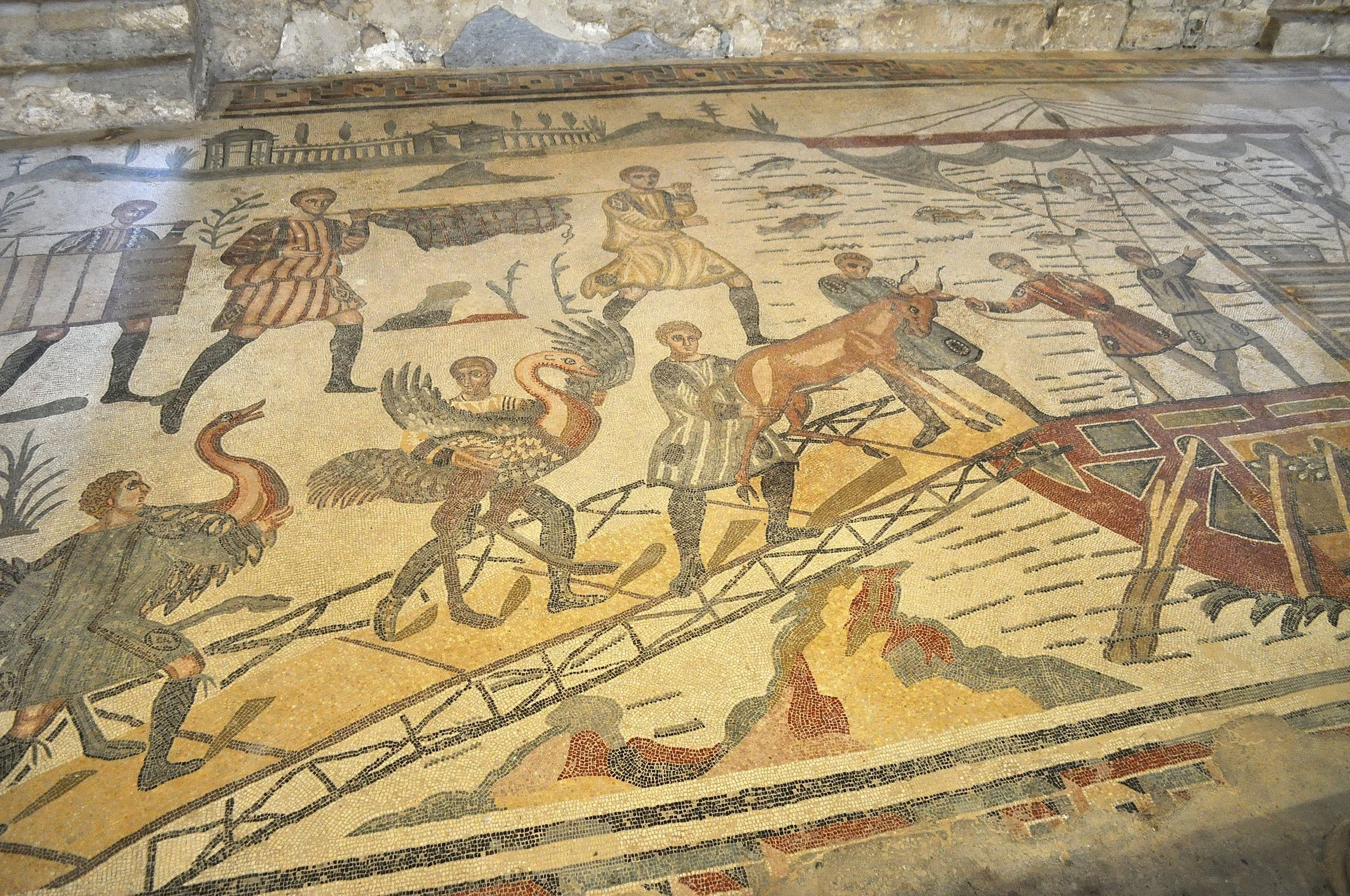


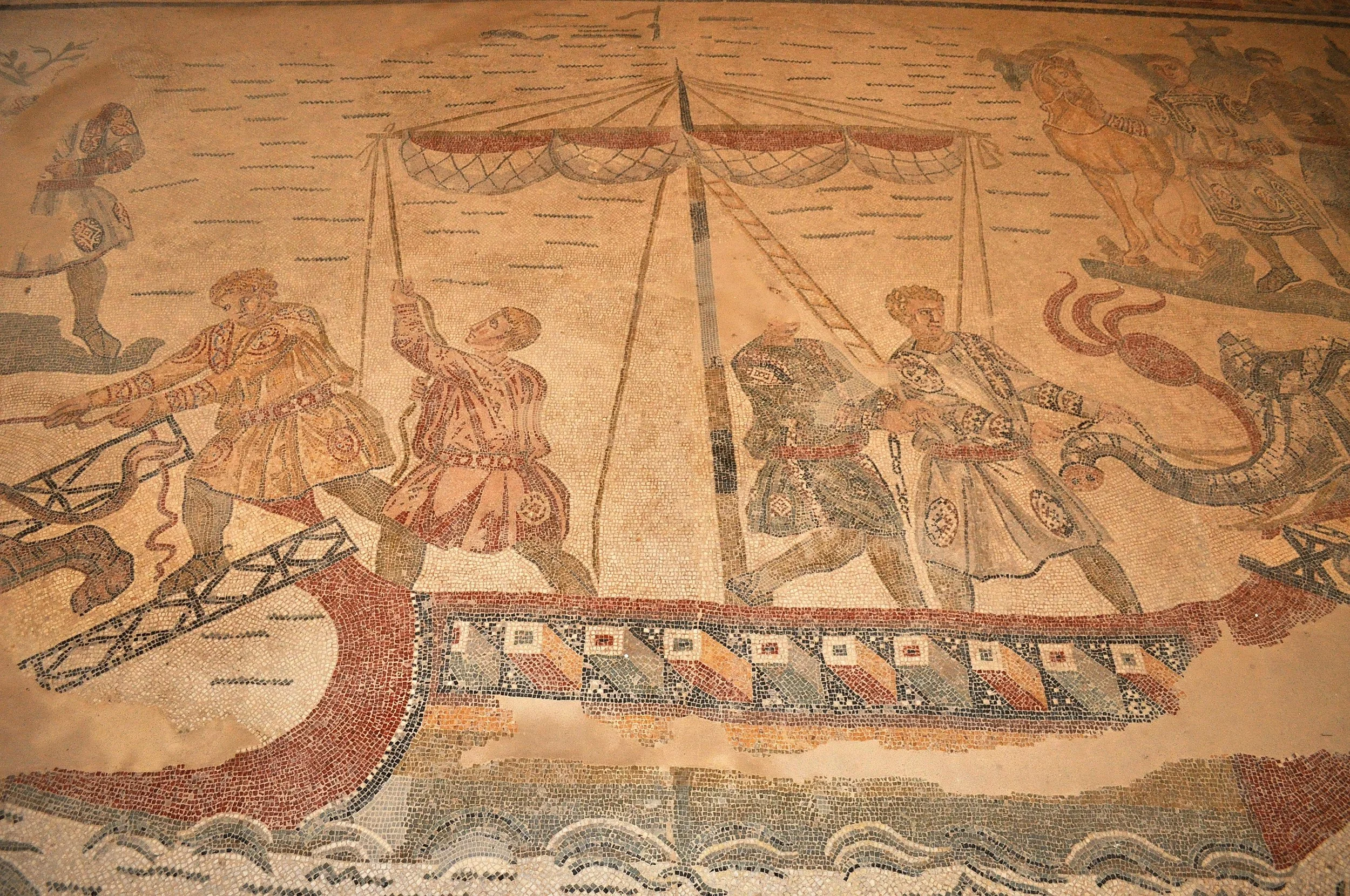
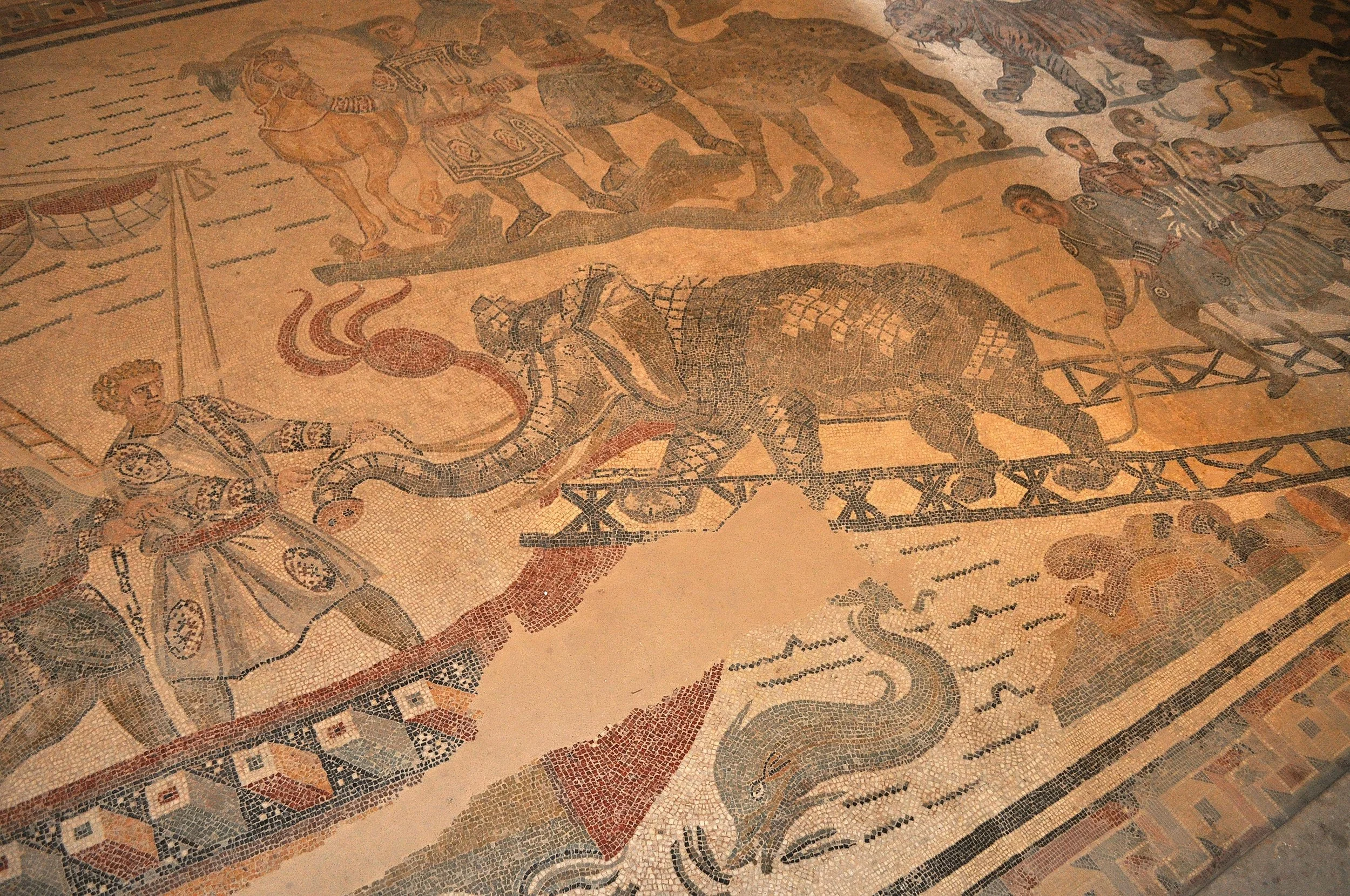
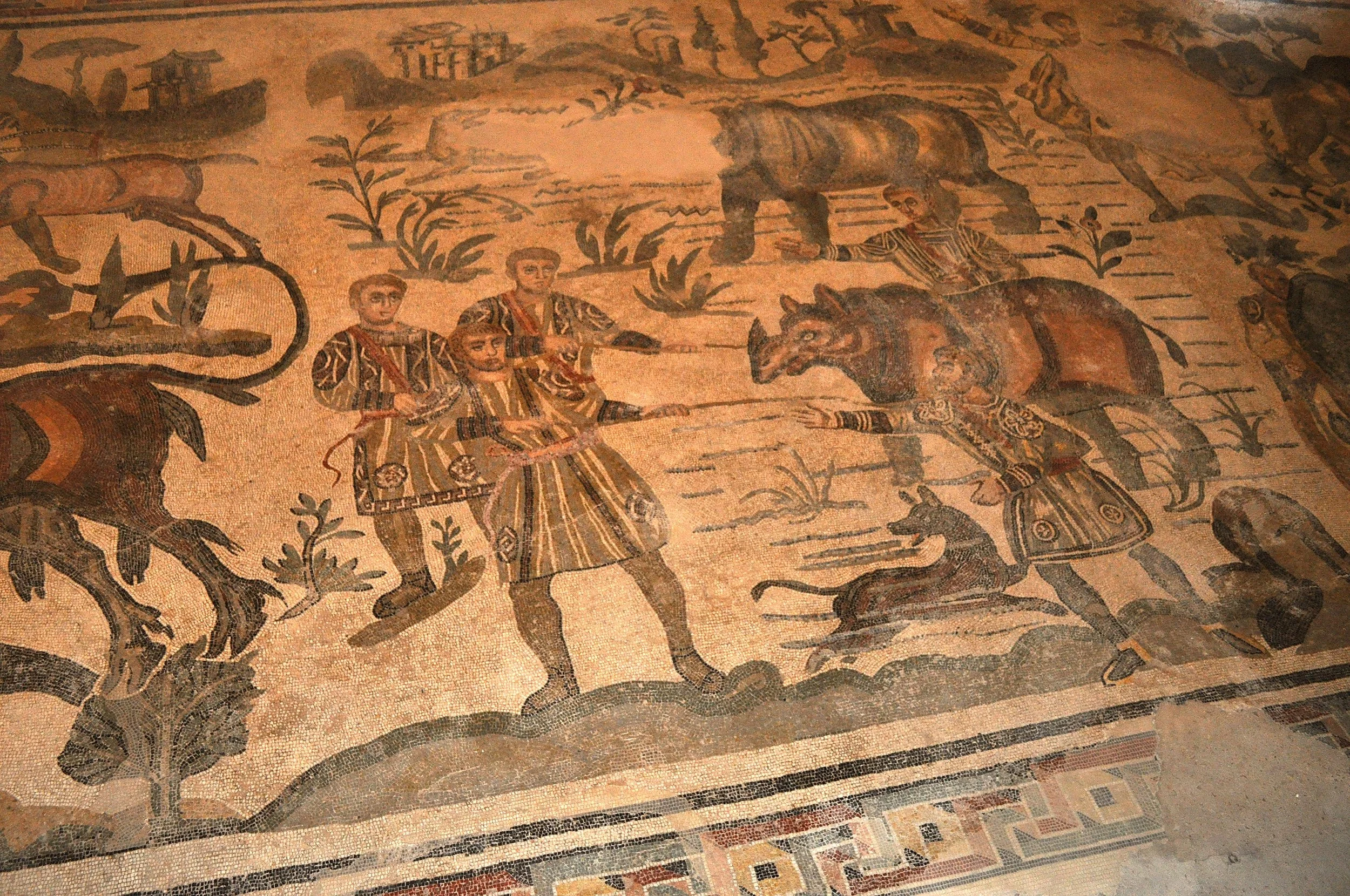

Piero: this corridor was the central element of the villa, used to connect all the main rooms. See, each scene has movement, almost as if the animals are struggling for their freedom. It’s incredible how the artists used the tiles to create a sense of motion and depth.
Angela: yes, you can really feel the drama of the hunt. But look, to the right there are other rooms. Shall we go see them?
Piero: of course! Let’s enter the "Room of the Ten Girls," or as everyone calls it, the "Room of the Girls in Bikinis."
Angela: this room has become famous for the figures of the young athletes. Look, it almost looks like a portrait of a sports competition: there are girls playing with a ball, lifting weights, doing exercises. Some are receiving laurel wreaths, as if they are being awarded for their performances.
Piero: exactly, it’s a scene of gymnastics, showing how important sport was in Roman culture. It’s amazing to see a 4th-century mosaic depicting such active women.
Angela: it’s impressive how they rendered the figures with so many details, from their faces to their hairstyles. They really have personality! Where do we go next?
Piero: let’s head to the "Circus Room." This is another interesting mosaic, showing a chariot race in a Roman circus. Look at the details: the horses, the drivers, the crowd… it feels like watching a race live.
Angela: it makes me think of a welcome scene, as if the owner wanted to share the excitement of these events with his guests. The sense of movement here is impressive!
Piero: exactly, the mosaics in the villa were not just decoration but also a way to tell stories and captivate those who looked at them. Shall we continue to the Peristyle?
Angela: rhe famous garden surrounded by columns! Here you really feel an atmosphere of peace. In the center, there are trees and flowers, while all around, on the floors, there are mosaics with animals and scenes of rural life.
Piero: this was a place for rest and gathering for the owners and their guests. Imagine spending time here, surrounded by artworks and nature. And at the end of the peristyle is the "Lovers’ Room."
Angela: the room with the love scene gives a truly delicate image: a man and a woman on a bed, with a cupbearer bringing drinks. It’s like a glimpse into the intimacy of the Roman era.
Piero: a surprising representation, showing how the Romans also valued the intimate and private aspects of life. Now let’s see the "Basilica," which was a large space probably used for official meetings.
Angela: here the atmosphere changes: the floor mosaic depicts allegorical figures, deities, and animals. It feels like a solemn place for reflection. Perhaps the owner also had an administrative role.
Piero: this villa tells us a lot about the social and cultural complexity of that time. Finally, there are the baths! Shall we go in?
Angela: I can’t wait. The "Frigidarium" is the first room of the baths. Here guests took a cold bath before moving to the heated rooms. The decorations are more restrained, but the mosaics represent marine creatures like fish and dolphins.
Piero: it’s incredible how each room has a different theme. The Romans left nothing to chance. Let’s move on to the "Tepidarium," the warm room. This mosaic depicts tritons and nymphs, beings connected to water. Who knows, maybe to wish for a moment of peace and tranquility.
Angela: every detail seems carefully designed to create a specific atmosphere. And look here, the "Calidarium," the hottest room. Can you imagine how advanced the heating system must have been for that time?
Piero: absolutely, the Romans were true masters at this. Imagine, they already had a hypocaust system: a raised floor under which hot air circulated to heat the room. Truly an innovation. They even used latrines as real meeting places…
Angela: what can I say, this villa is so much more than you might expect. Every room tells a story, every mosaic conveys an emotion. It’s like truly stepping into the life of that era. Just look at this montage of images from all the other rooms we haven’t mentioned.

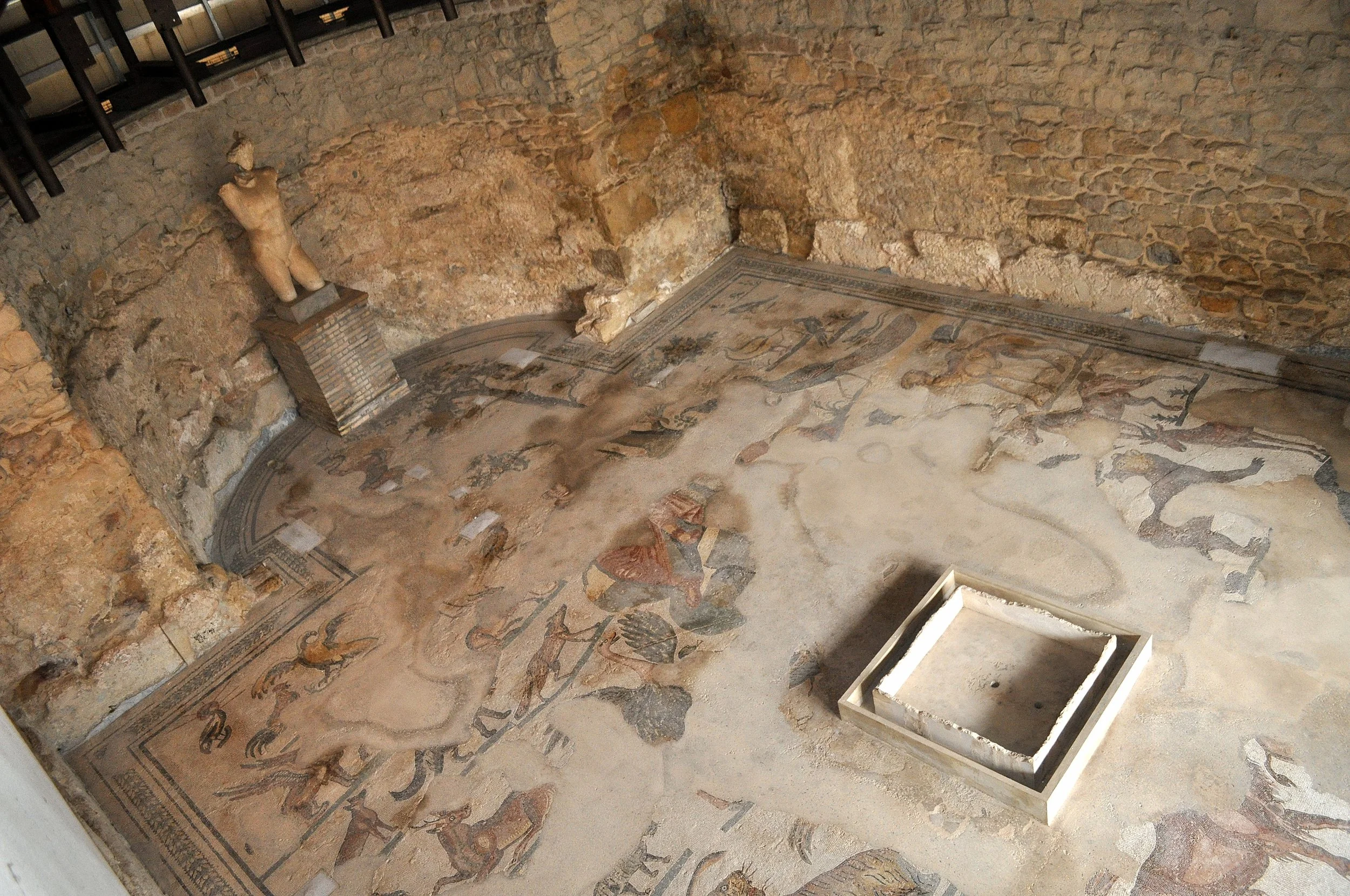

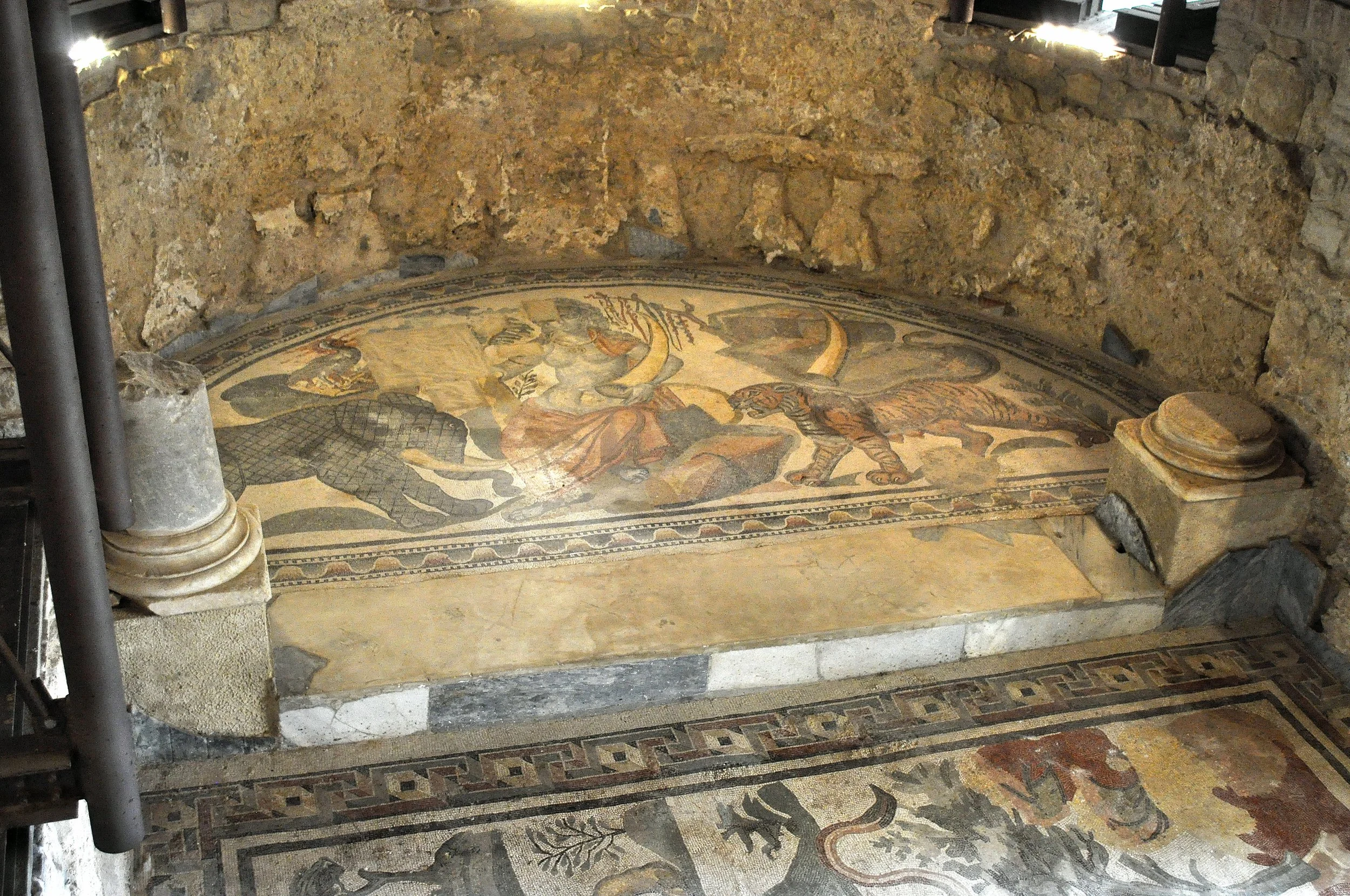
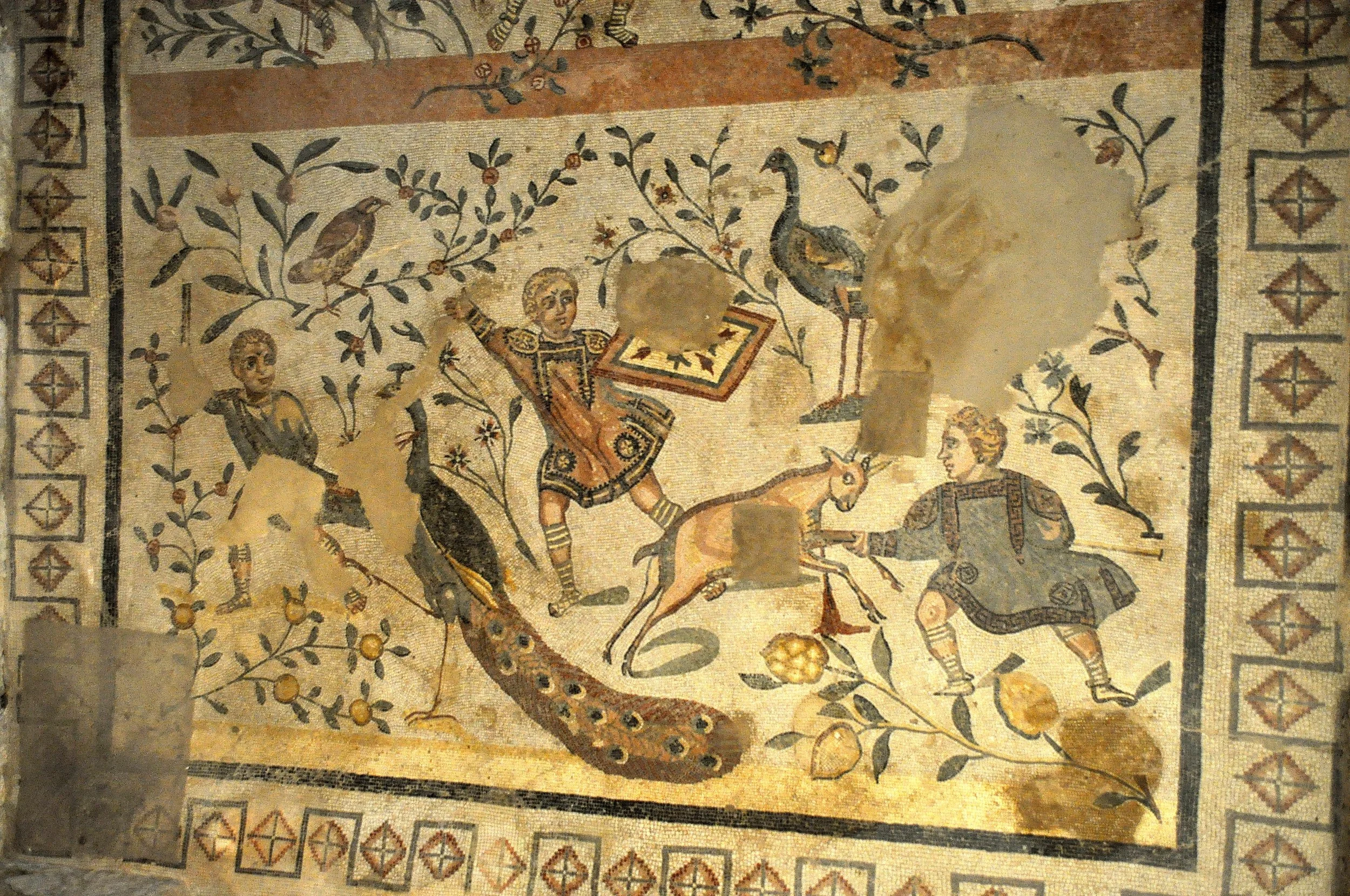
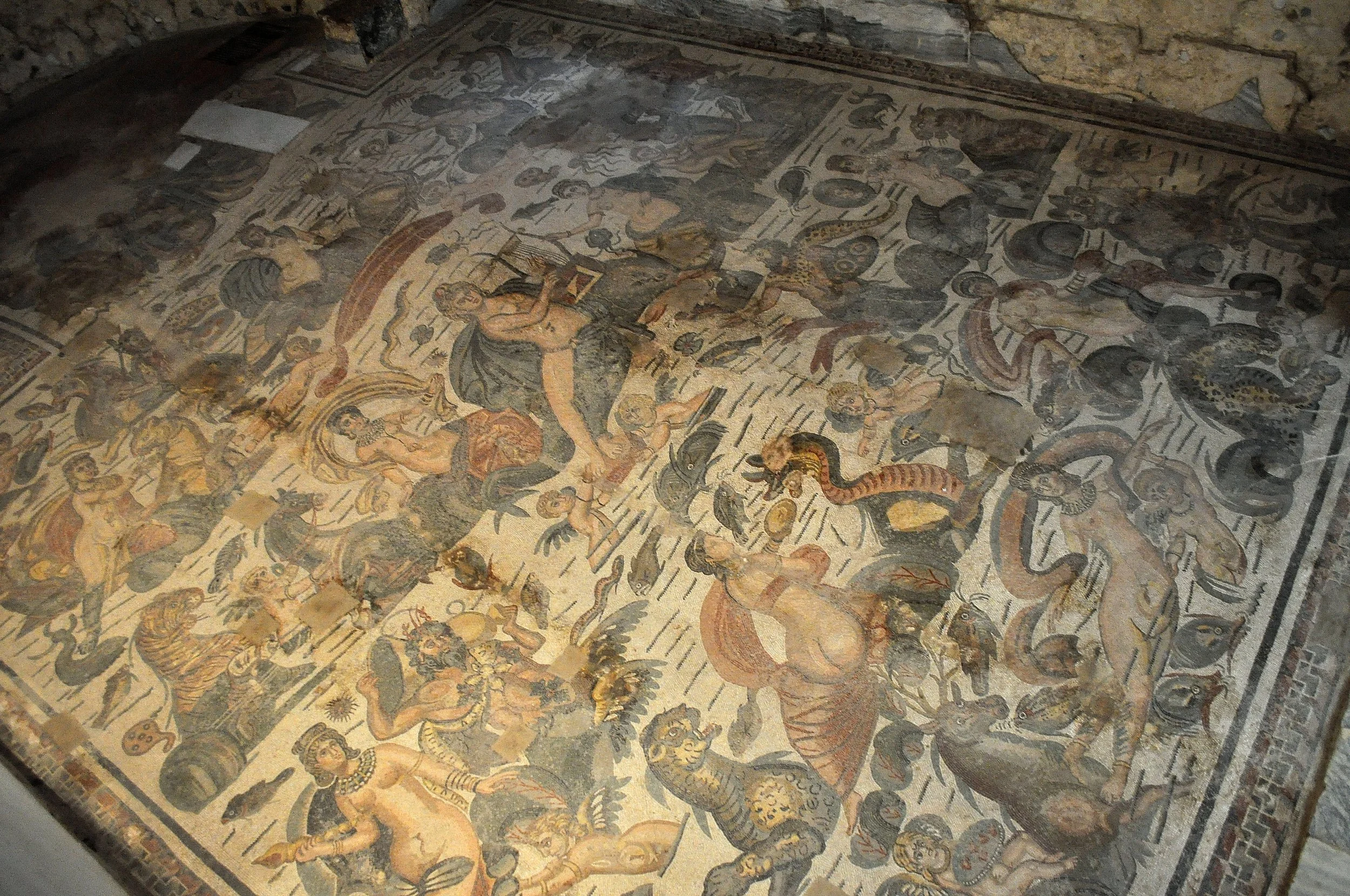
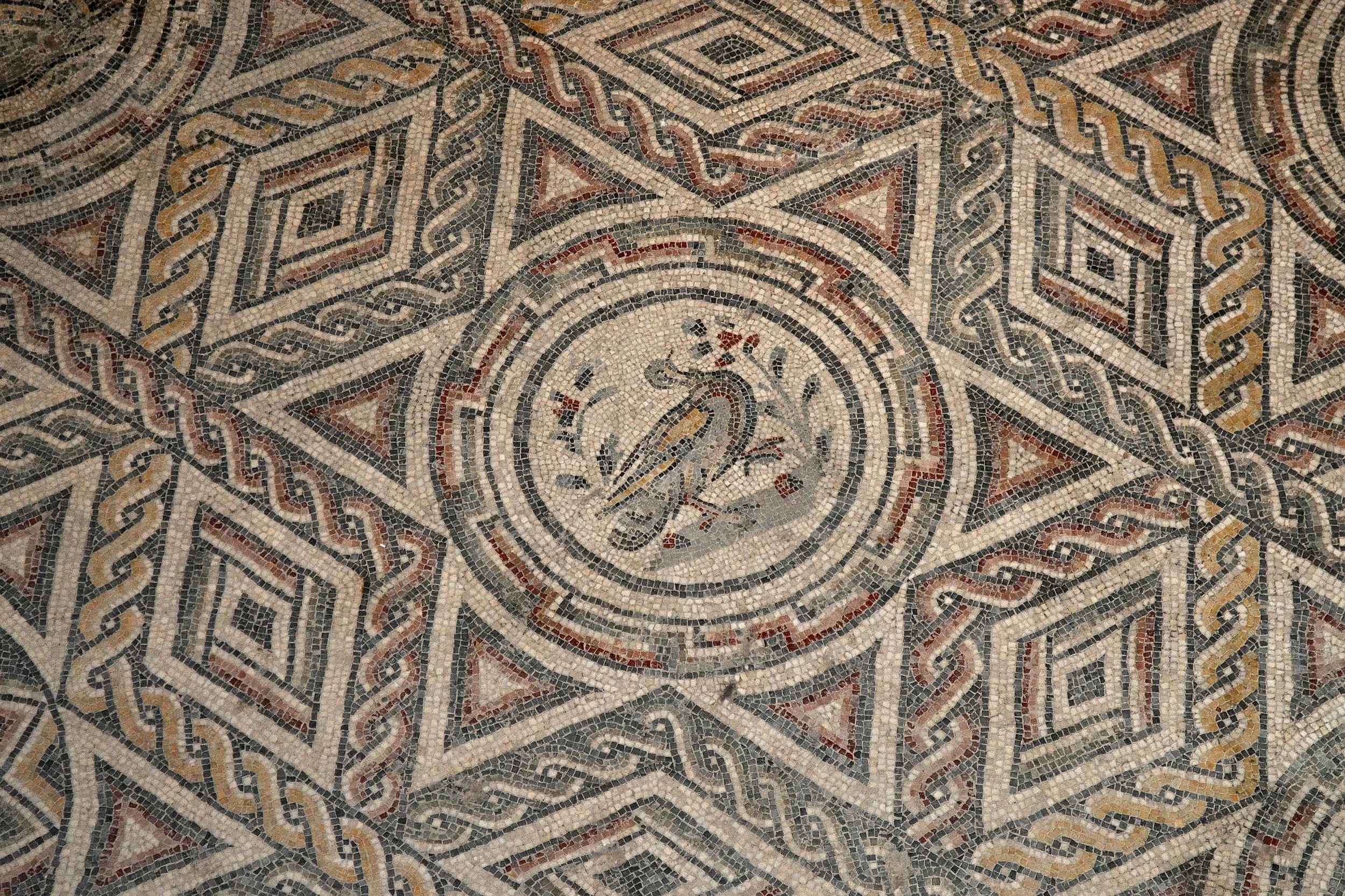
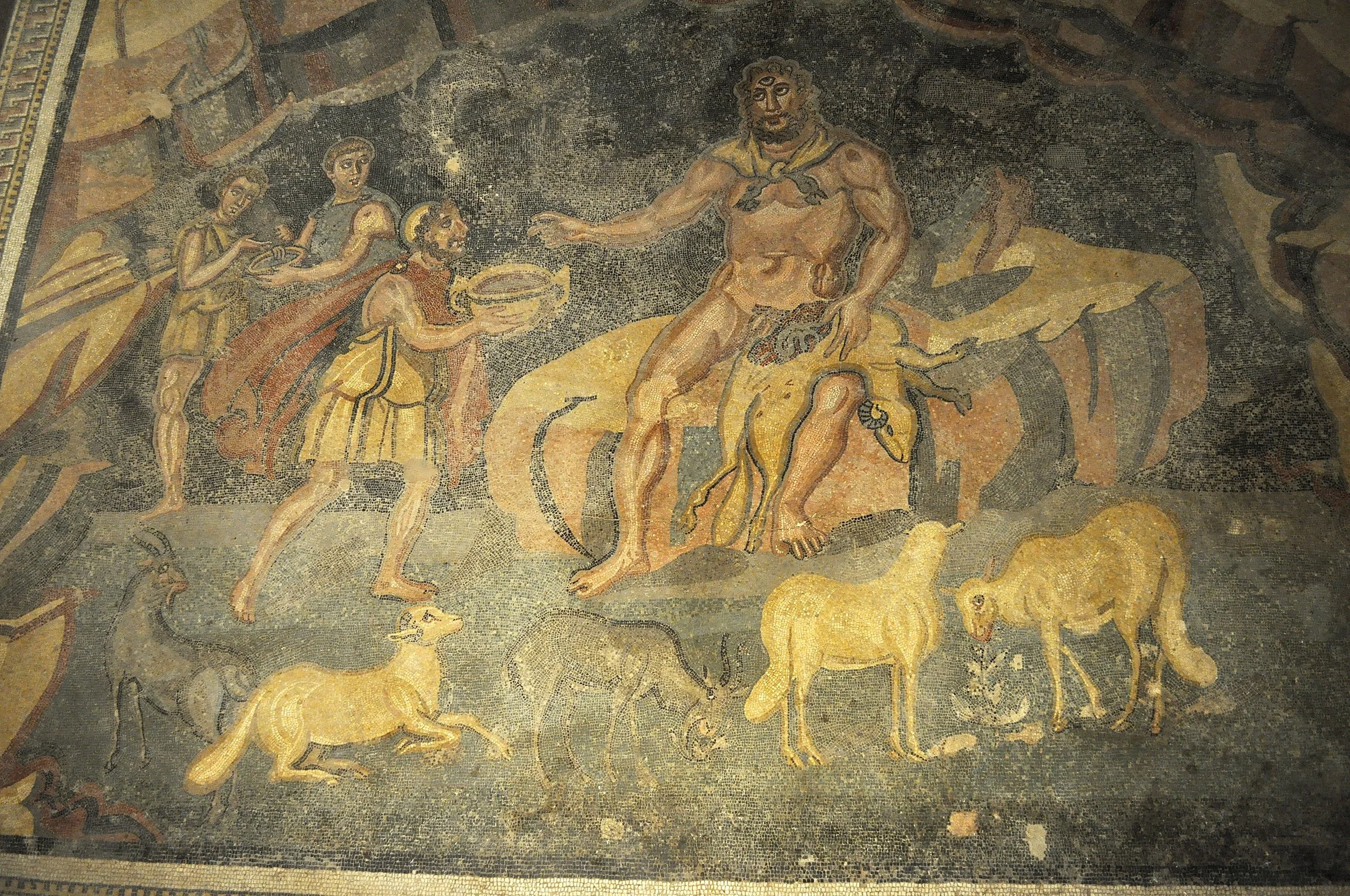
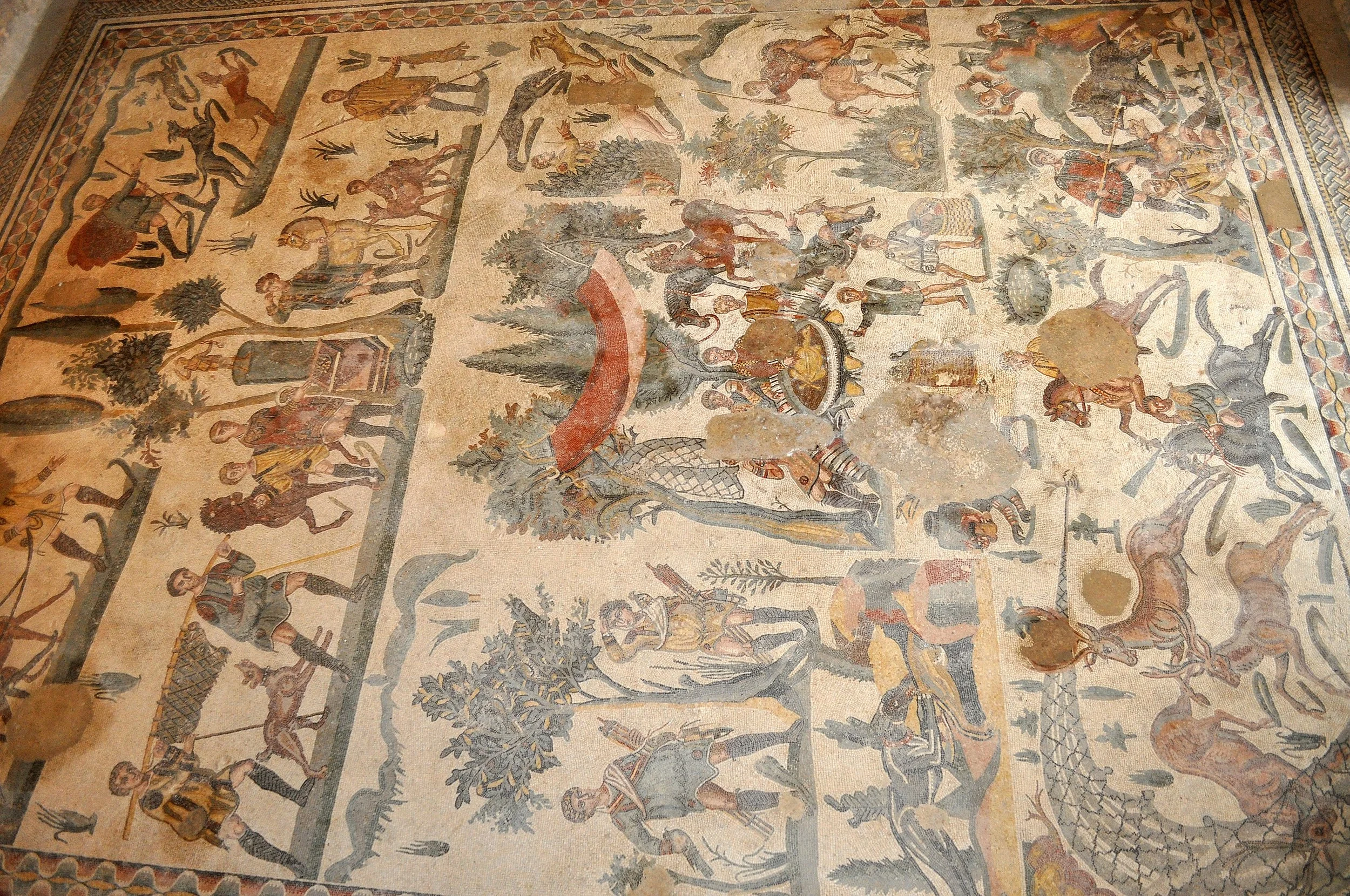


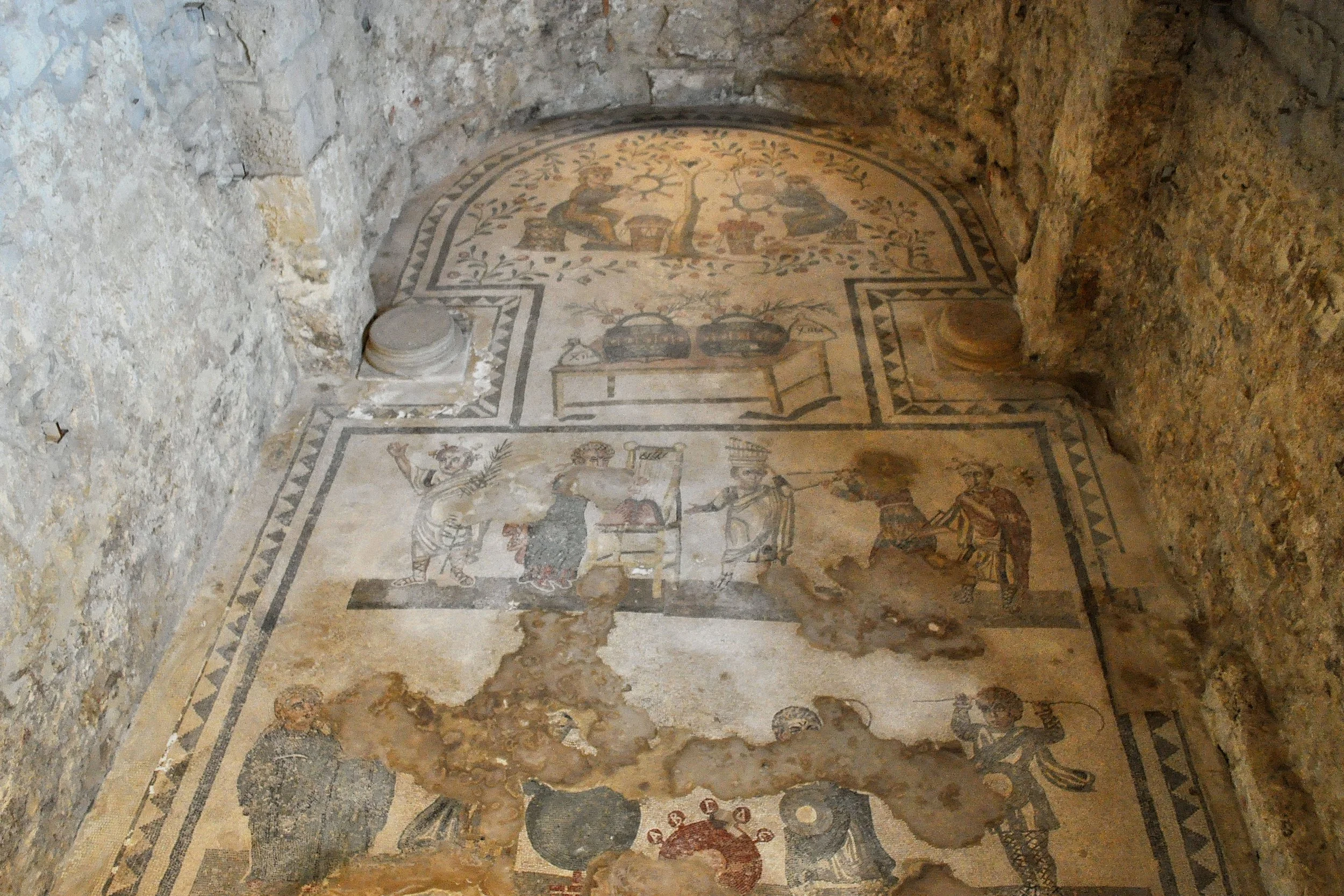
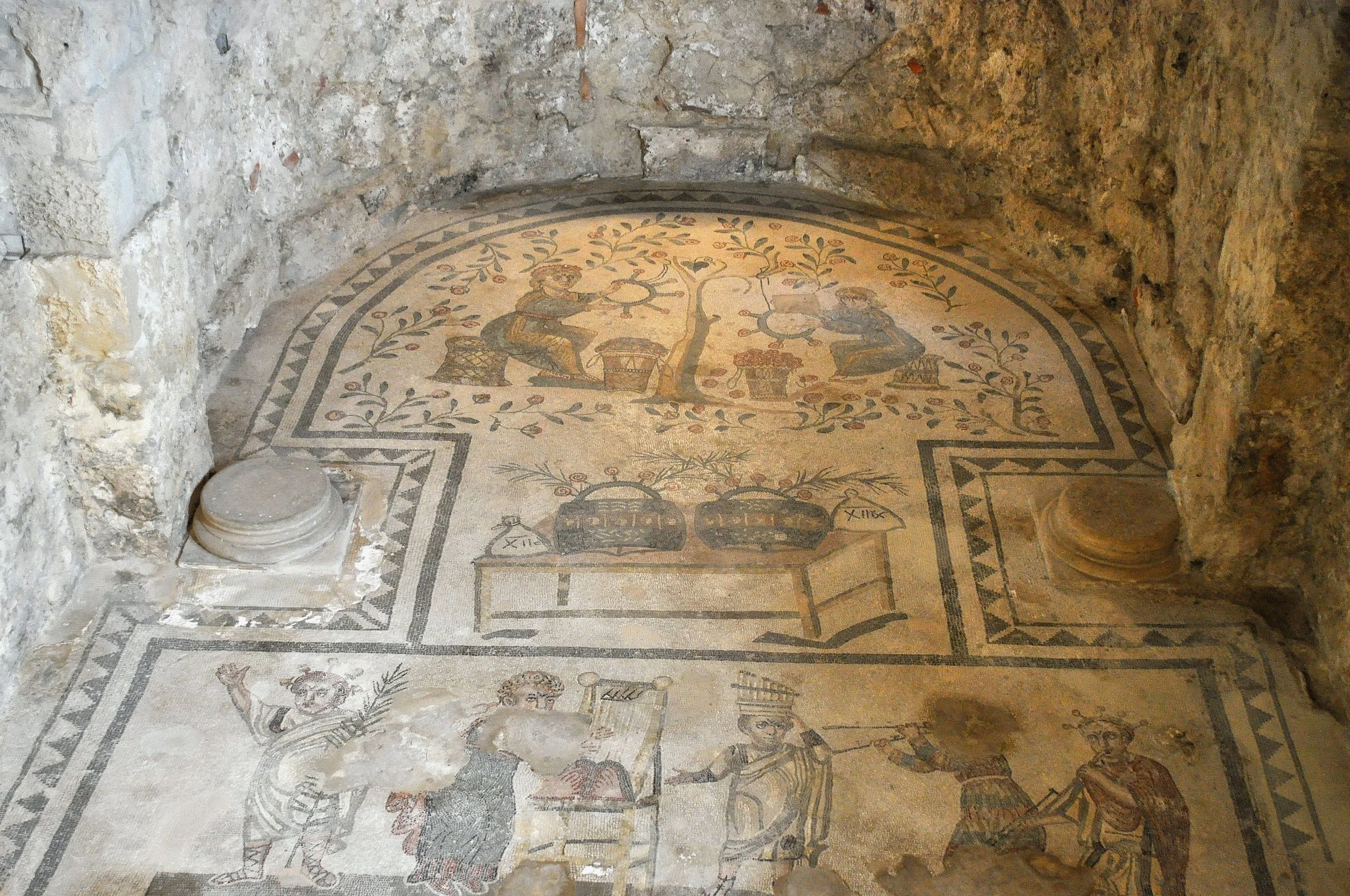


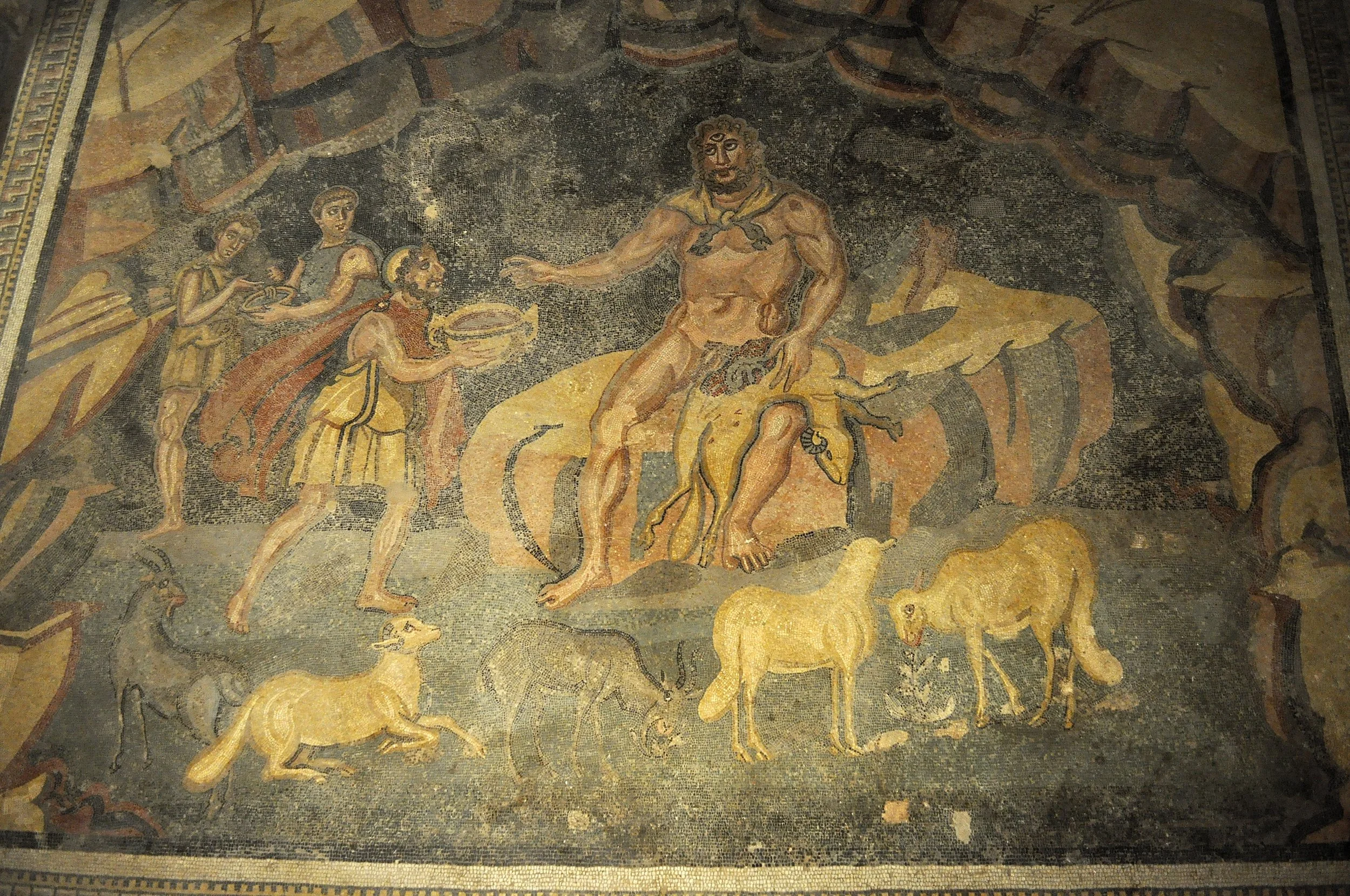
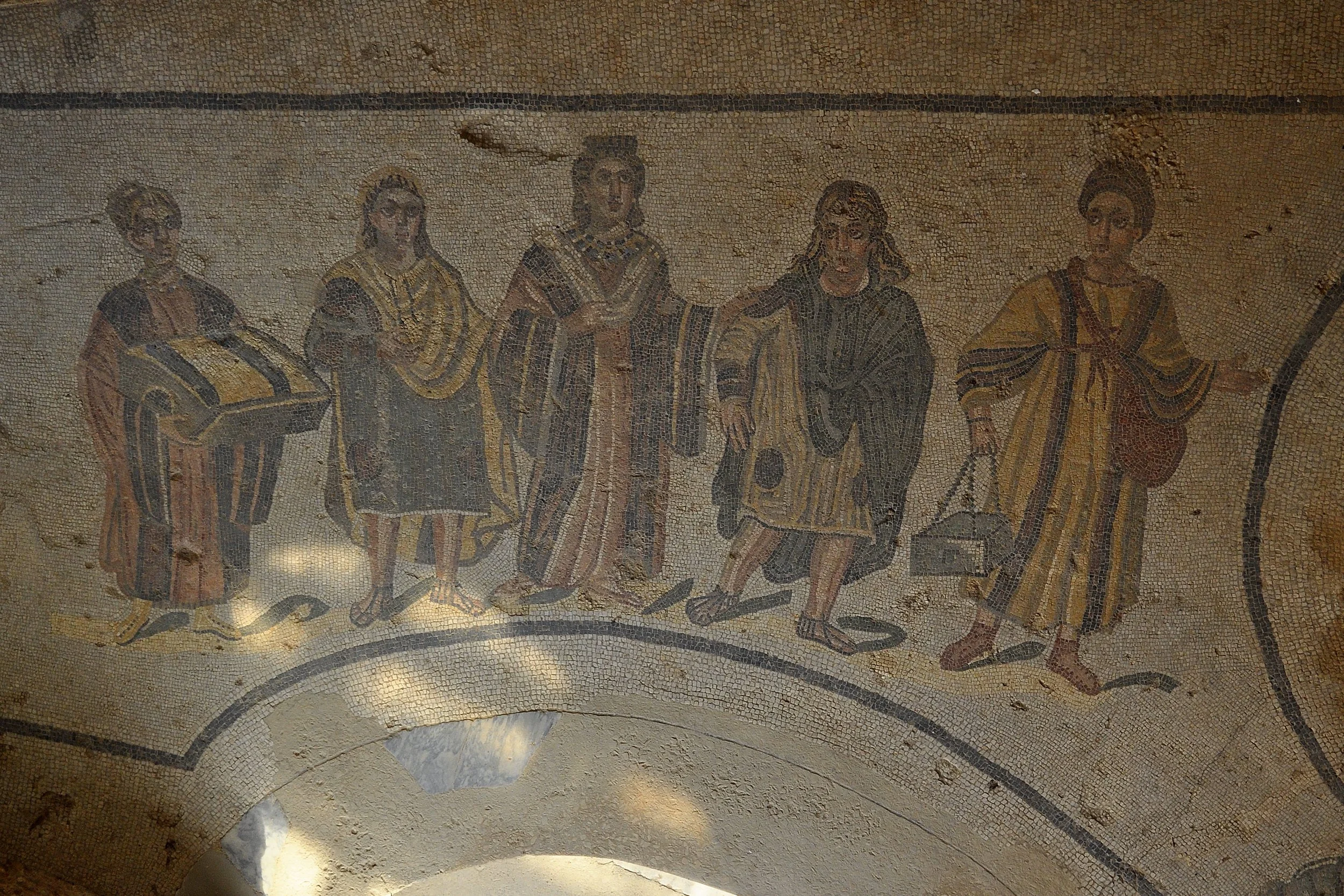

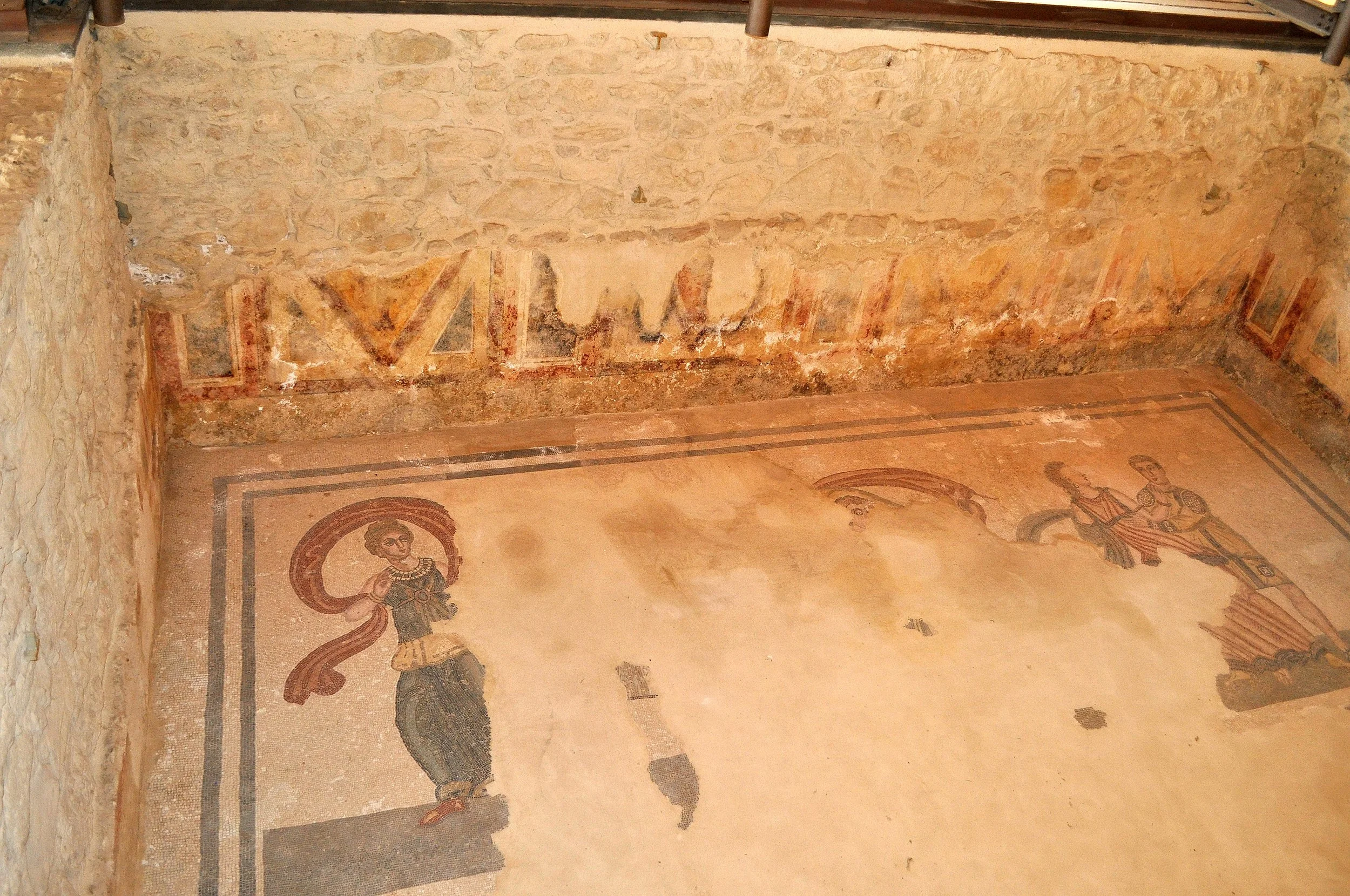
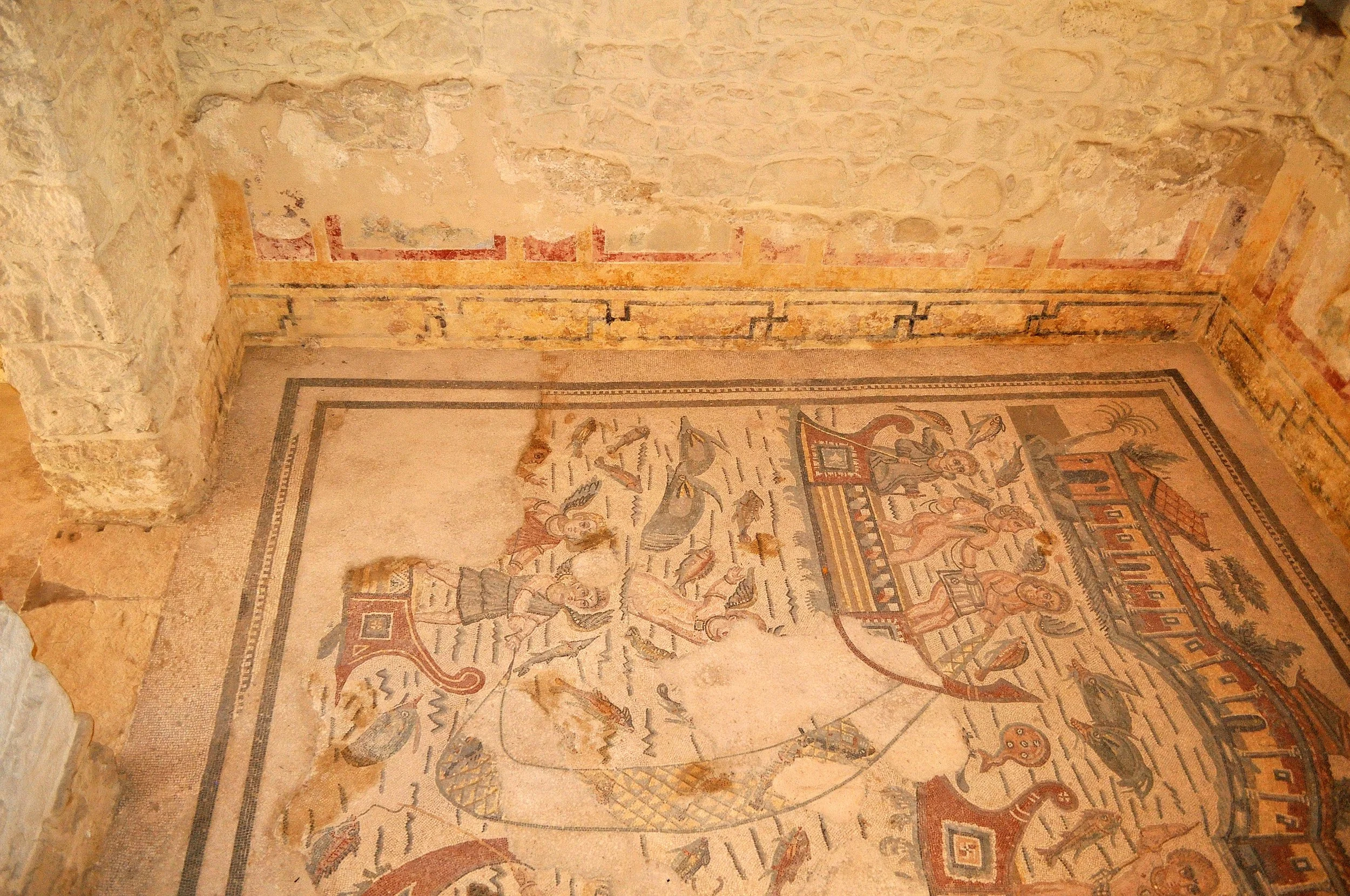
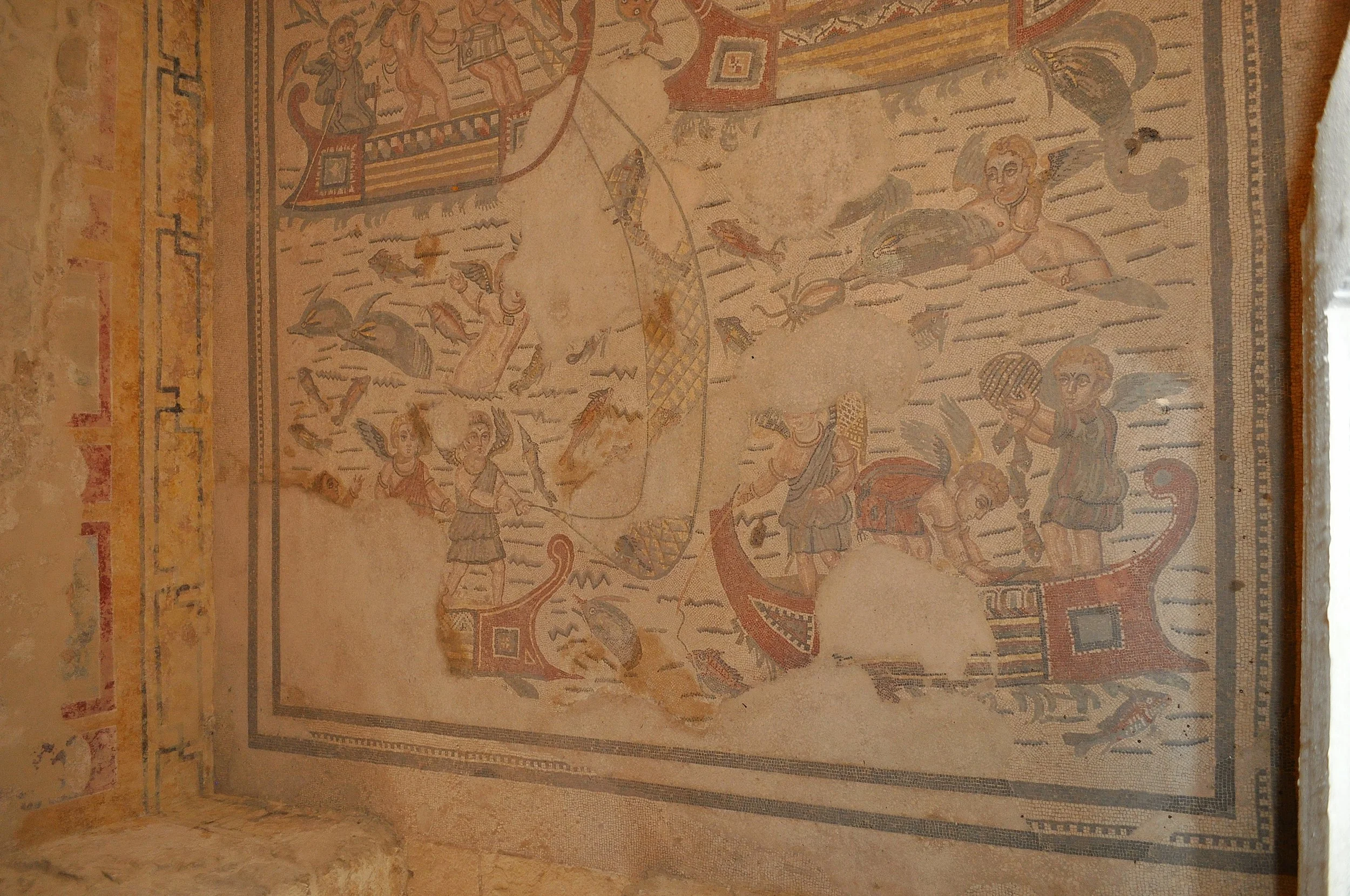
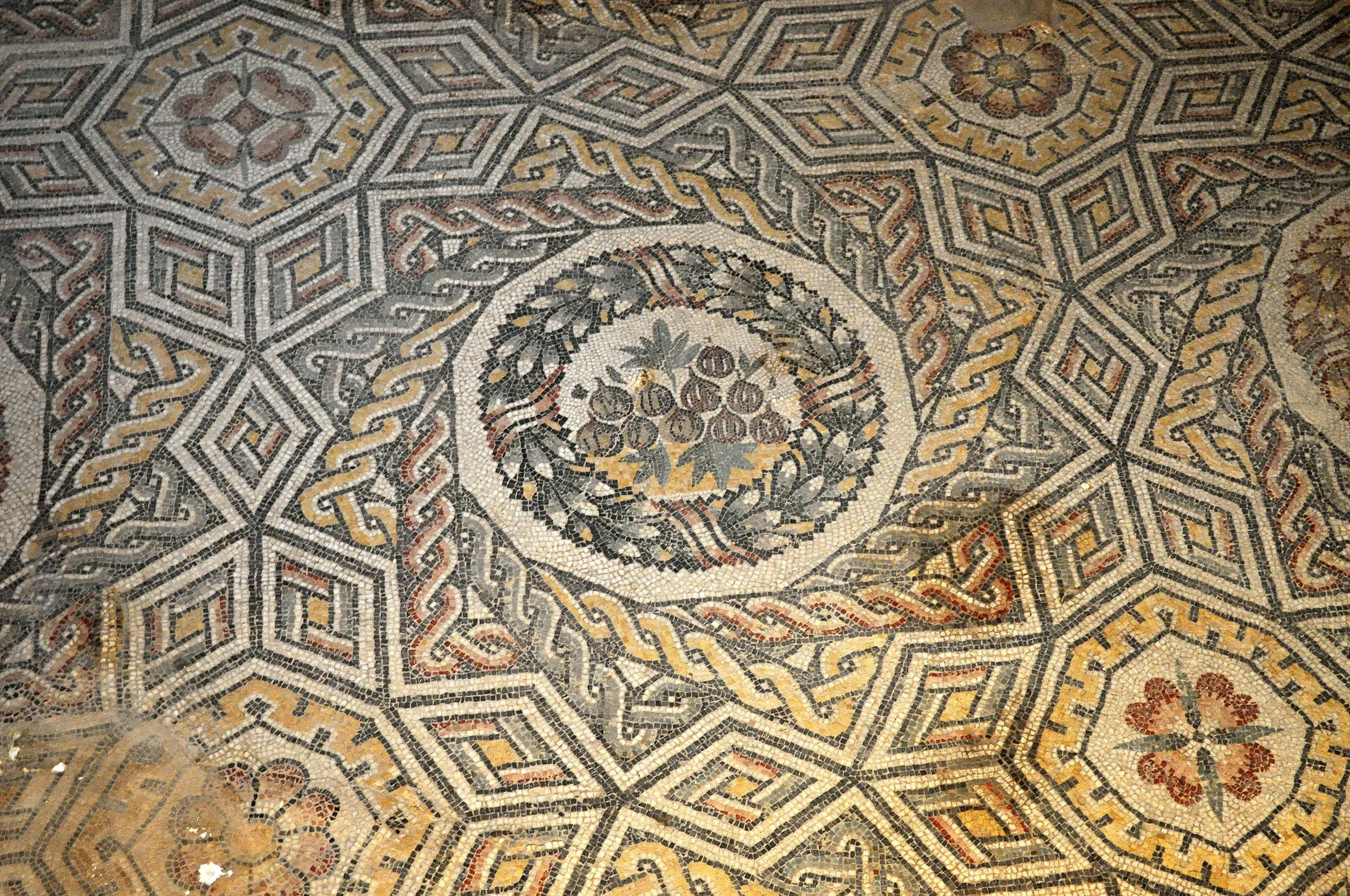
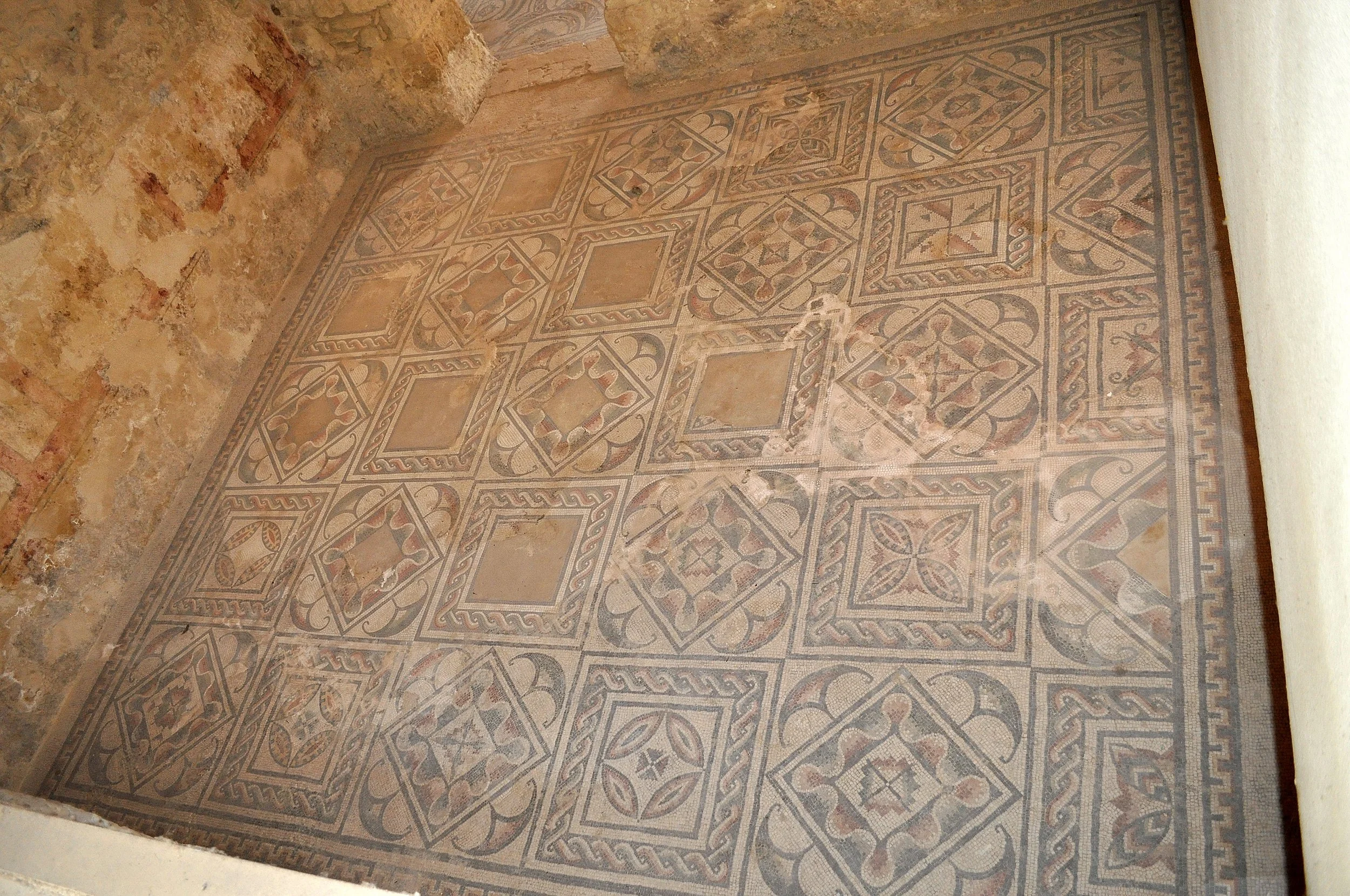
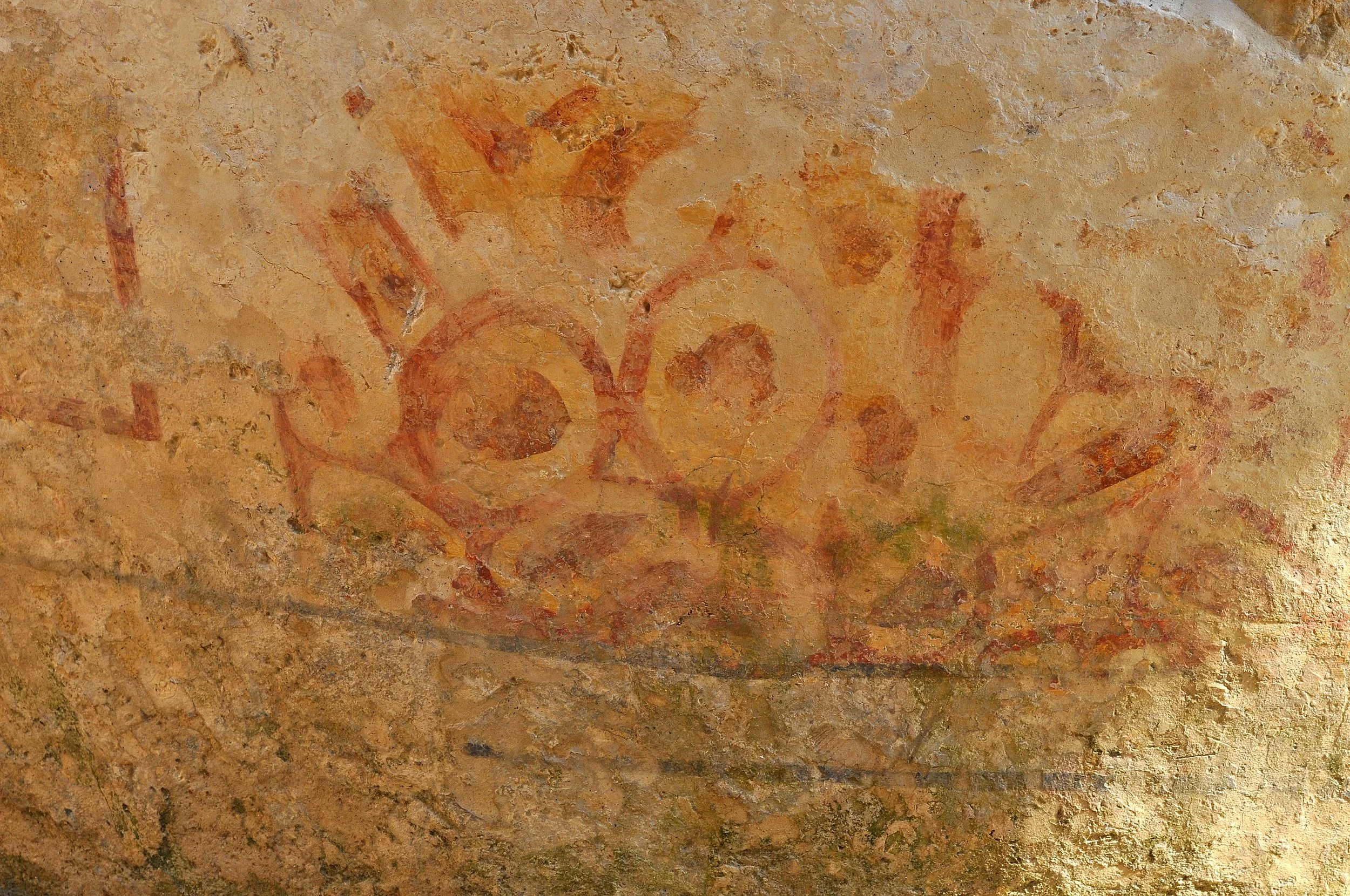
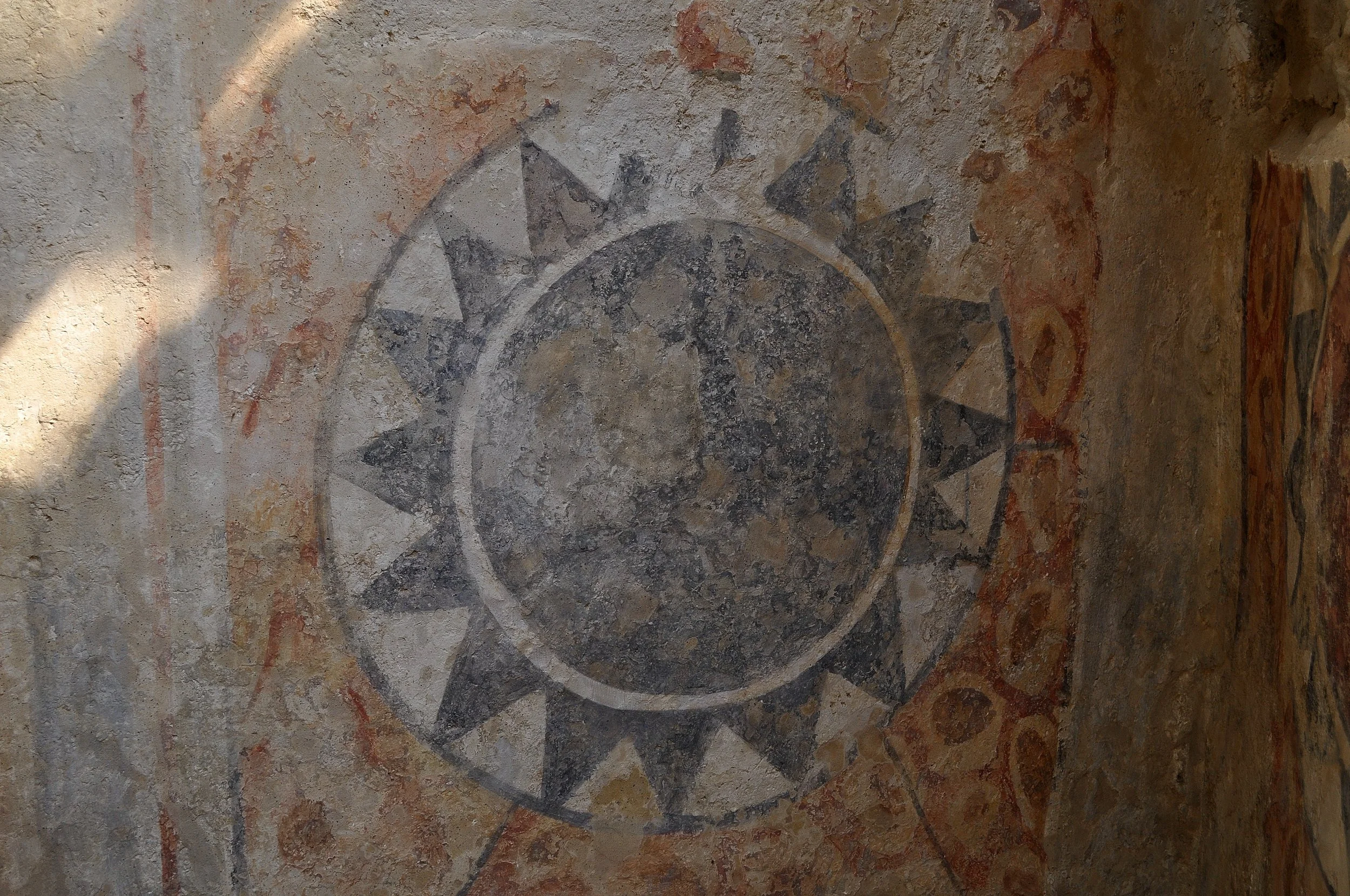
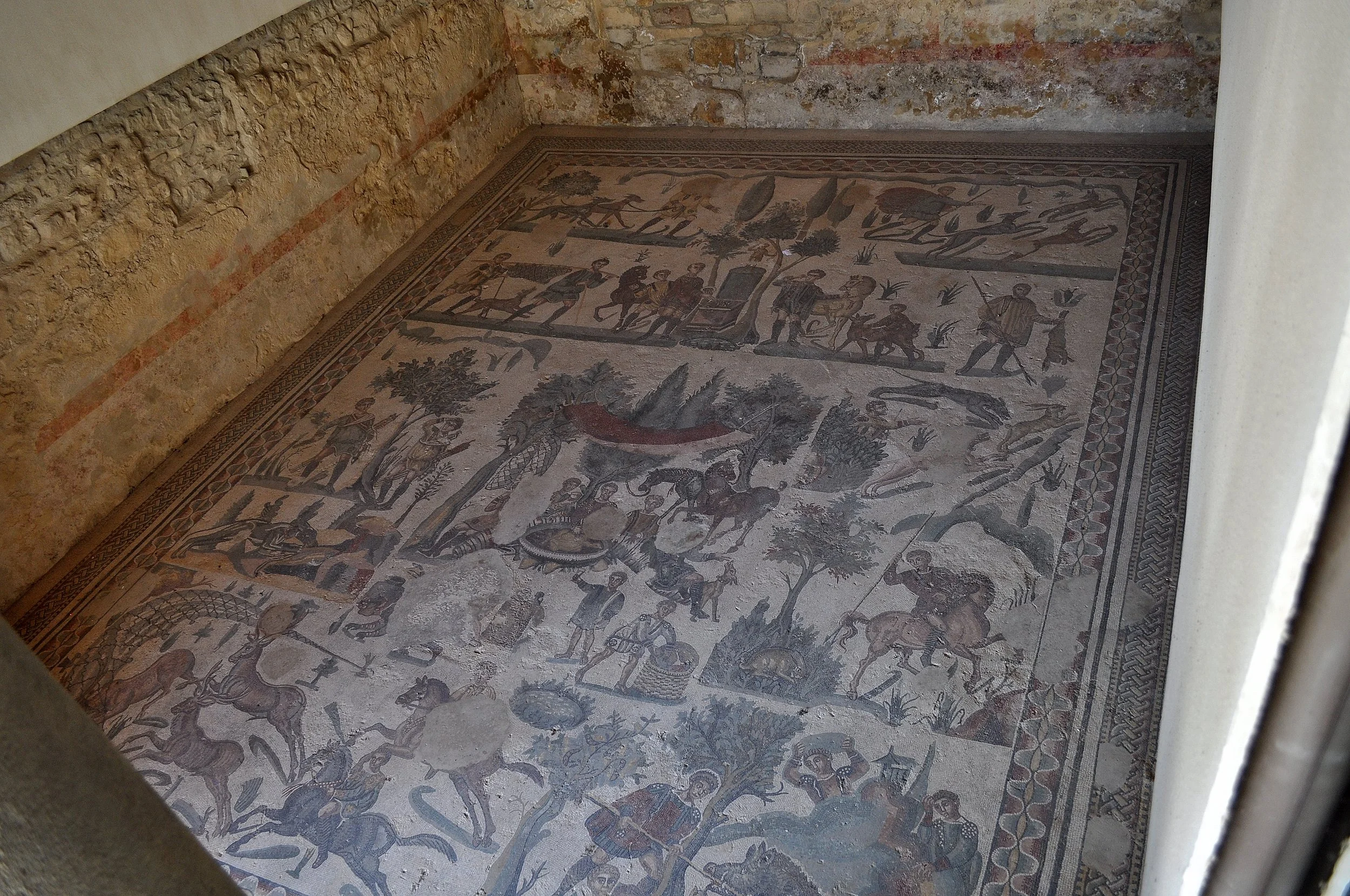
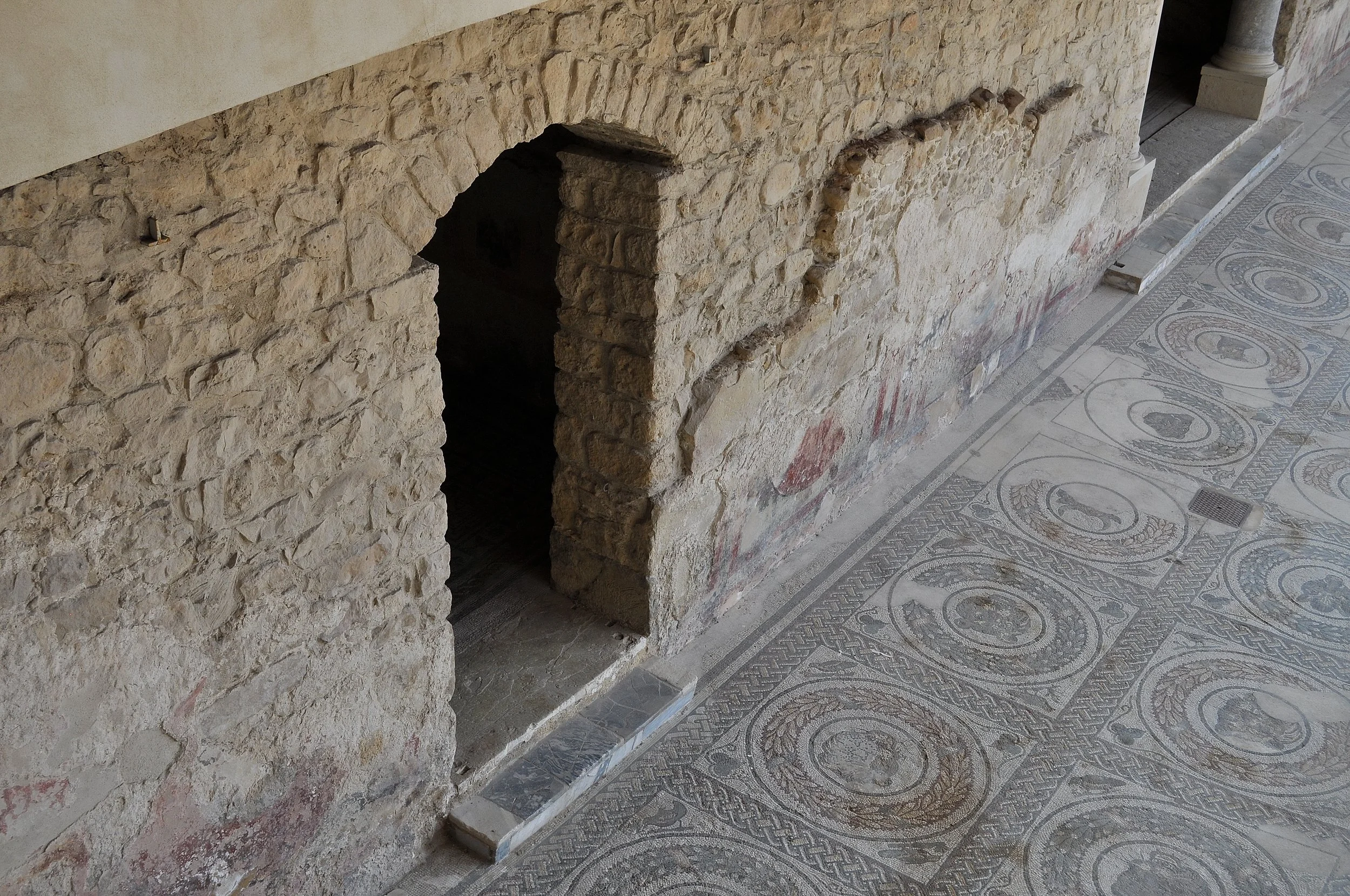
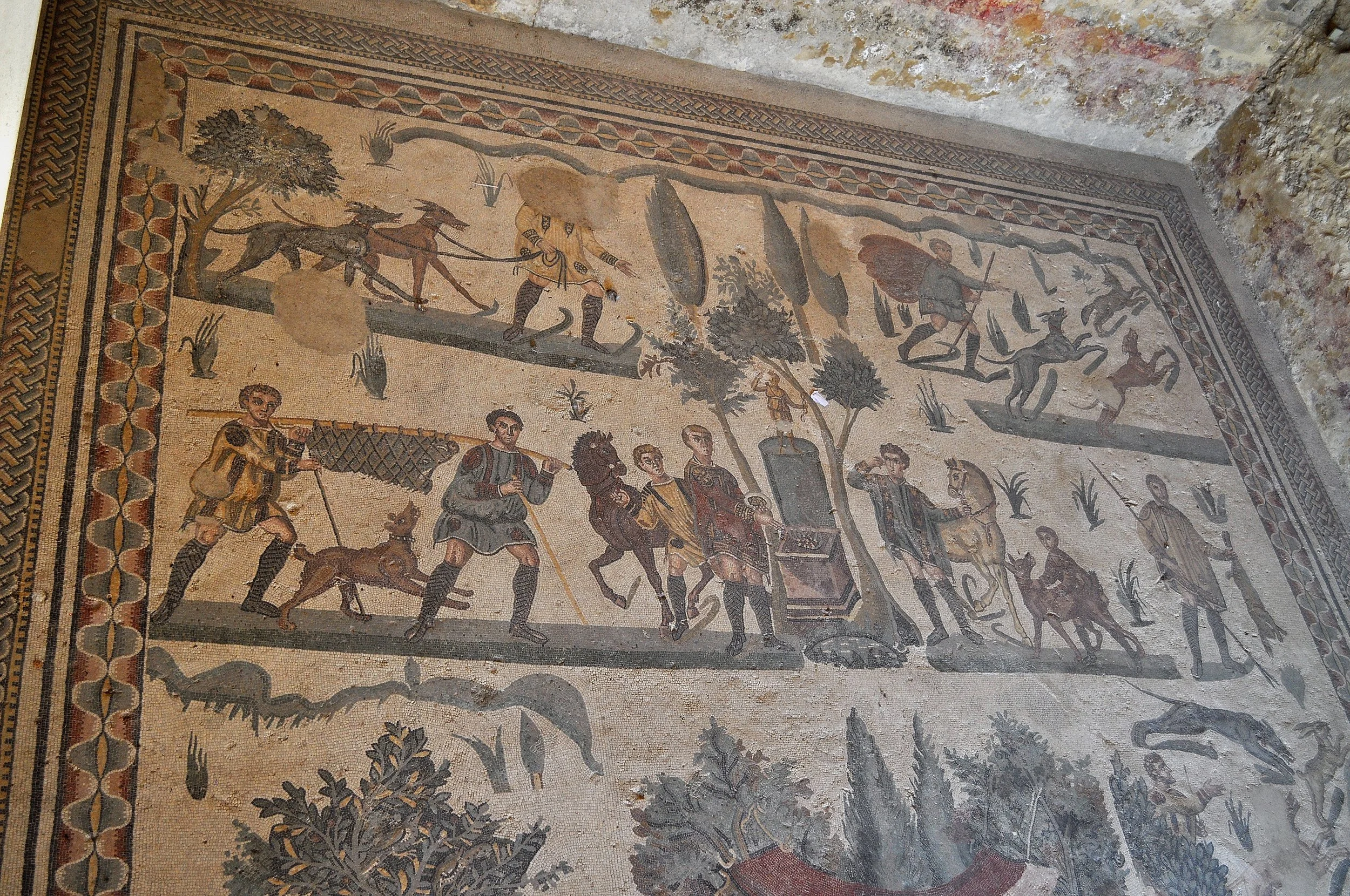
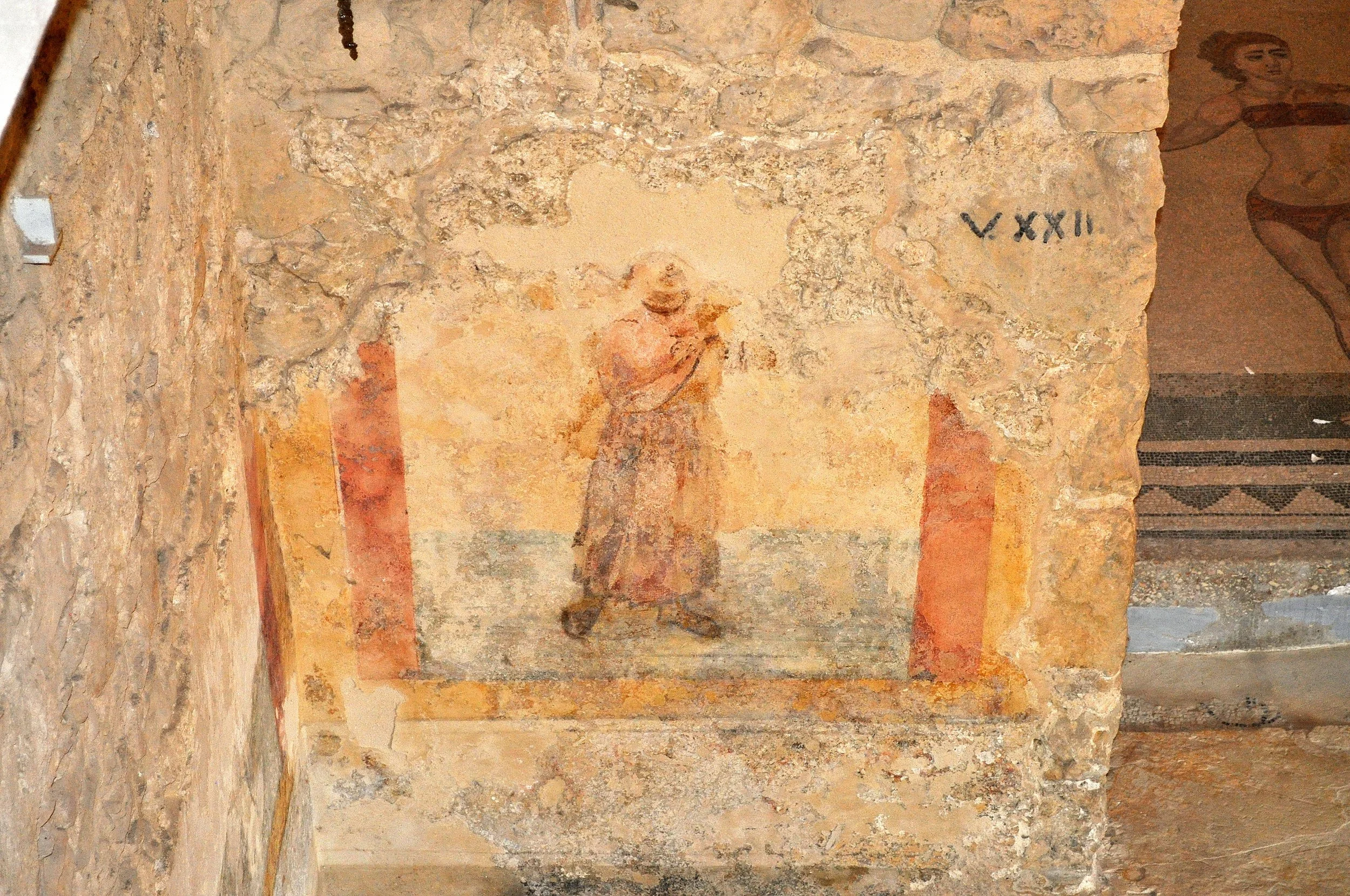


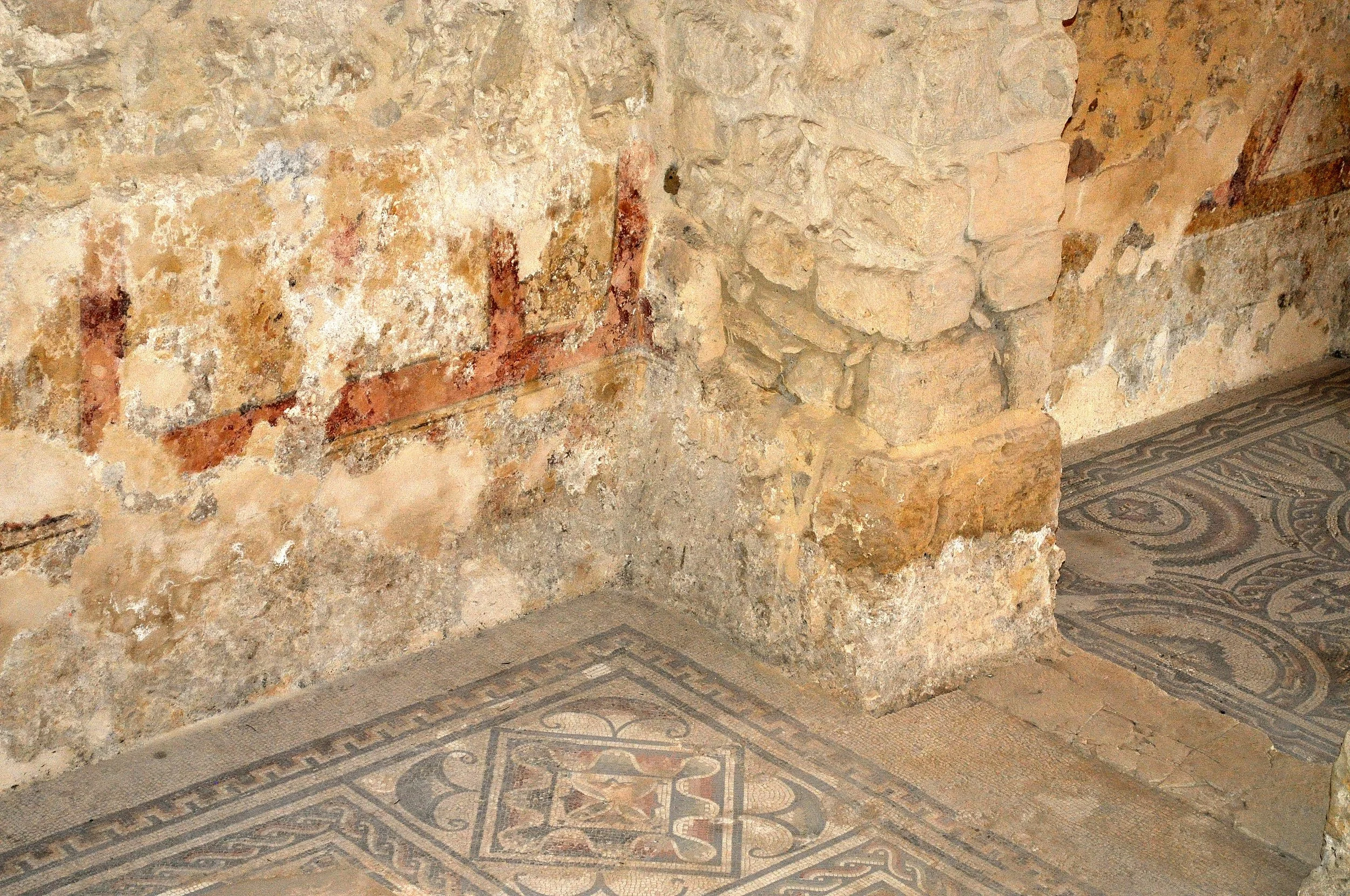


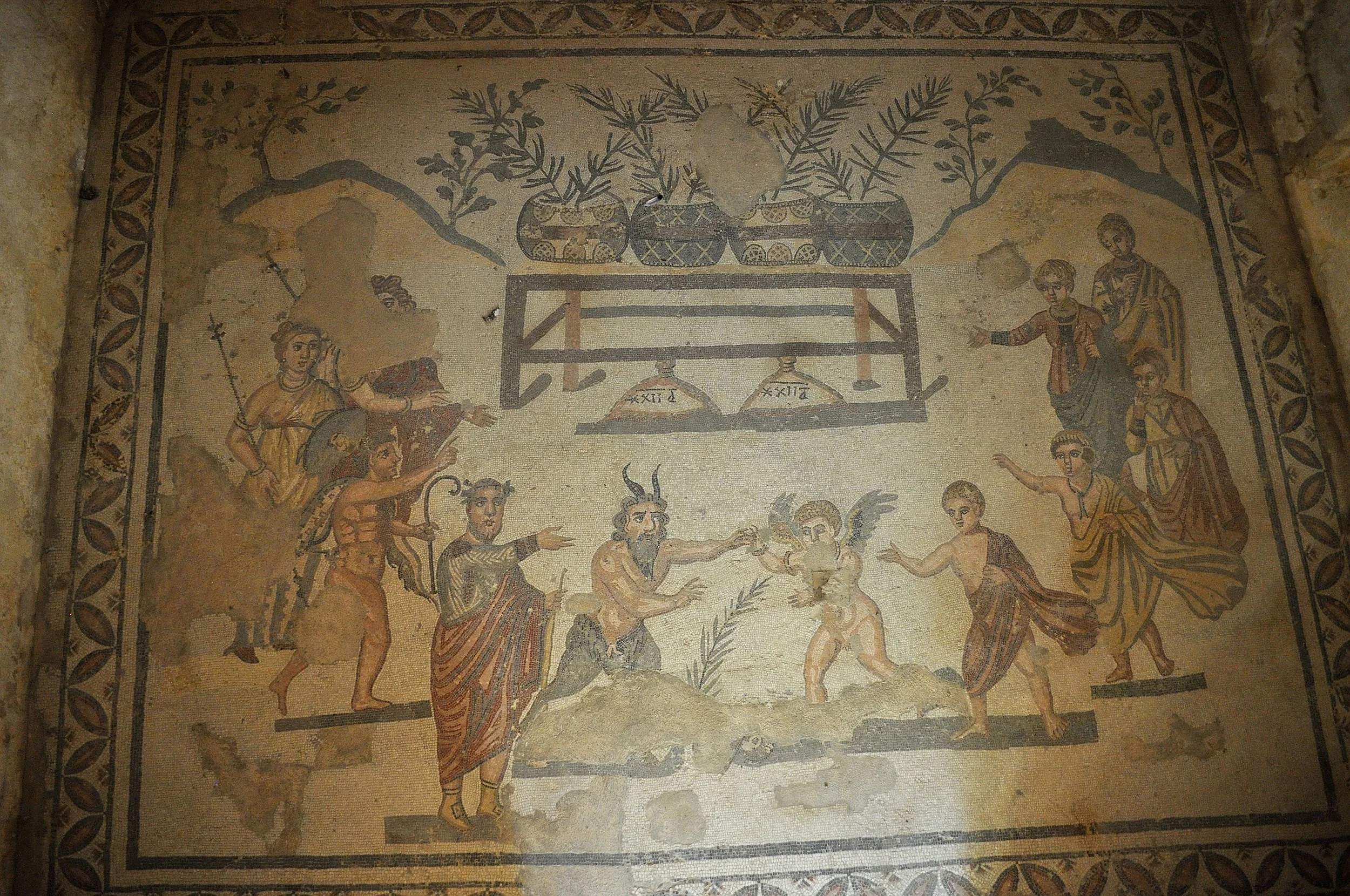

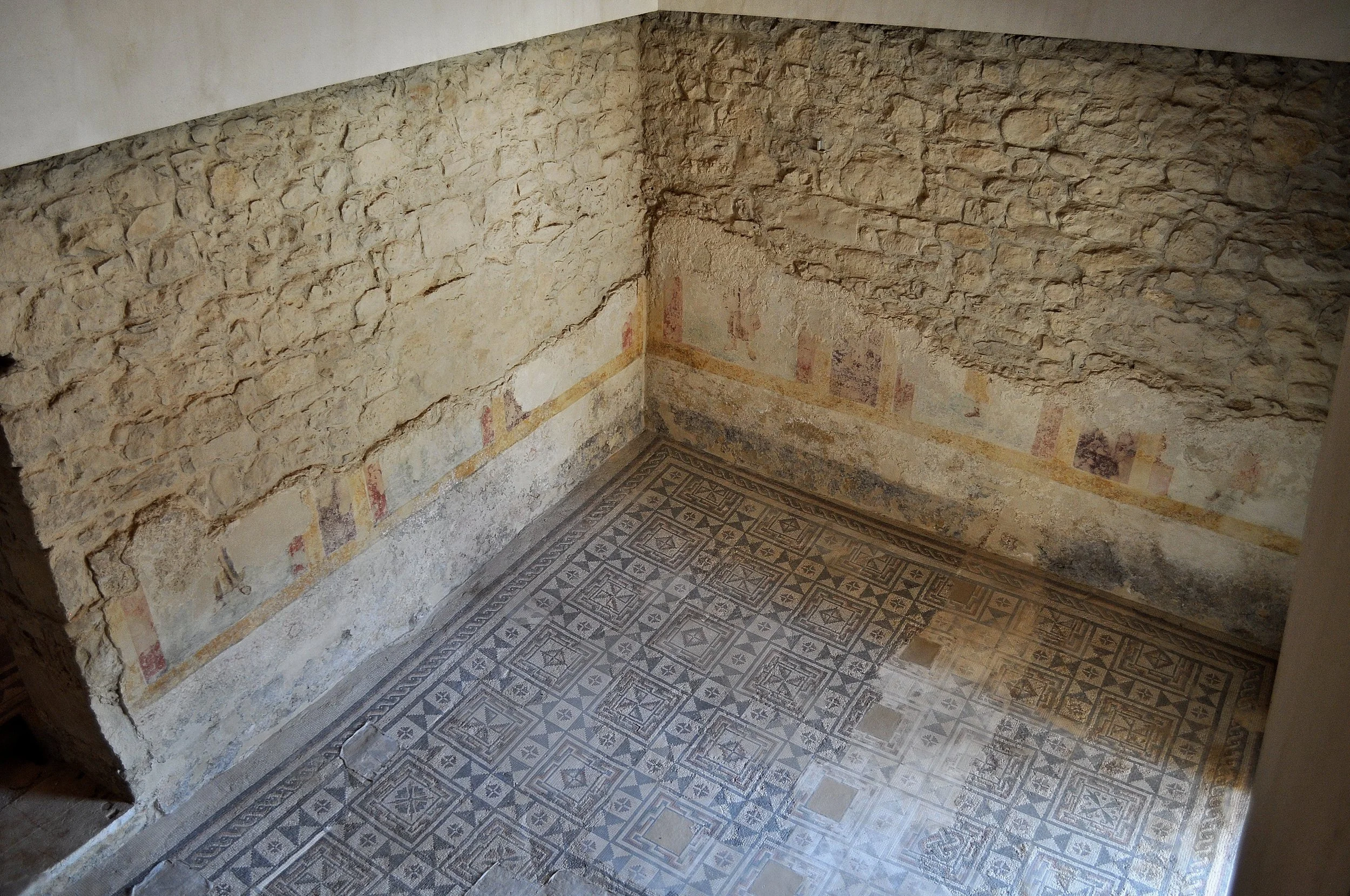
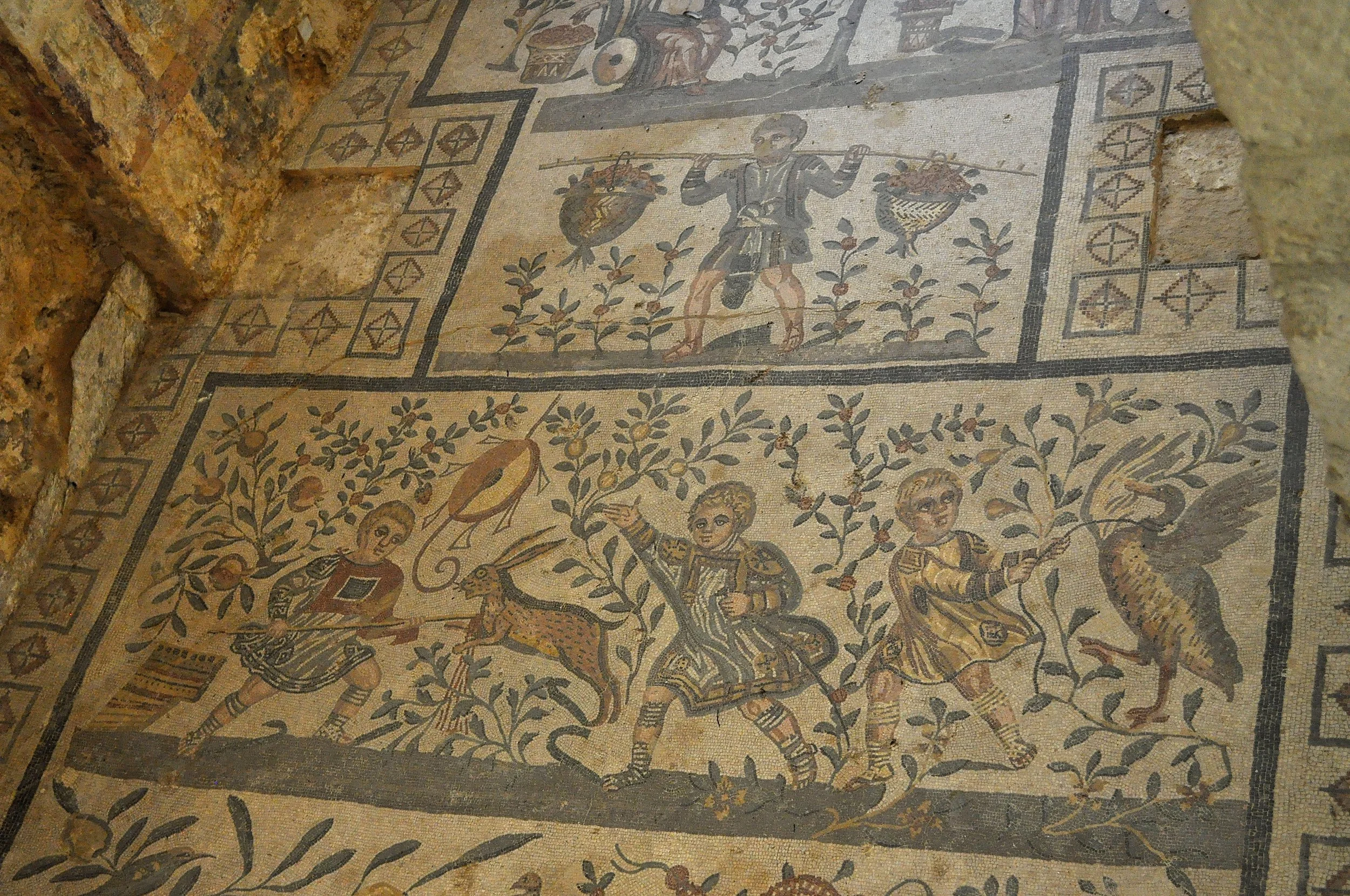

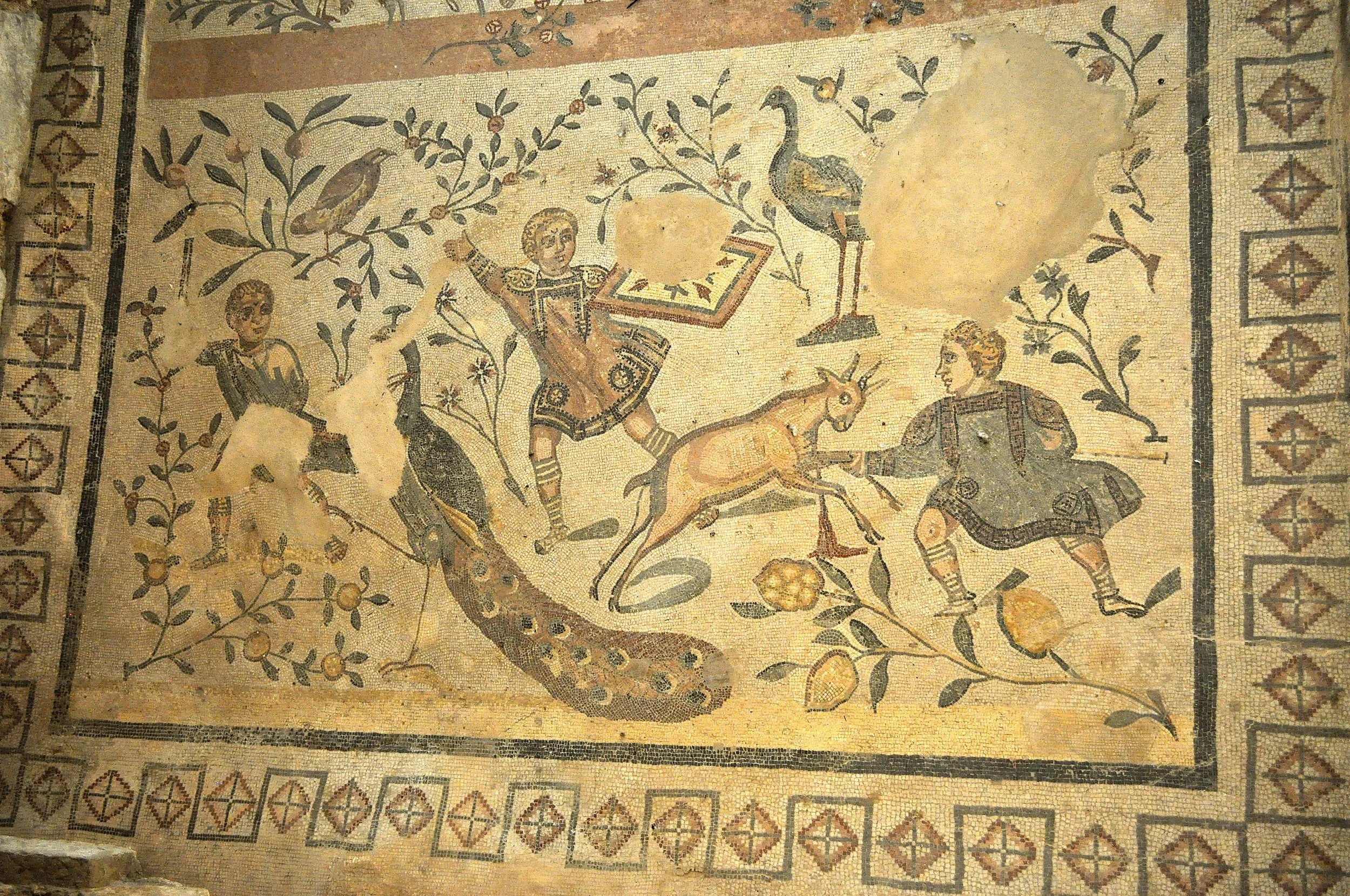
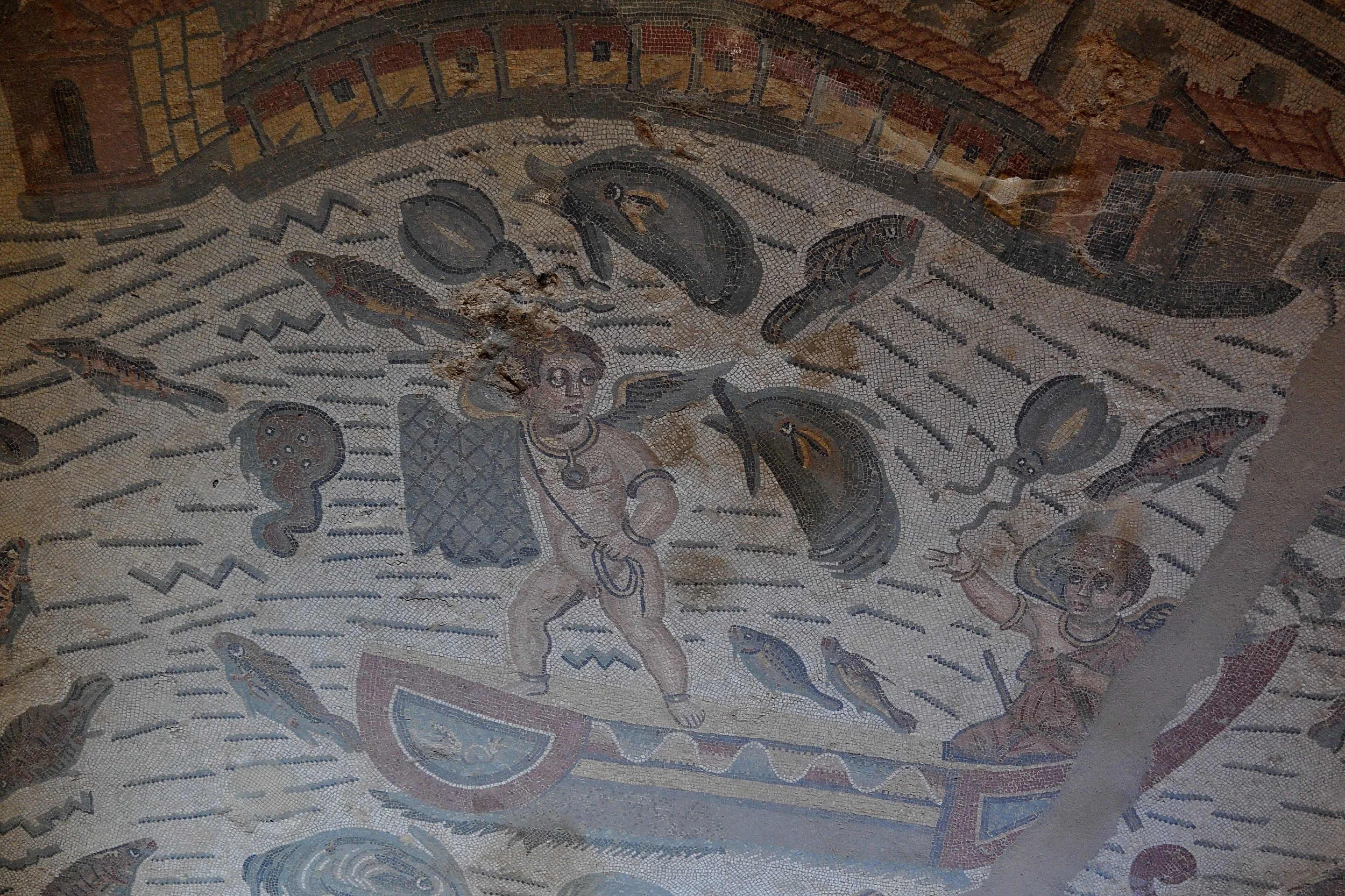
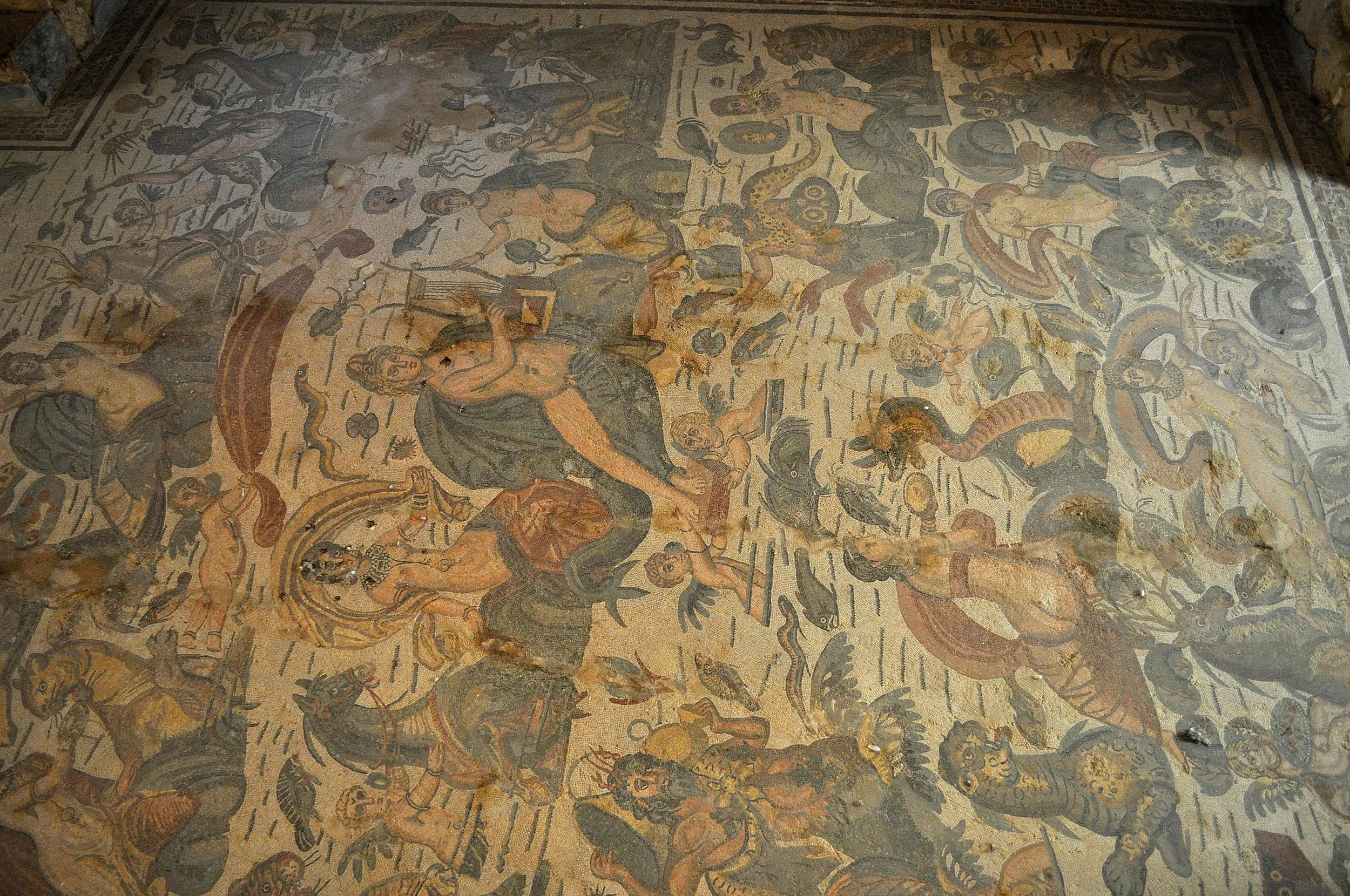
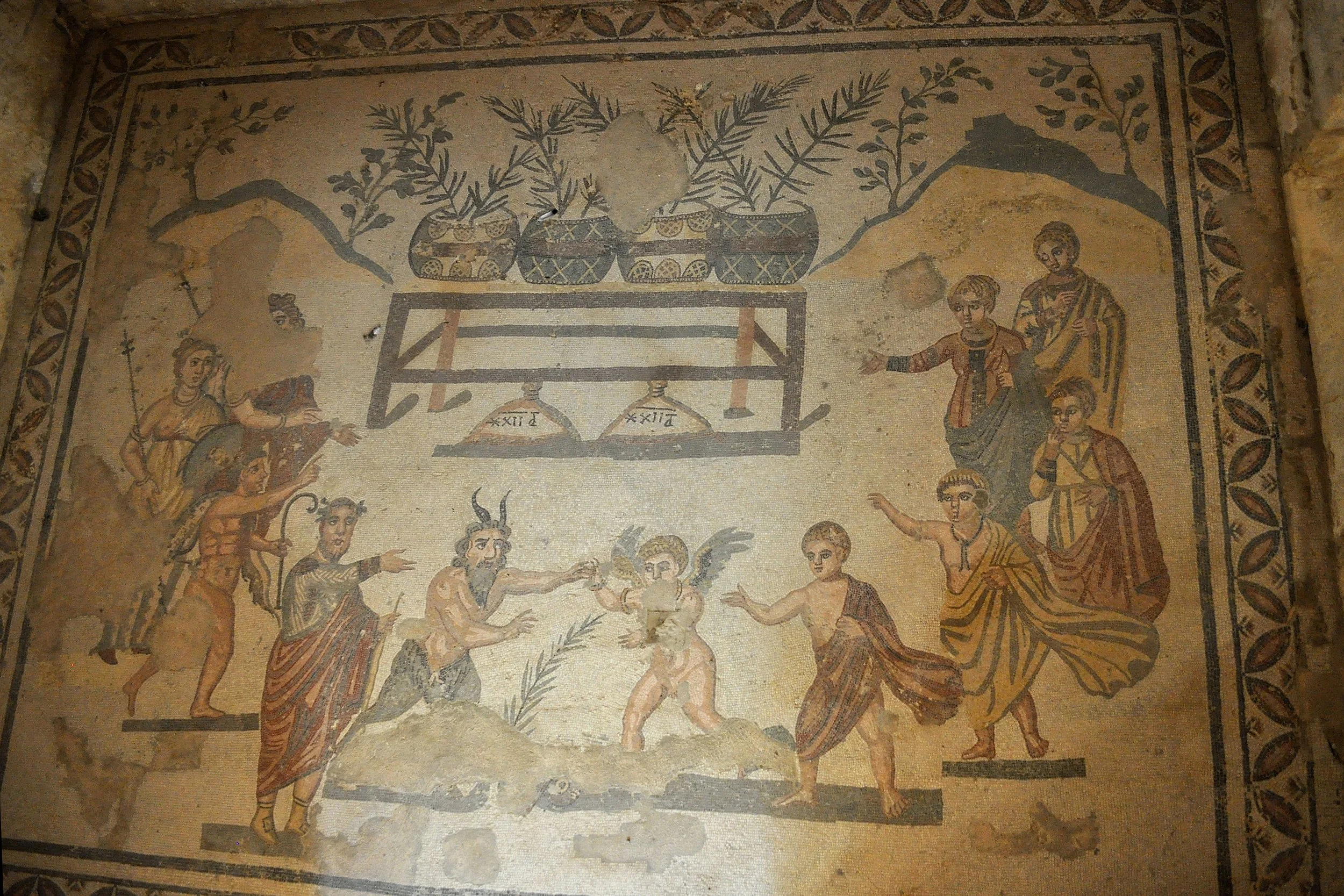




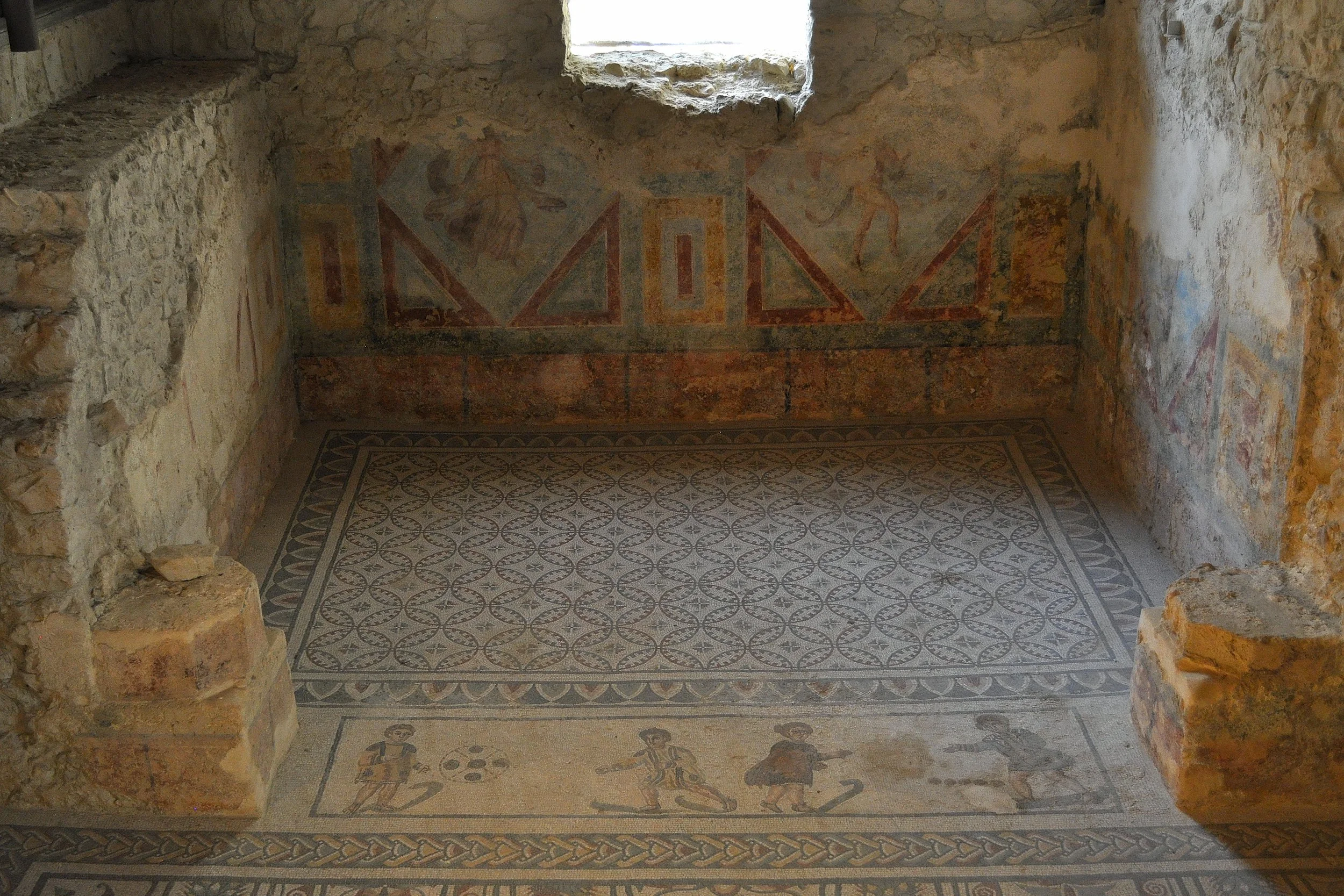

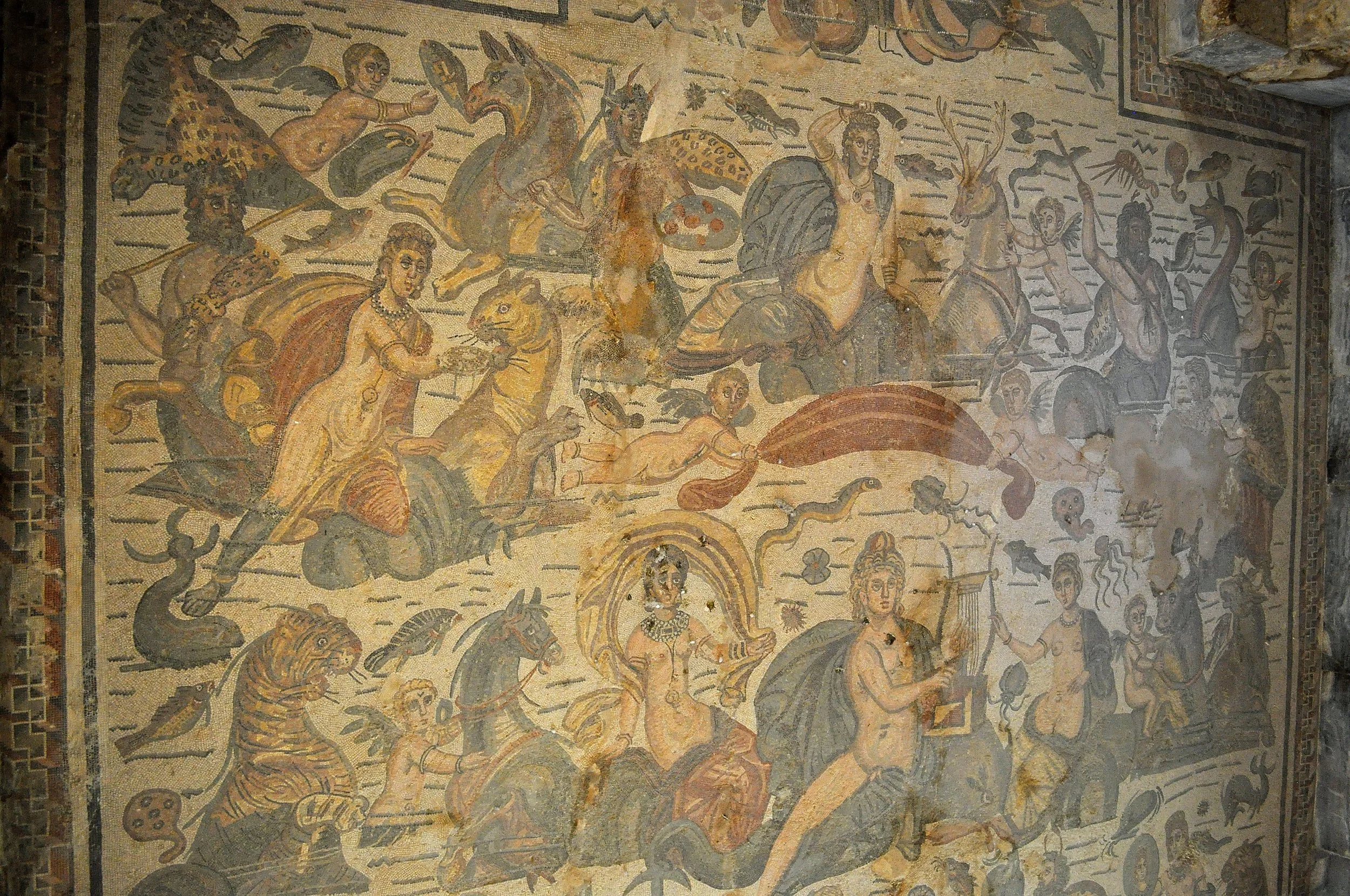
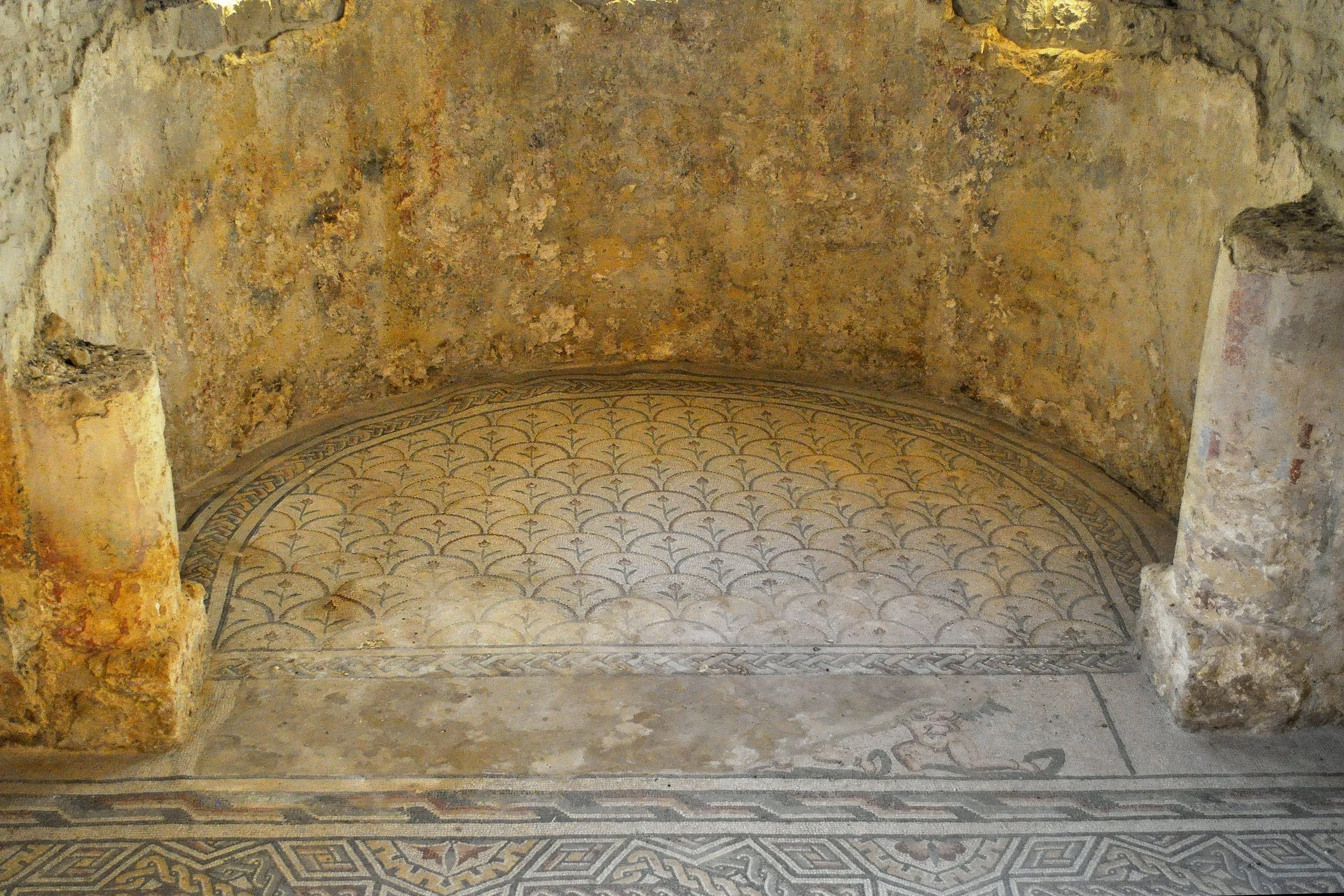
Piero: I agree: the Villa del Casale is not just an archaeological site, but a journey through time, an immersion in the beauty, culture, and art of an incredibly fascinating historical period.
Angela: no doubt about it, it was an unforgettable visit. Let’s relive it in this short video.

